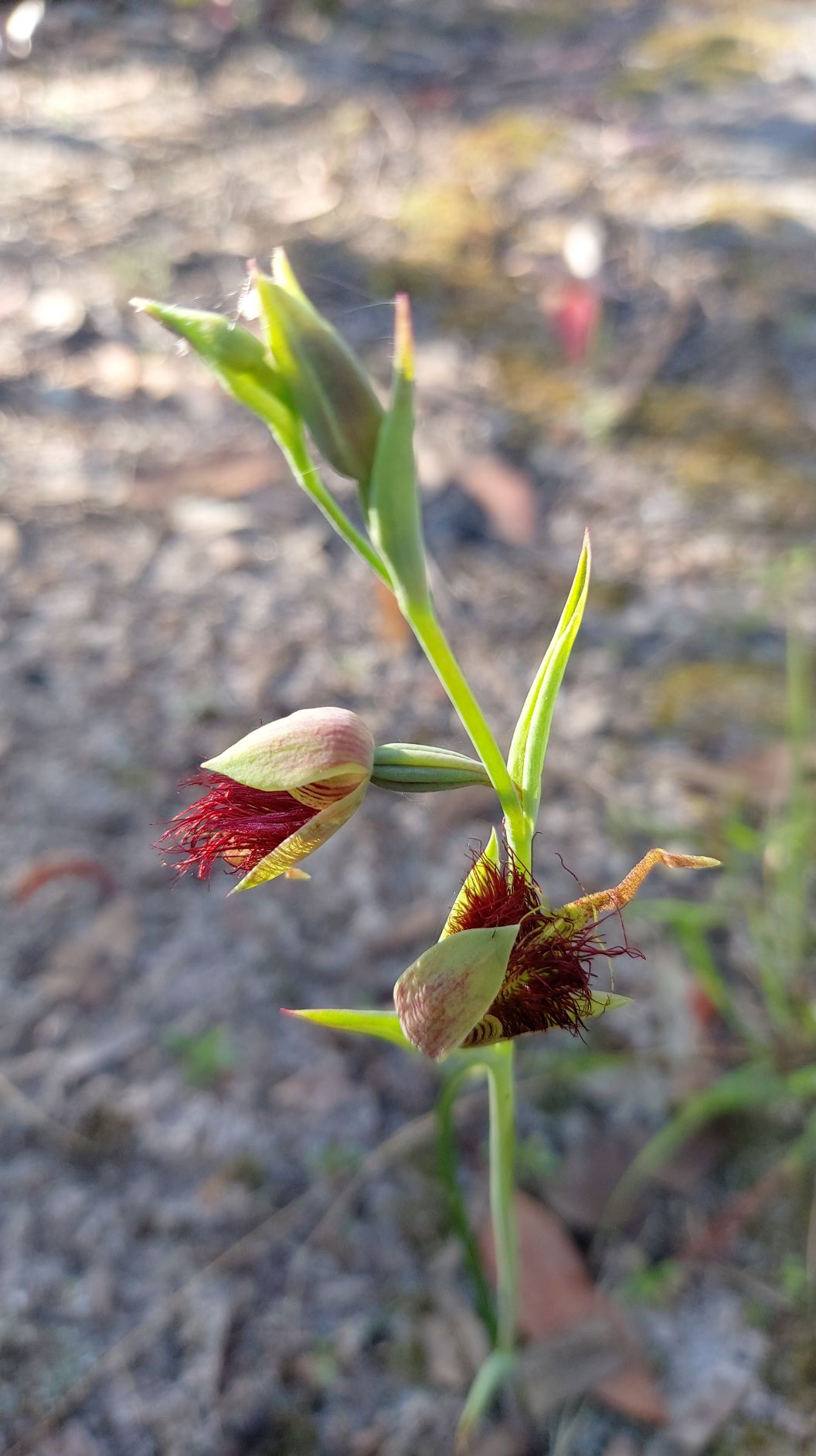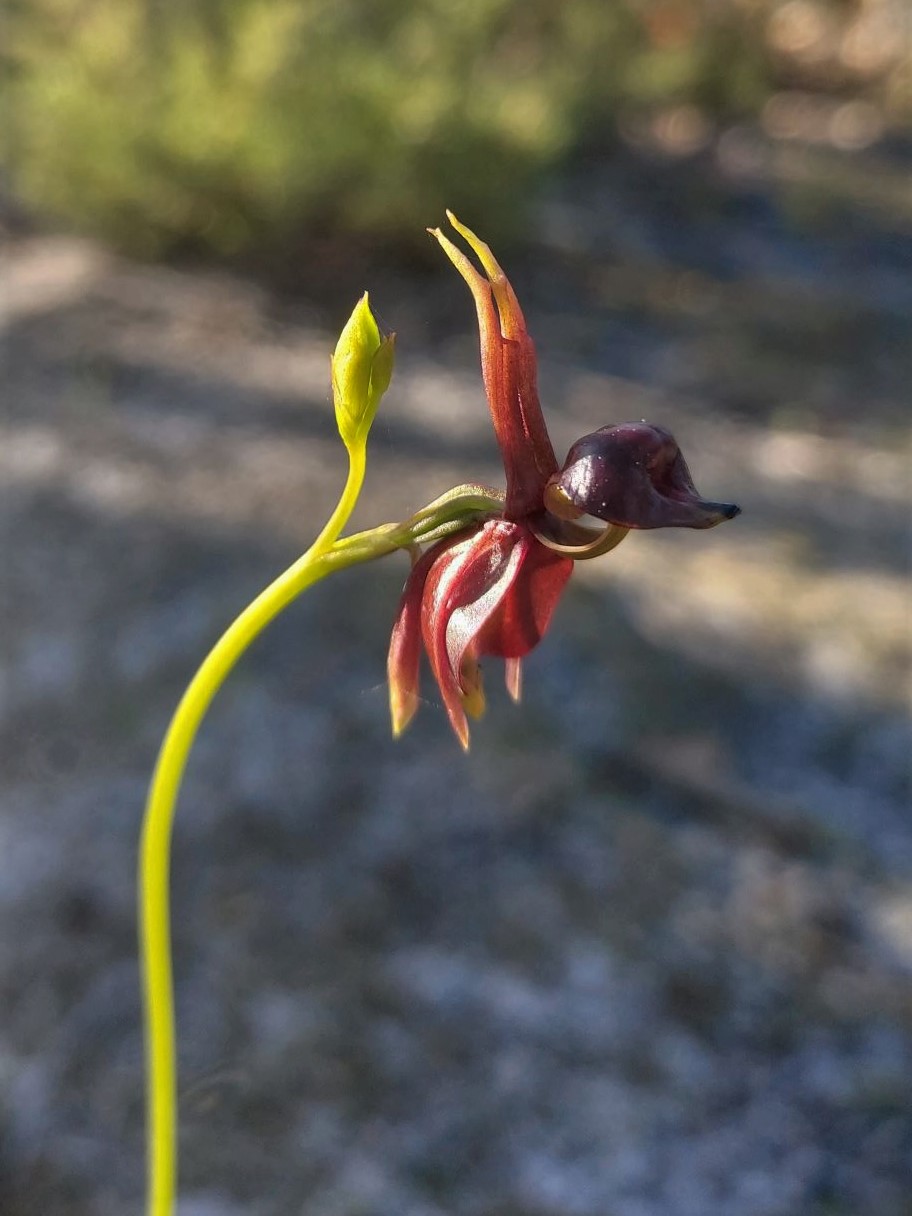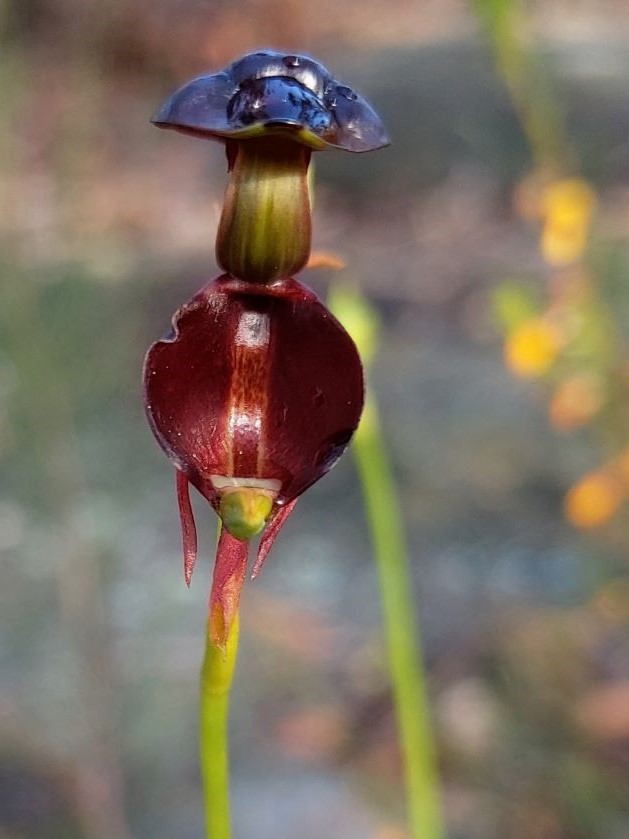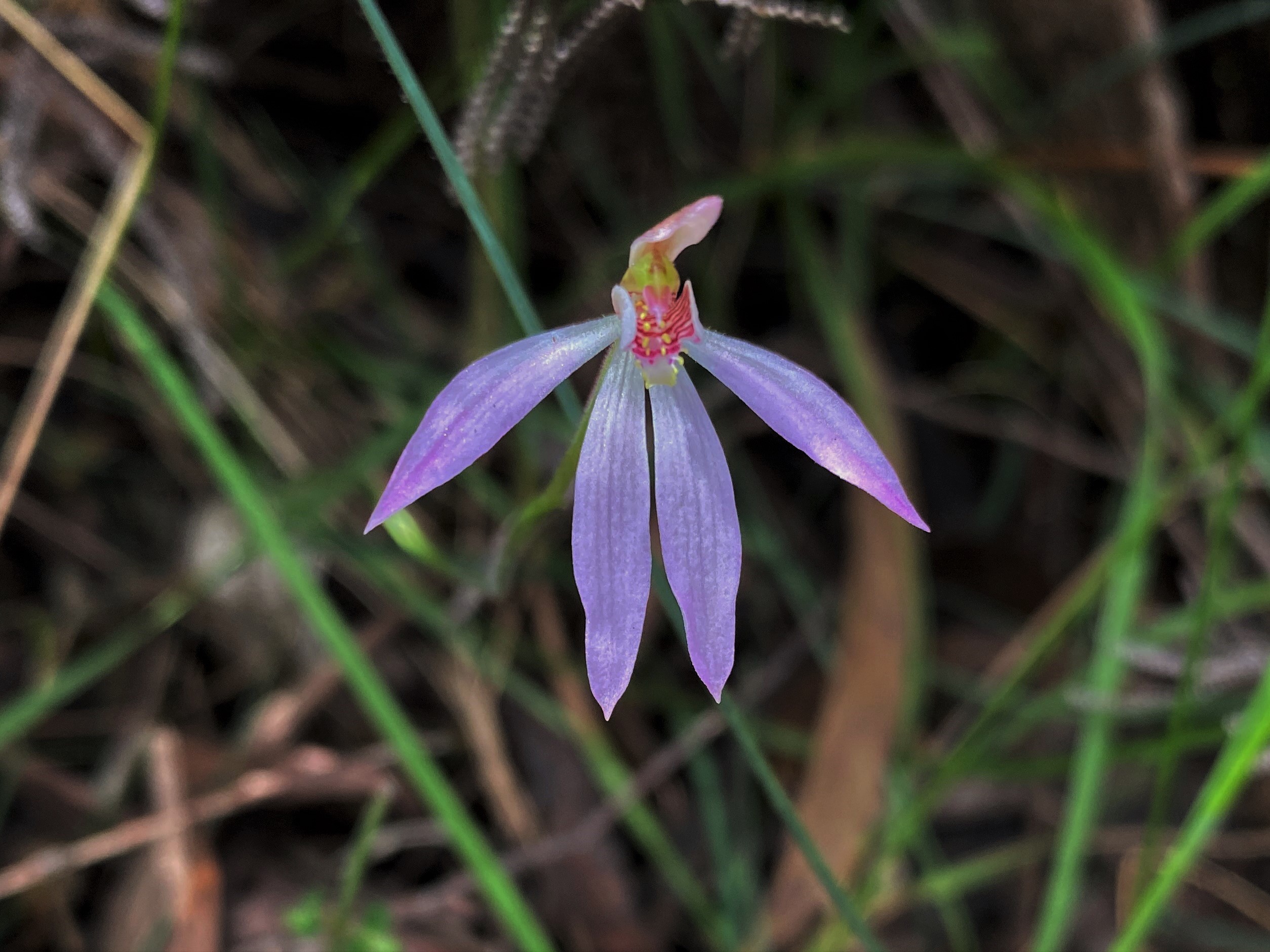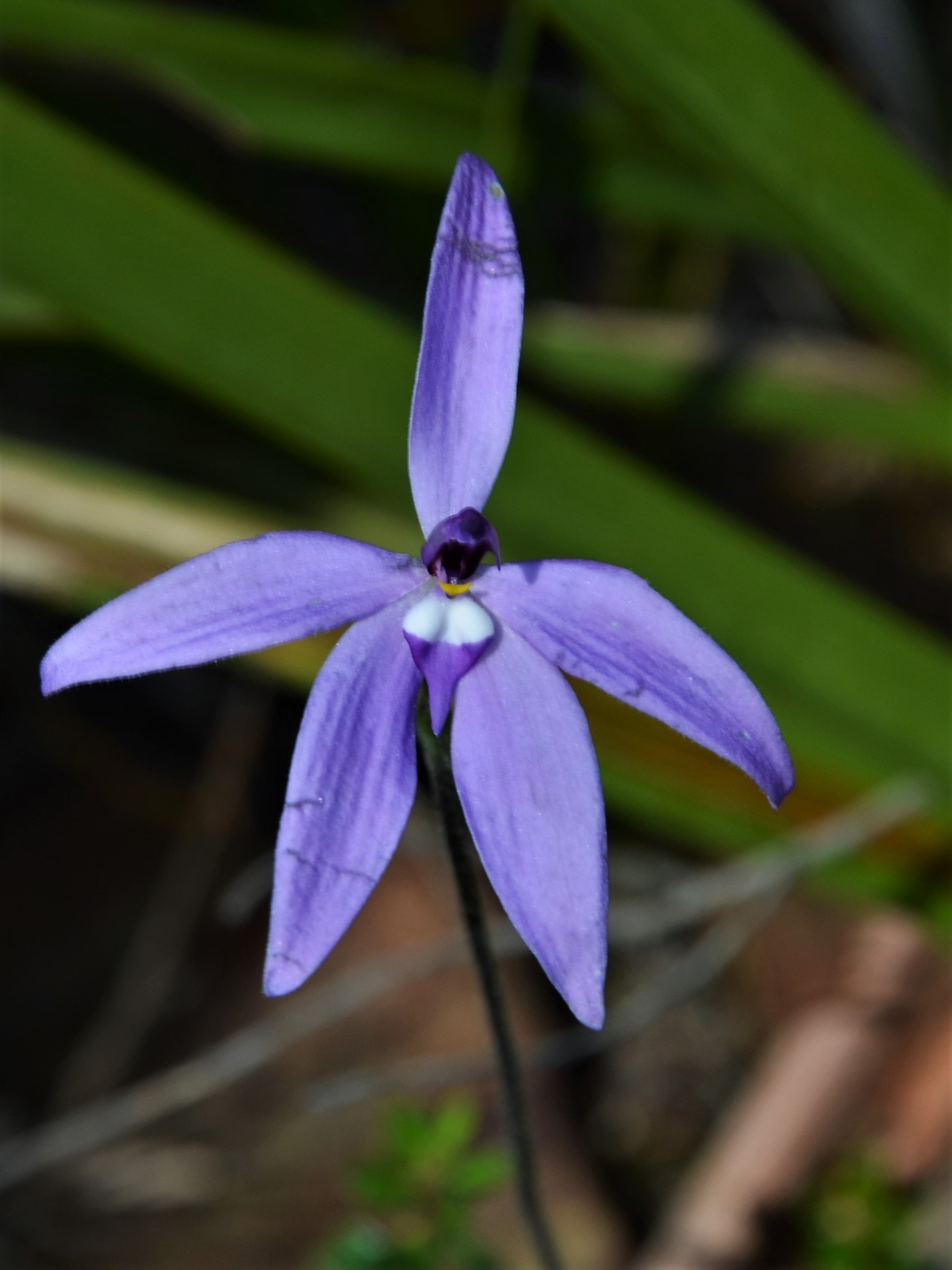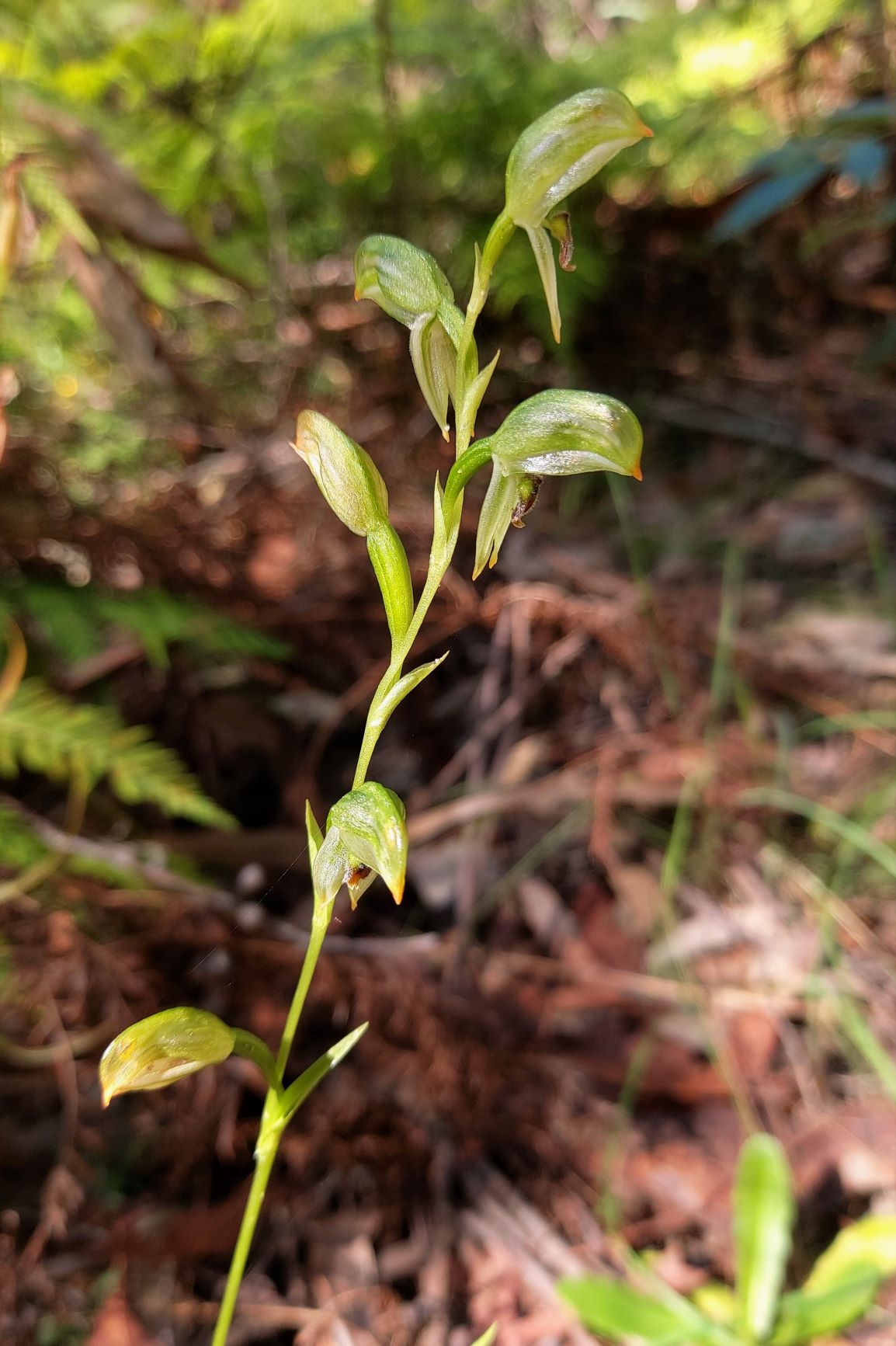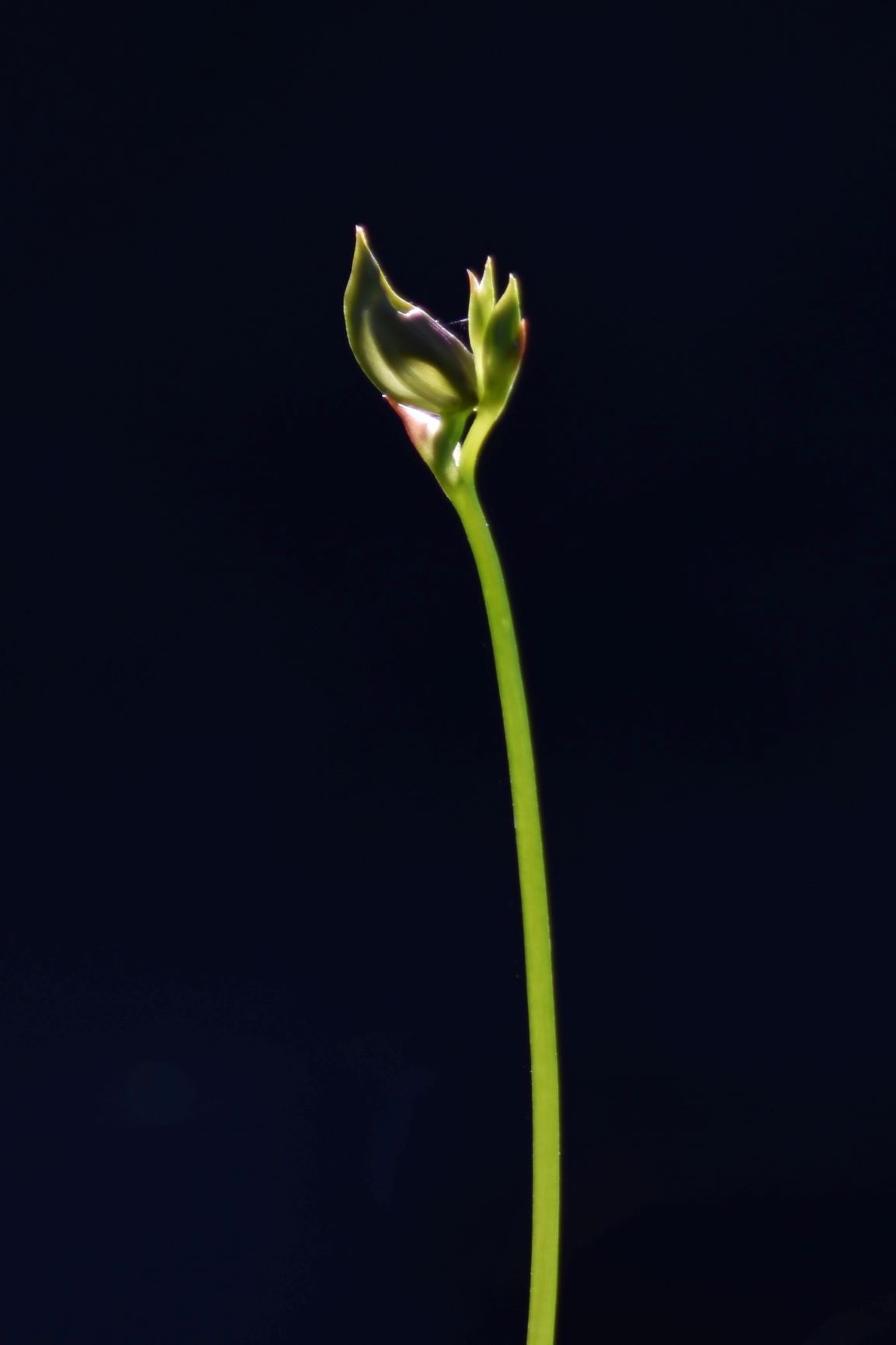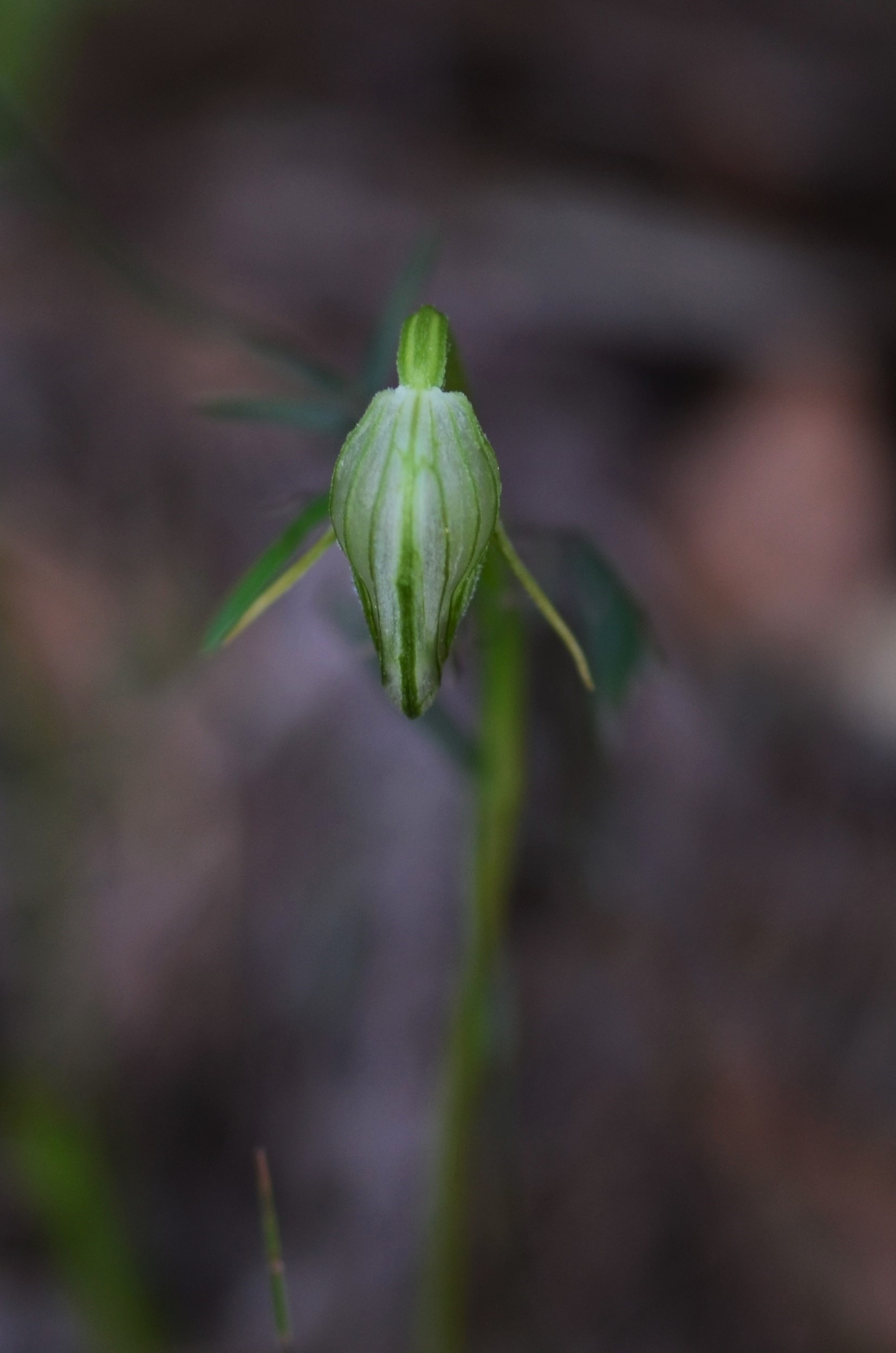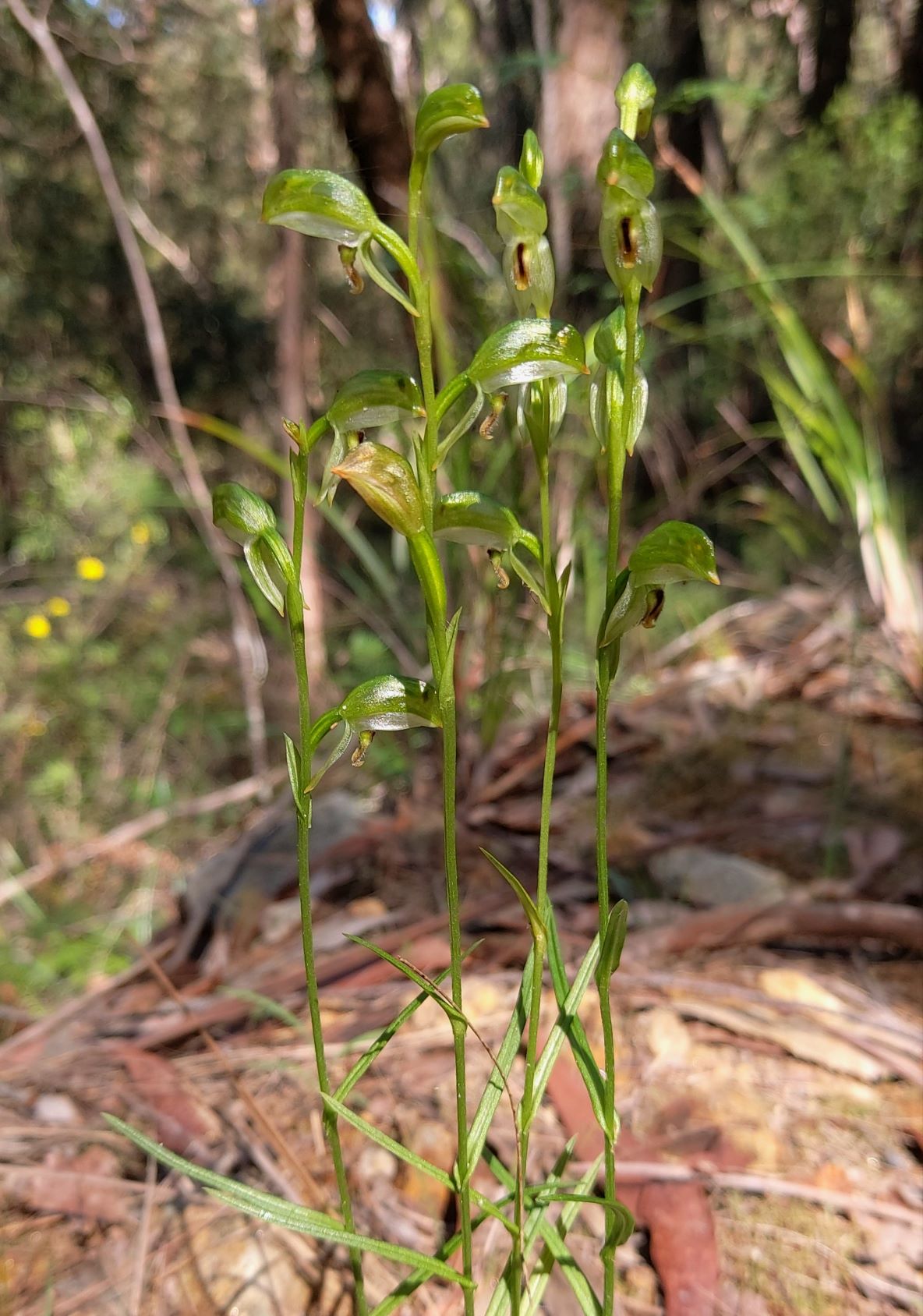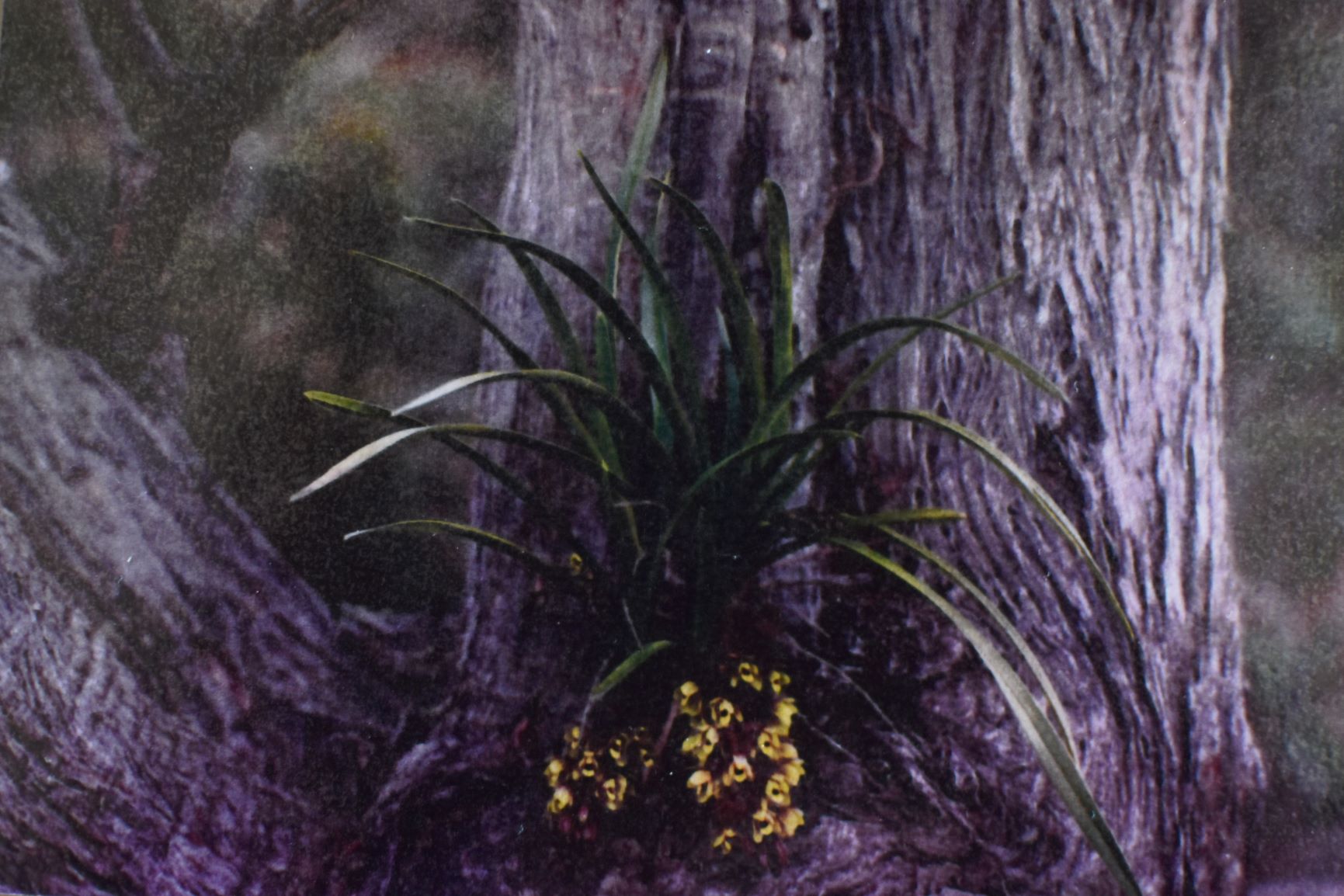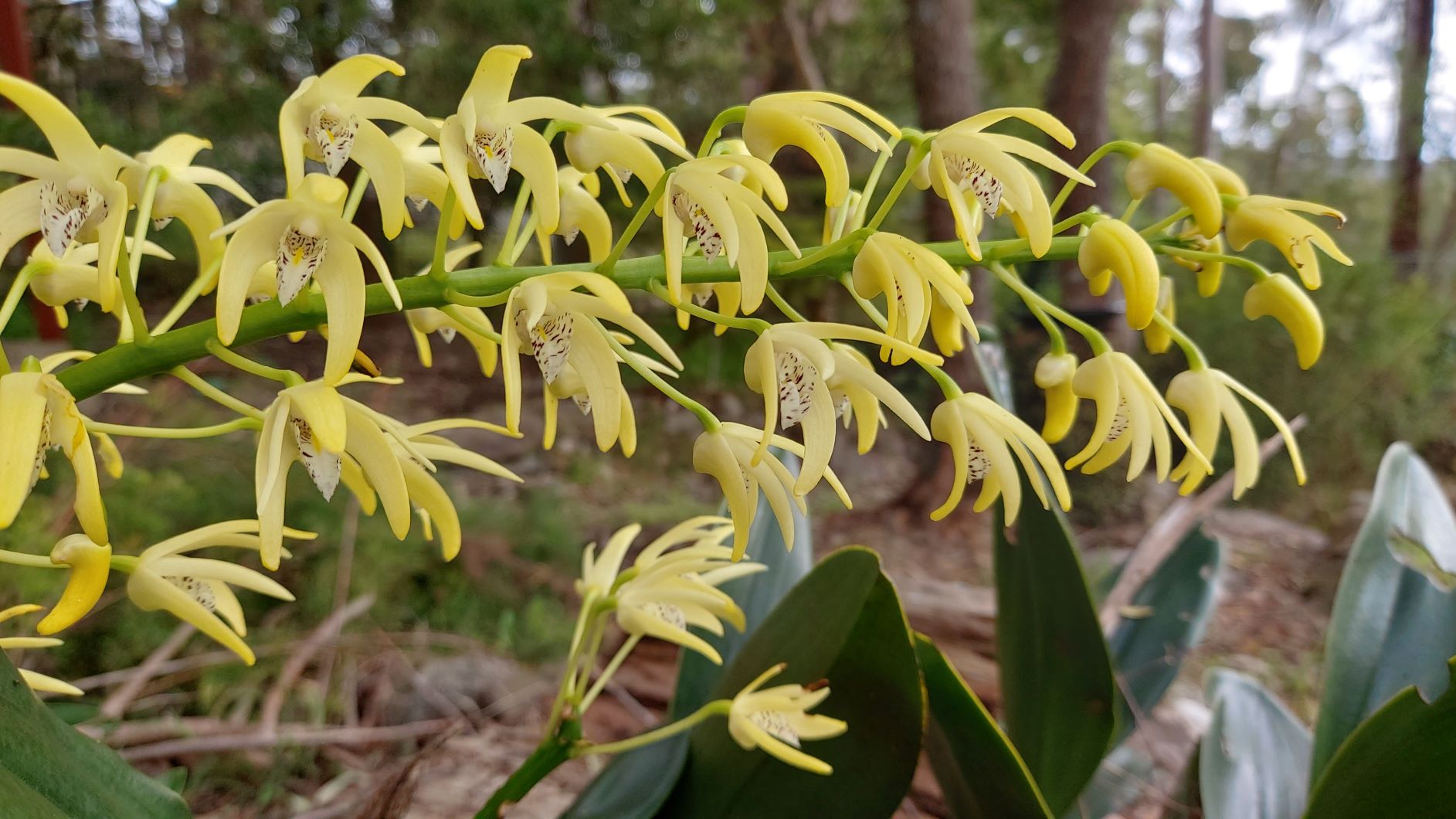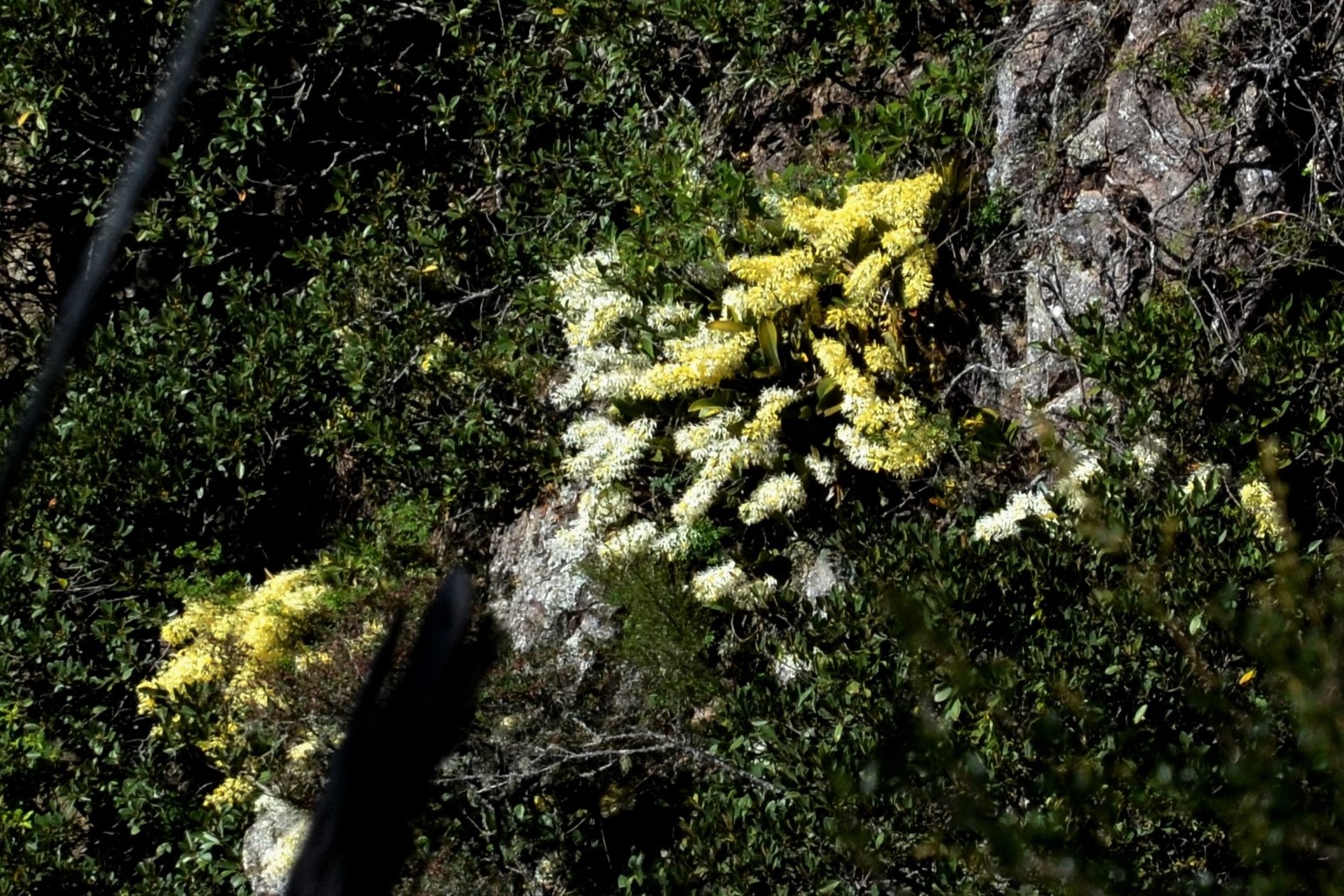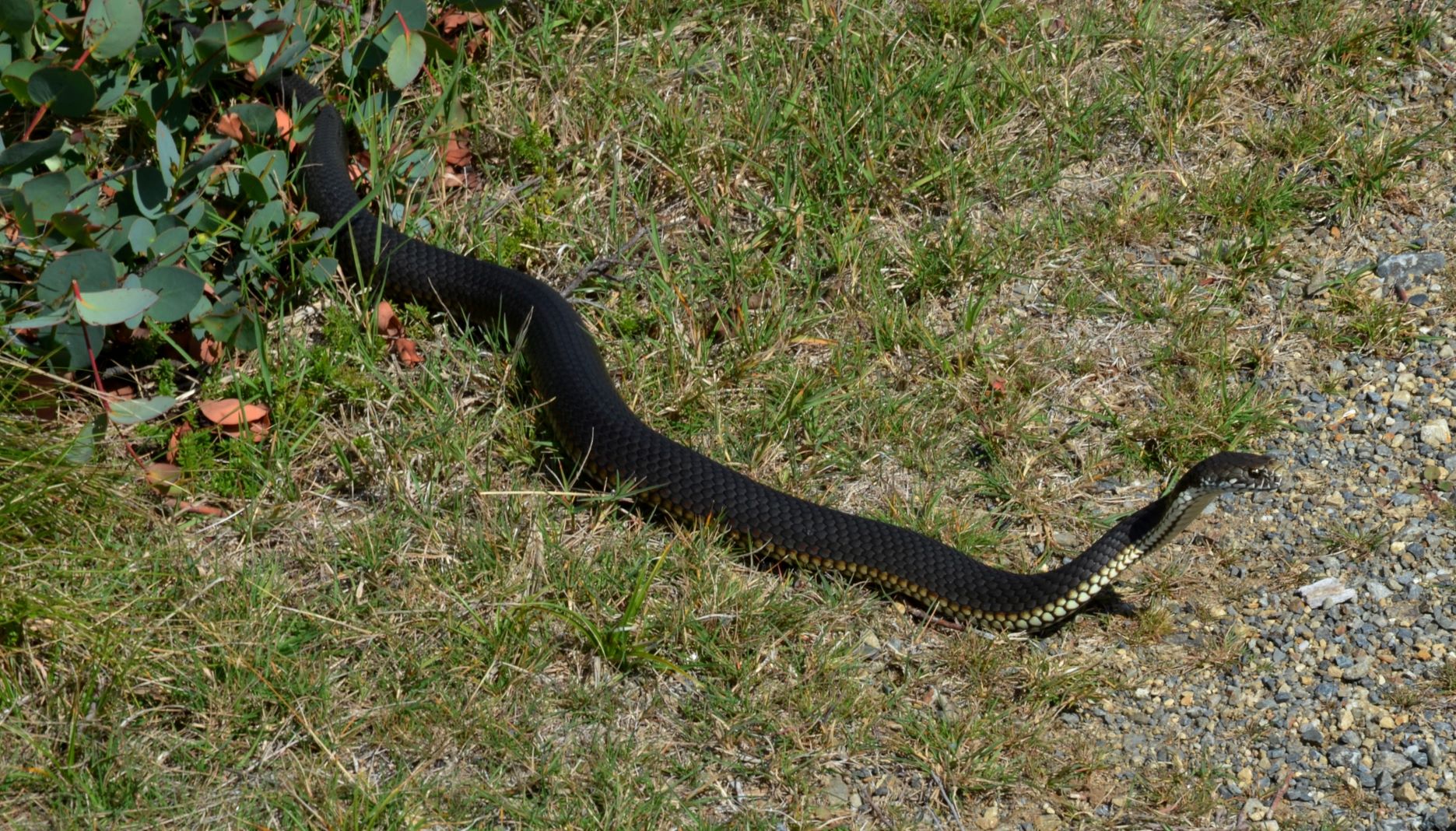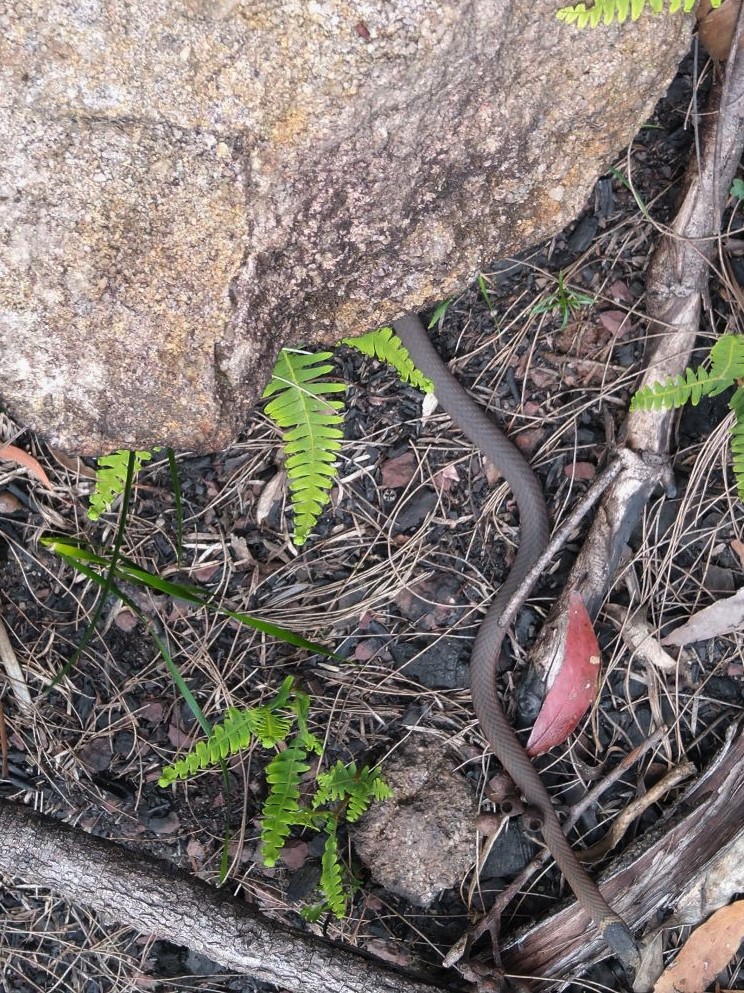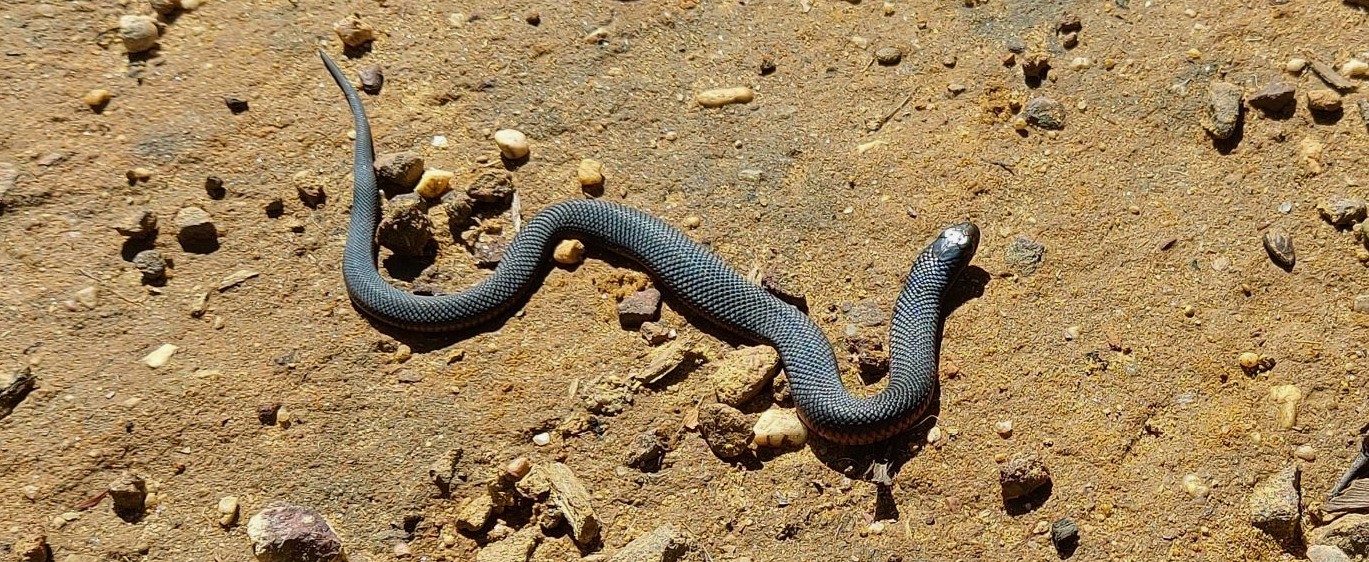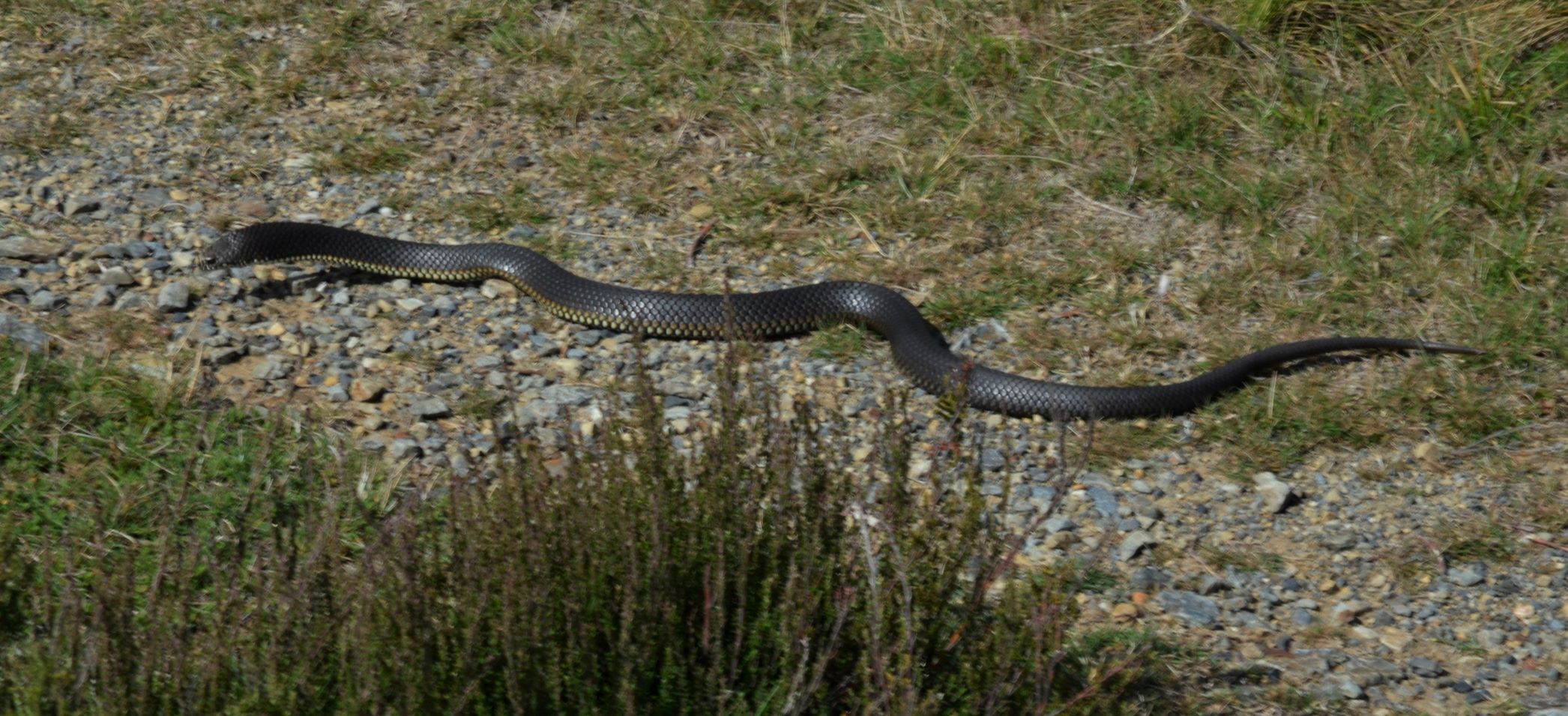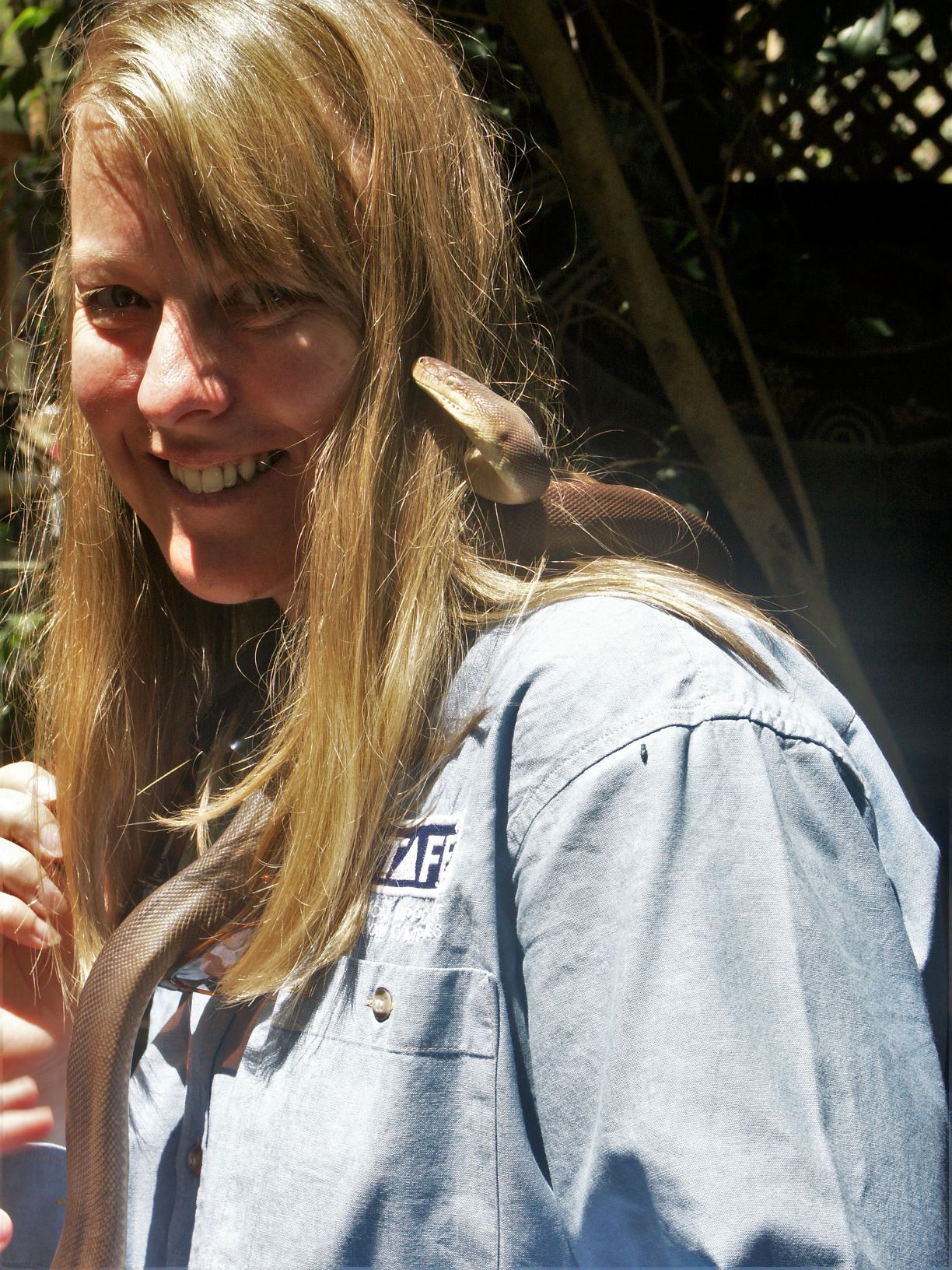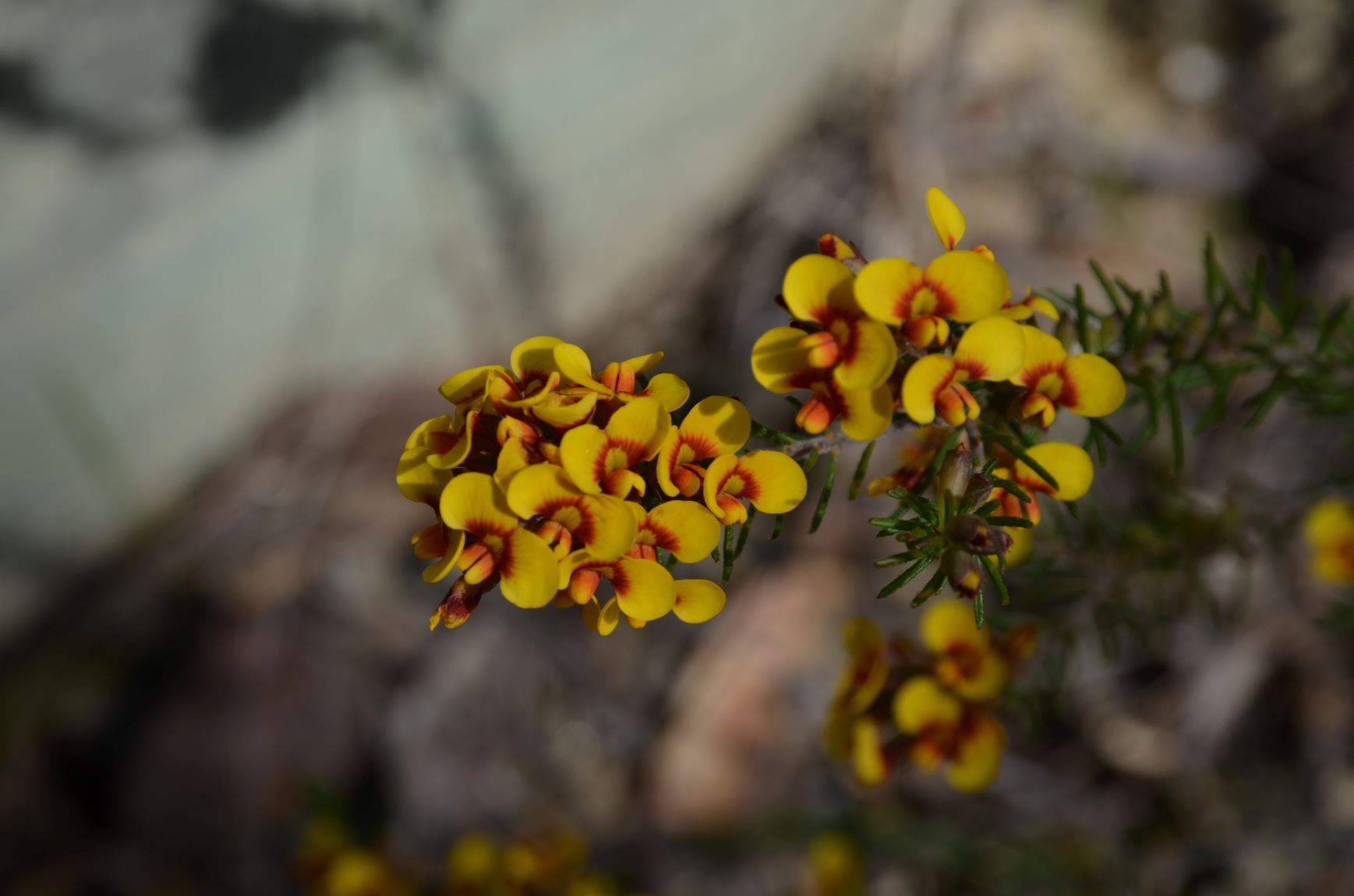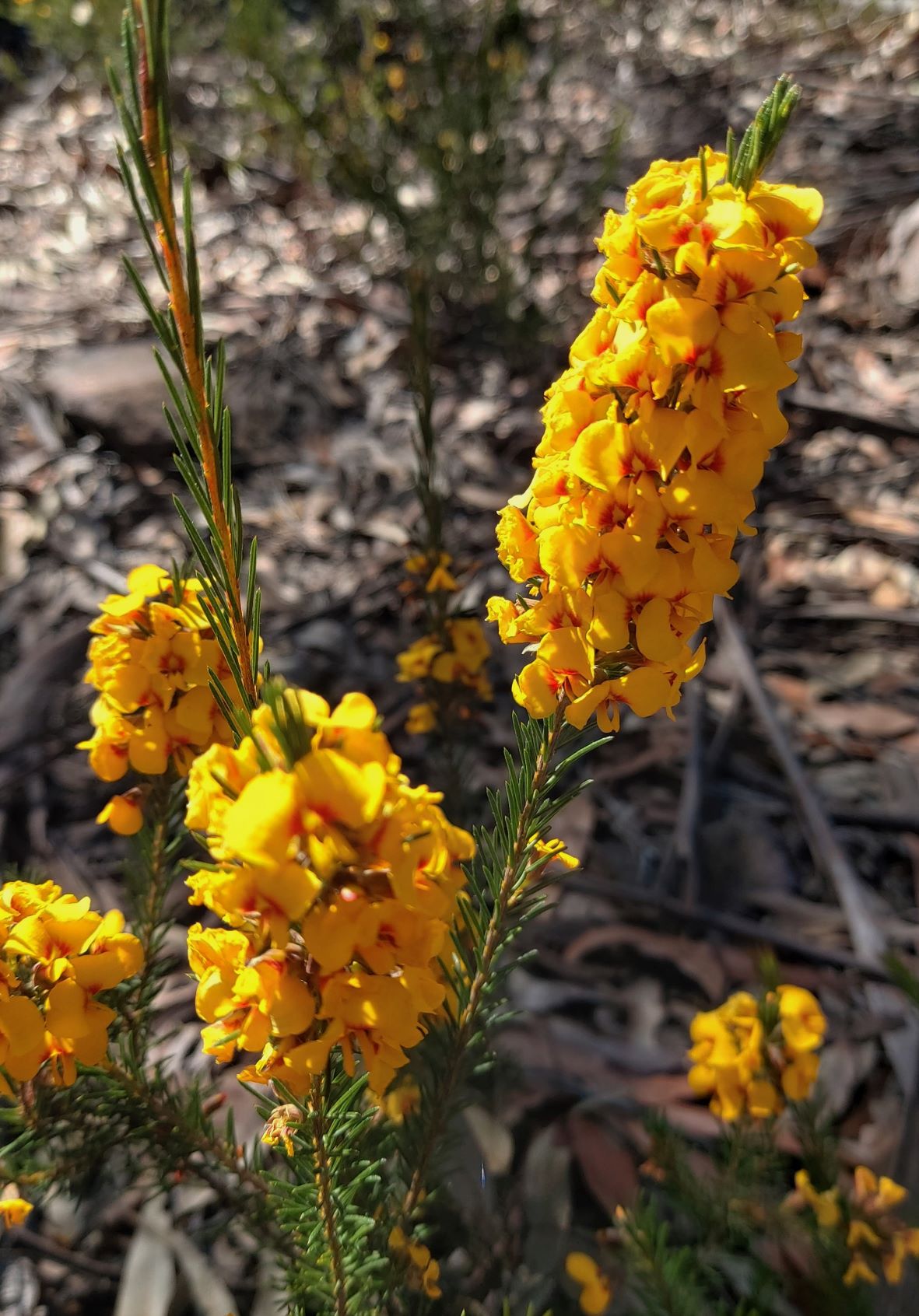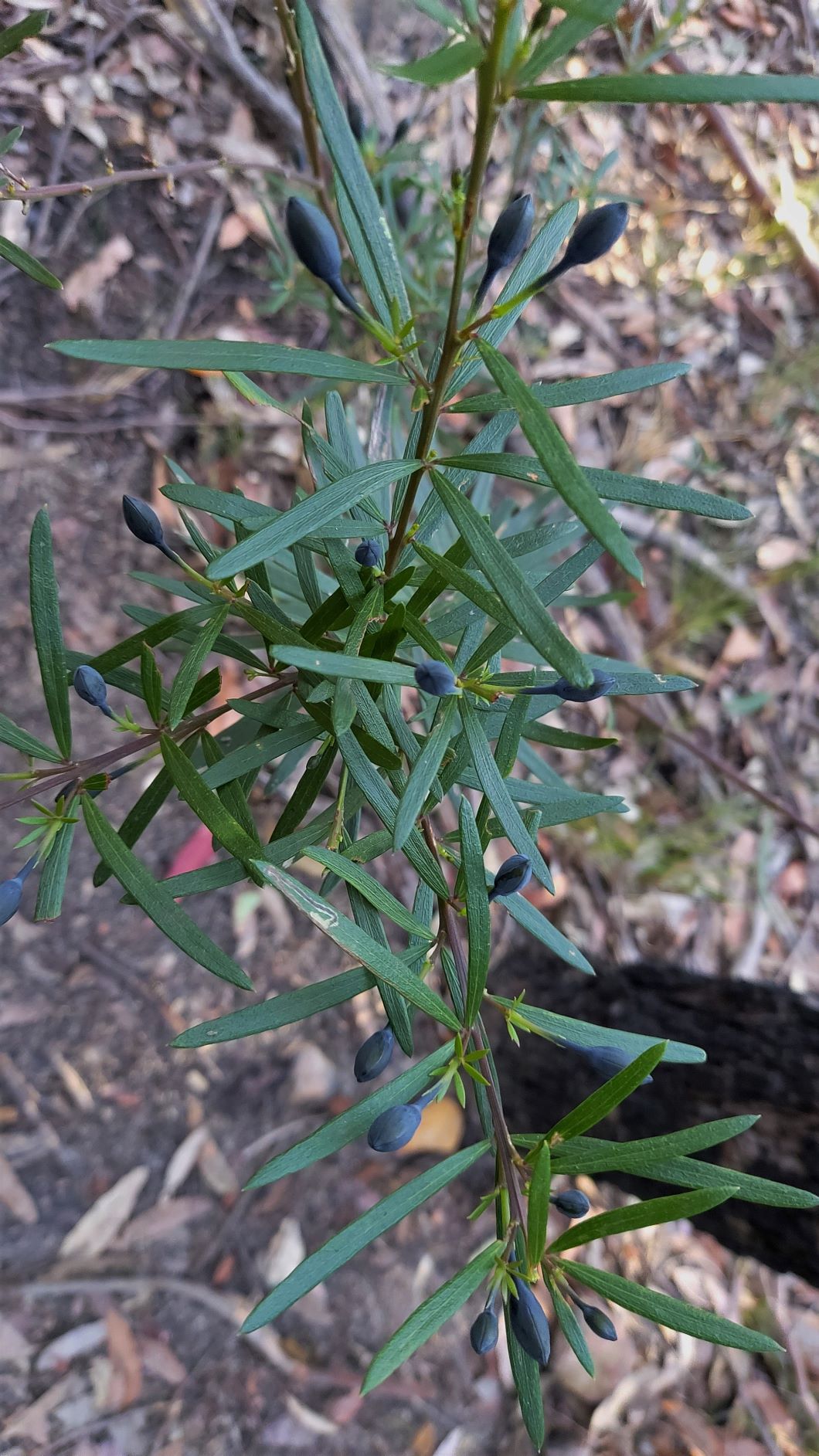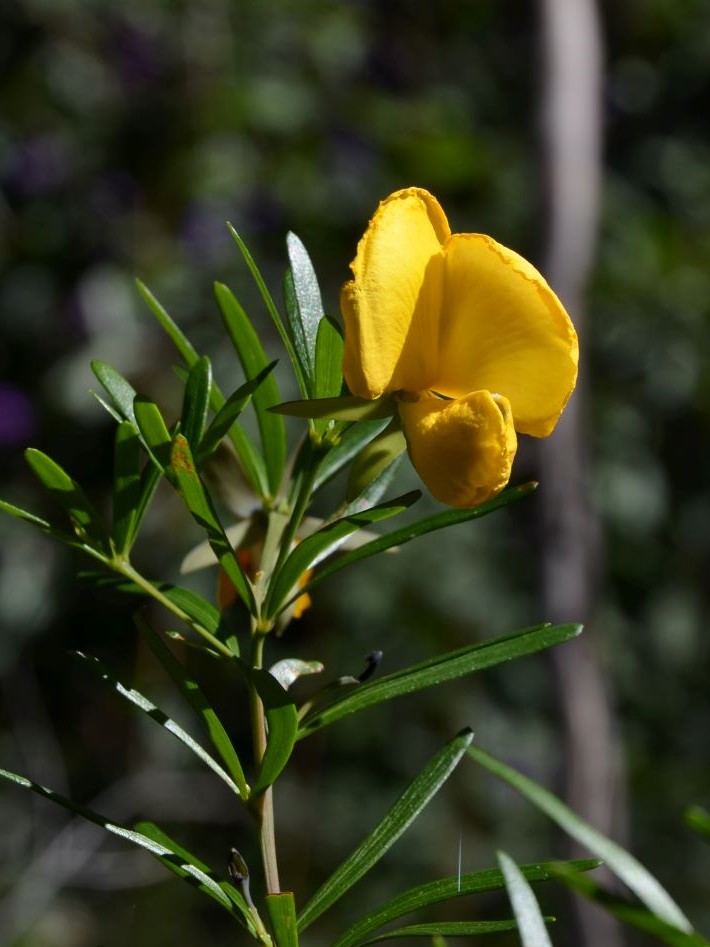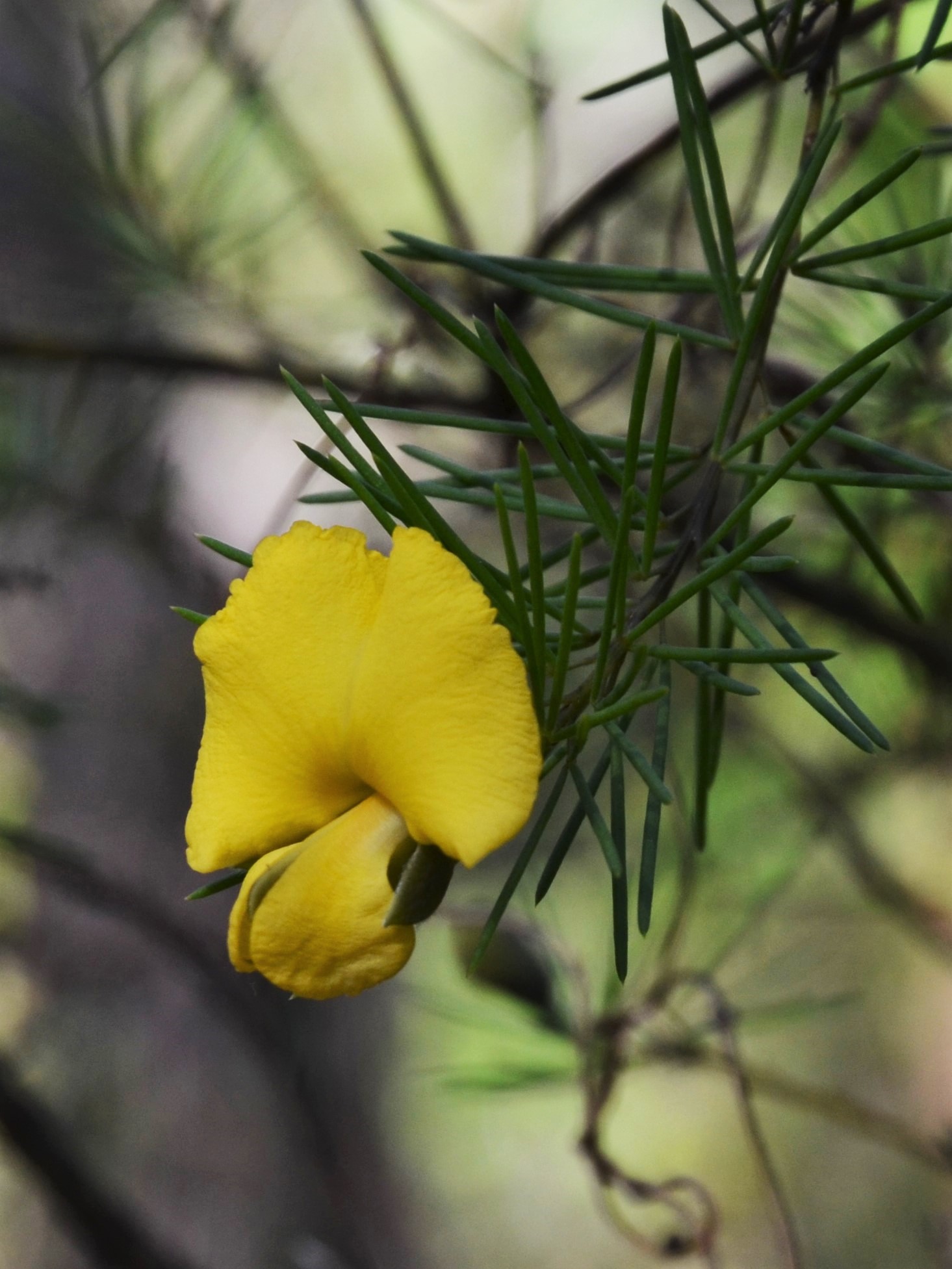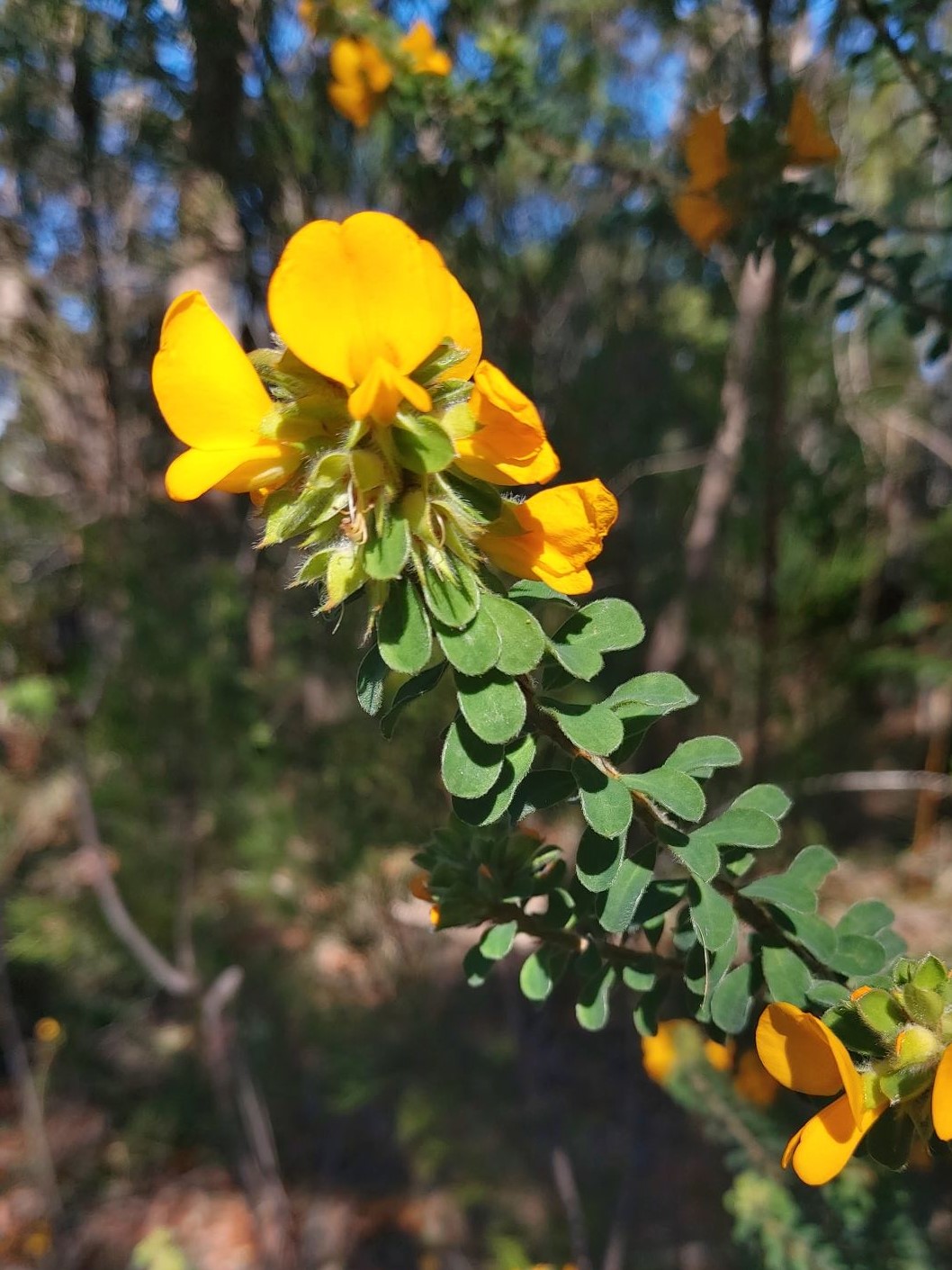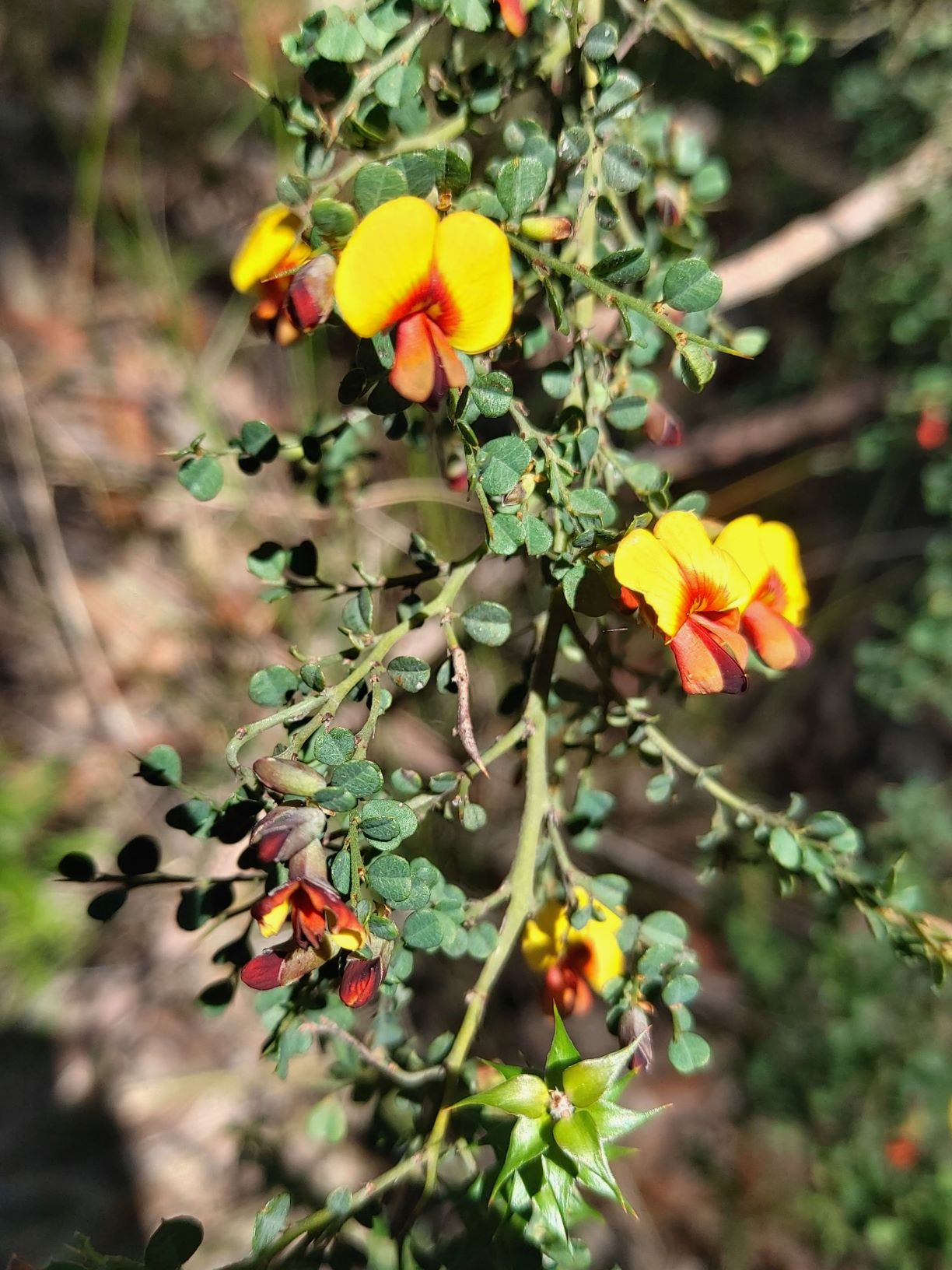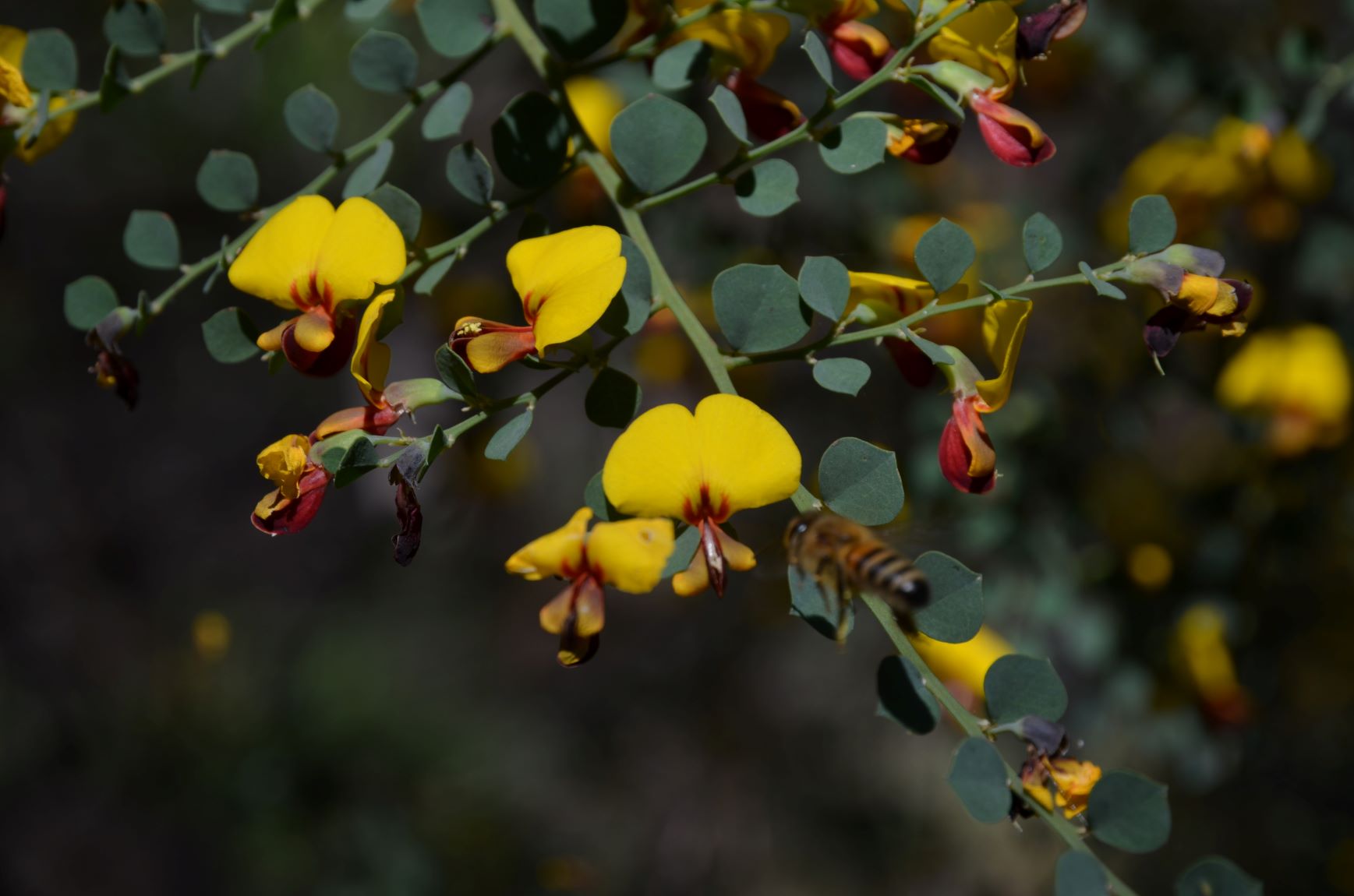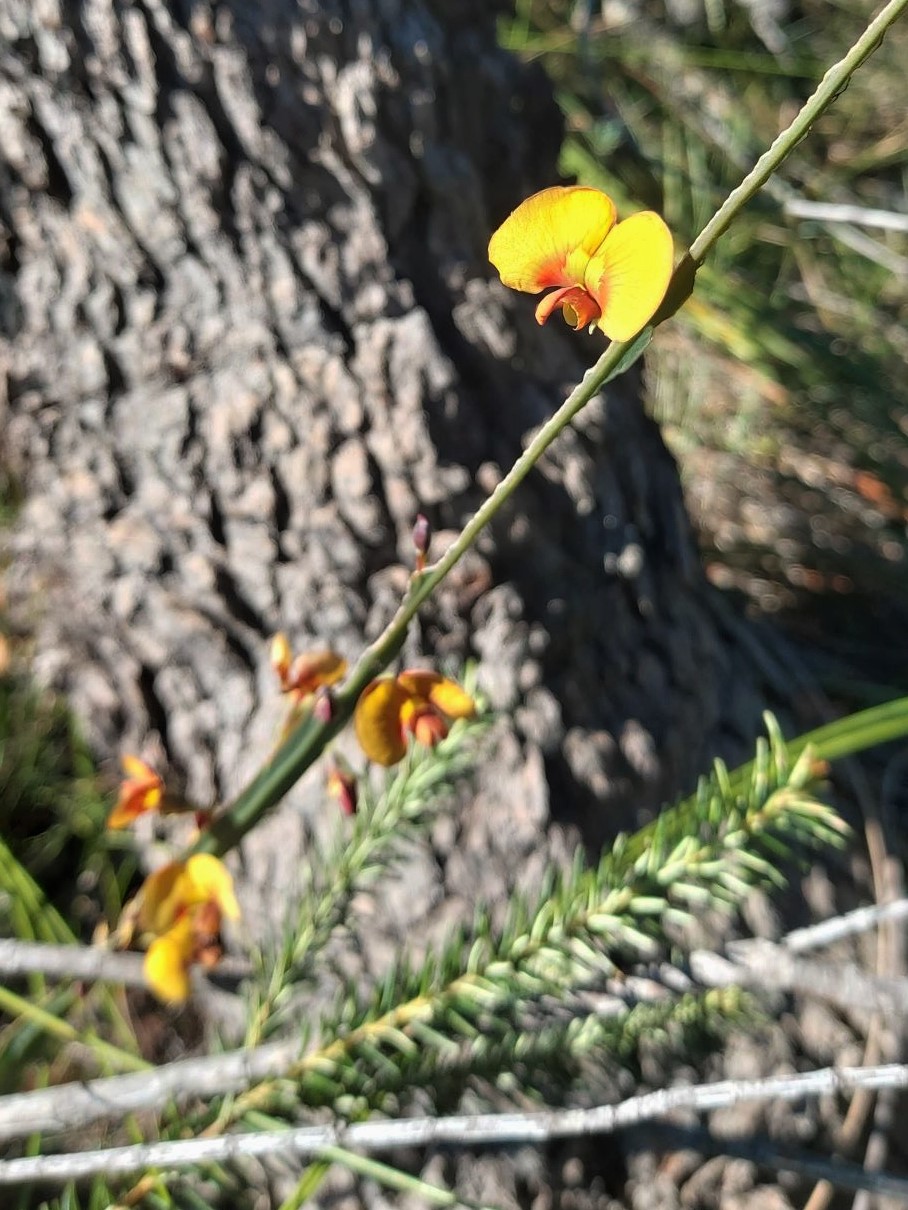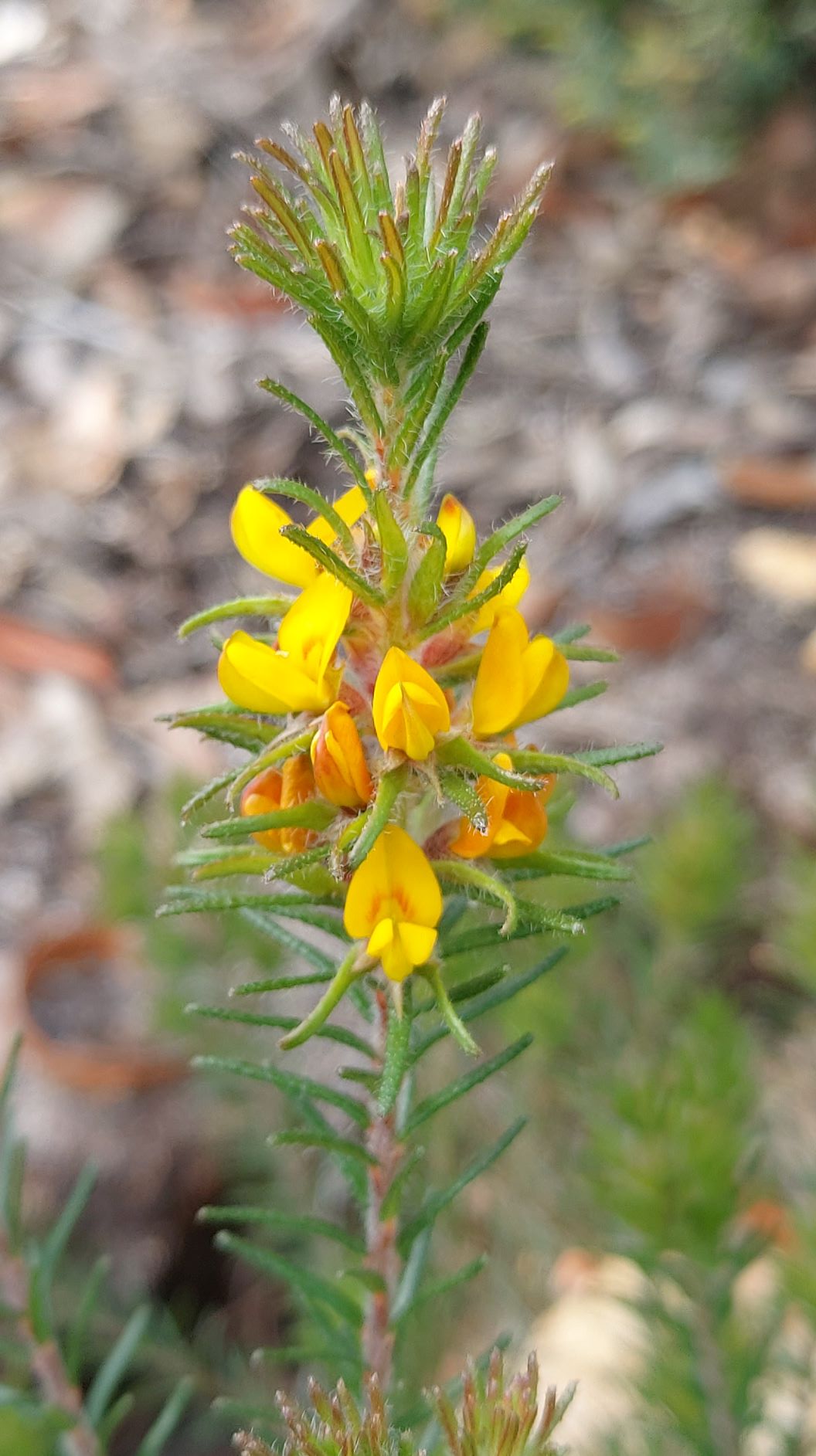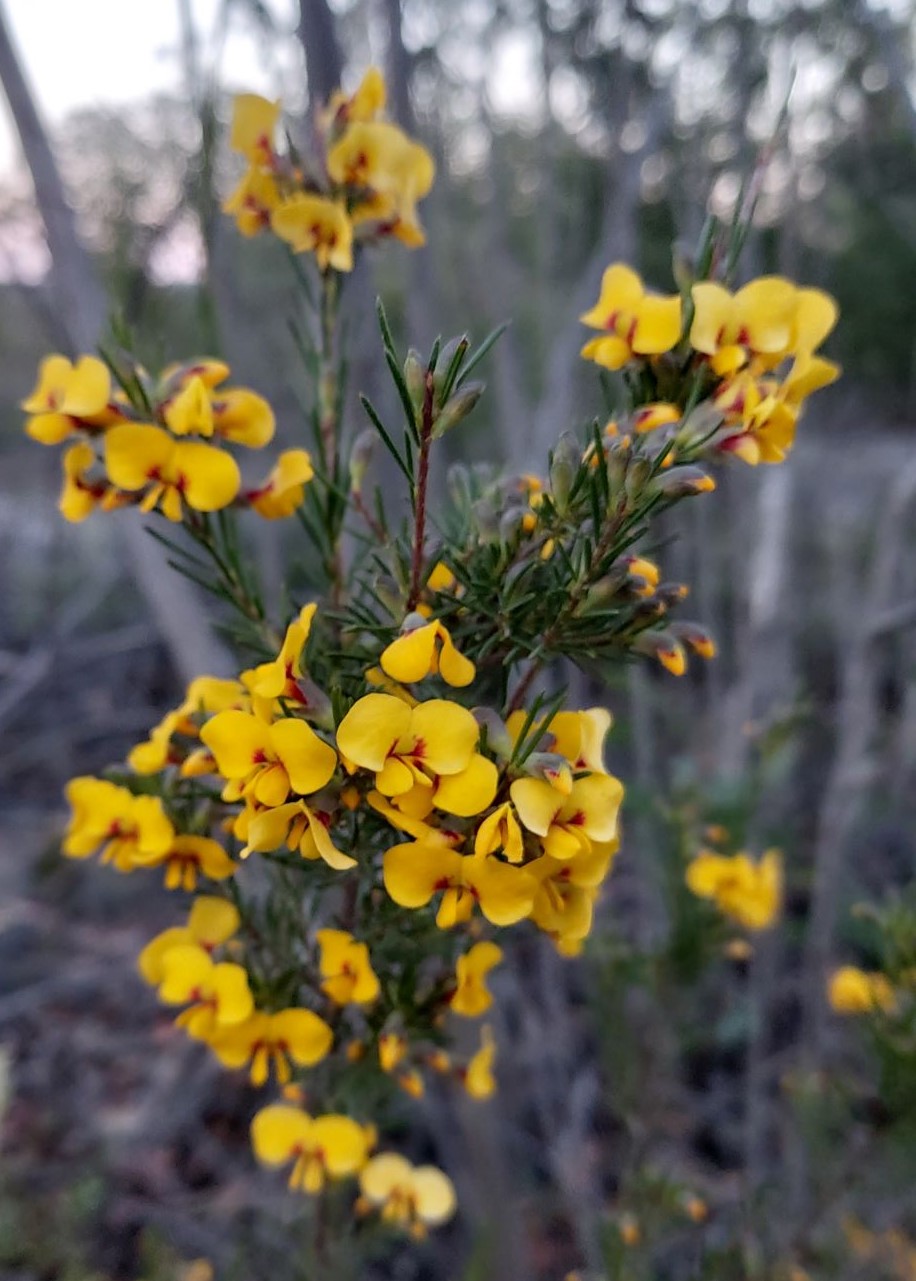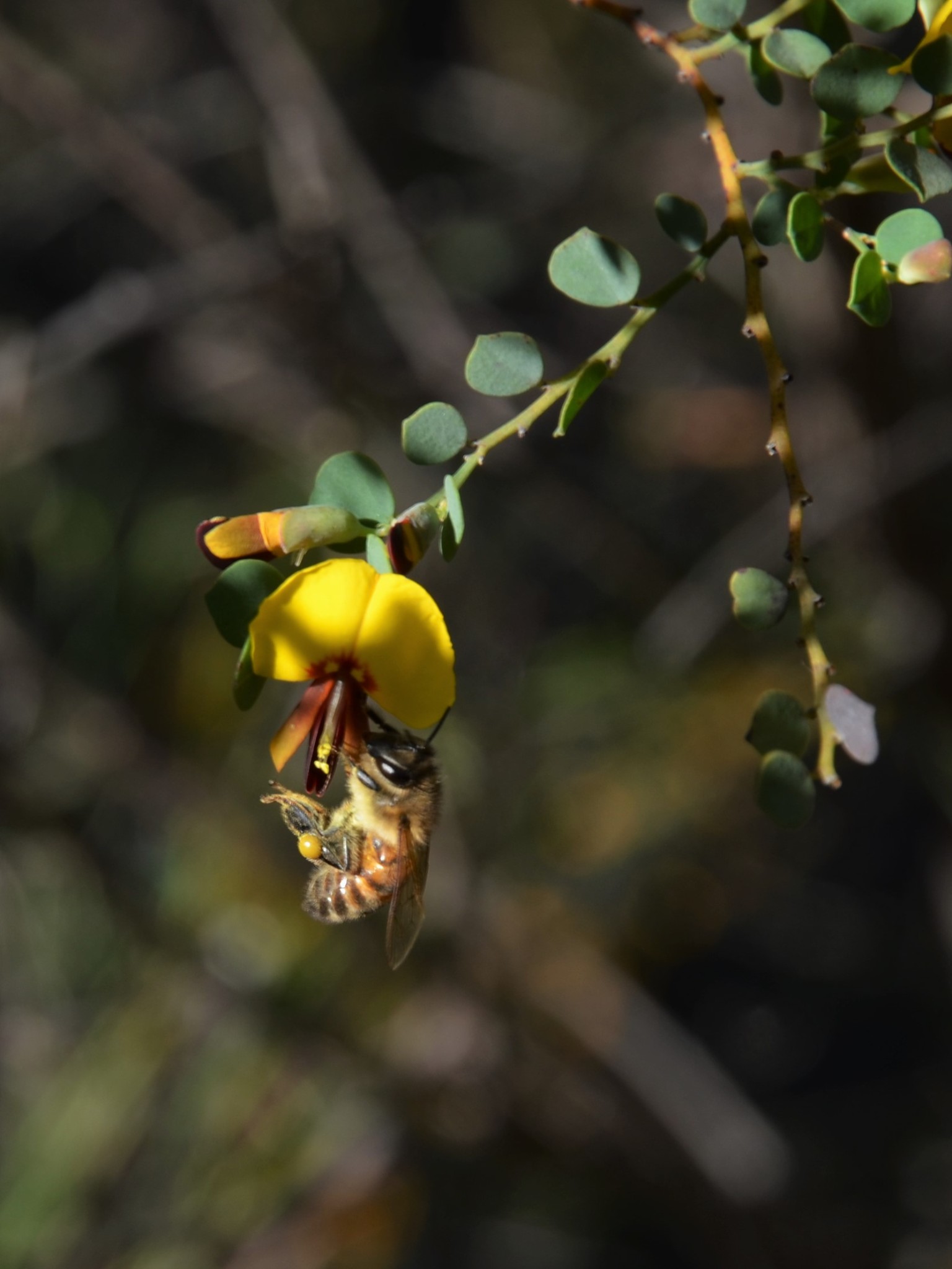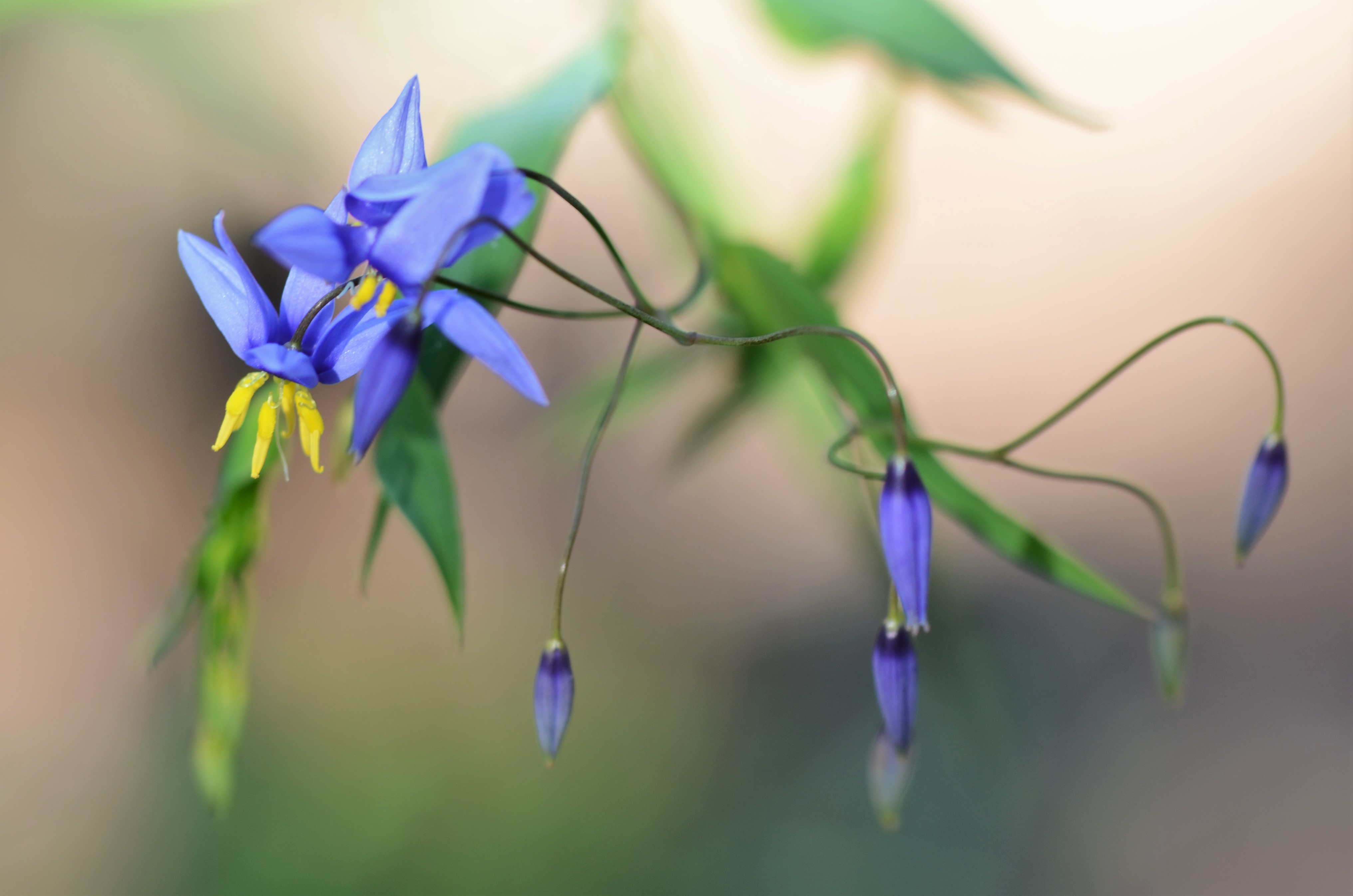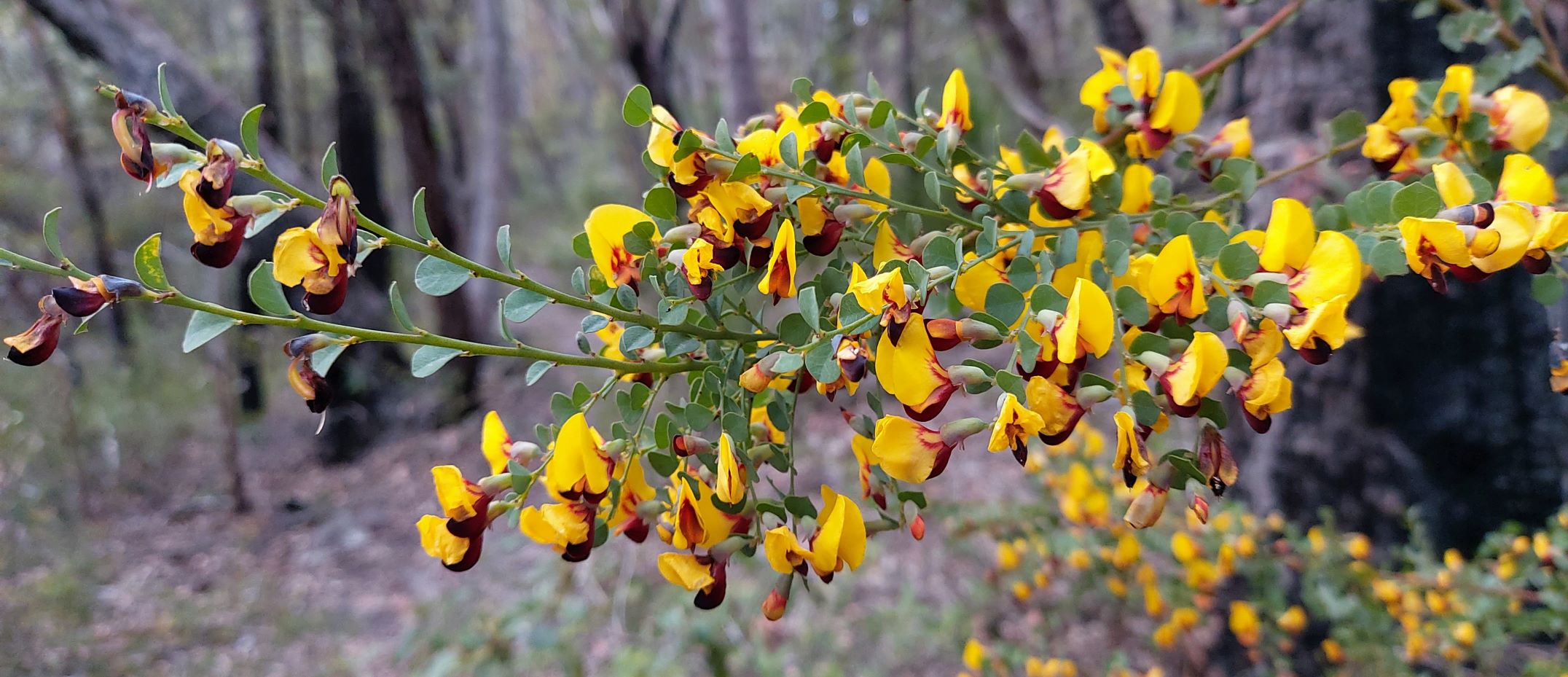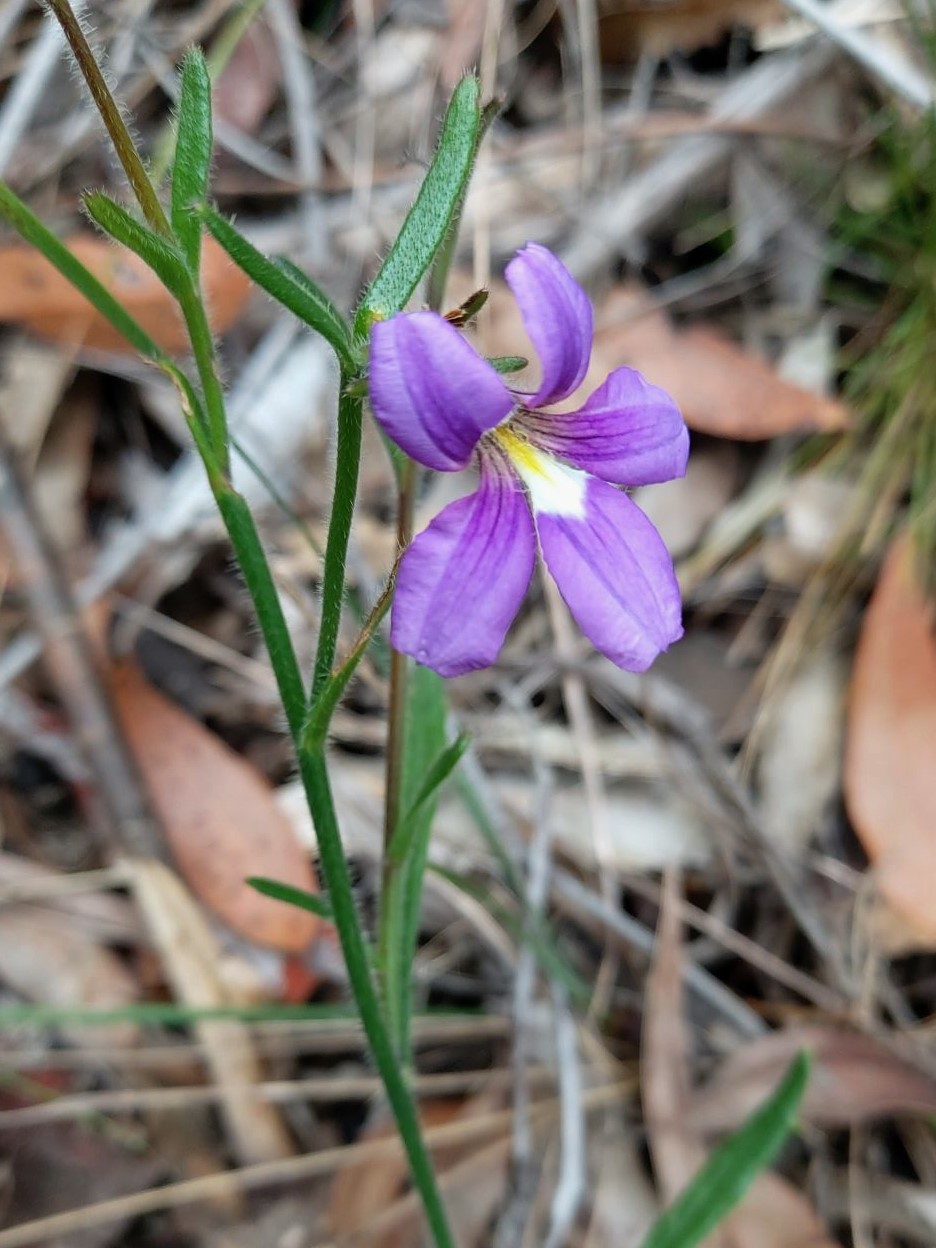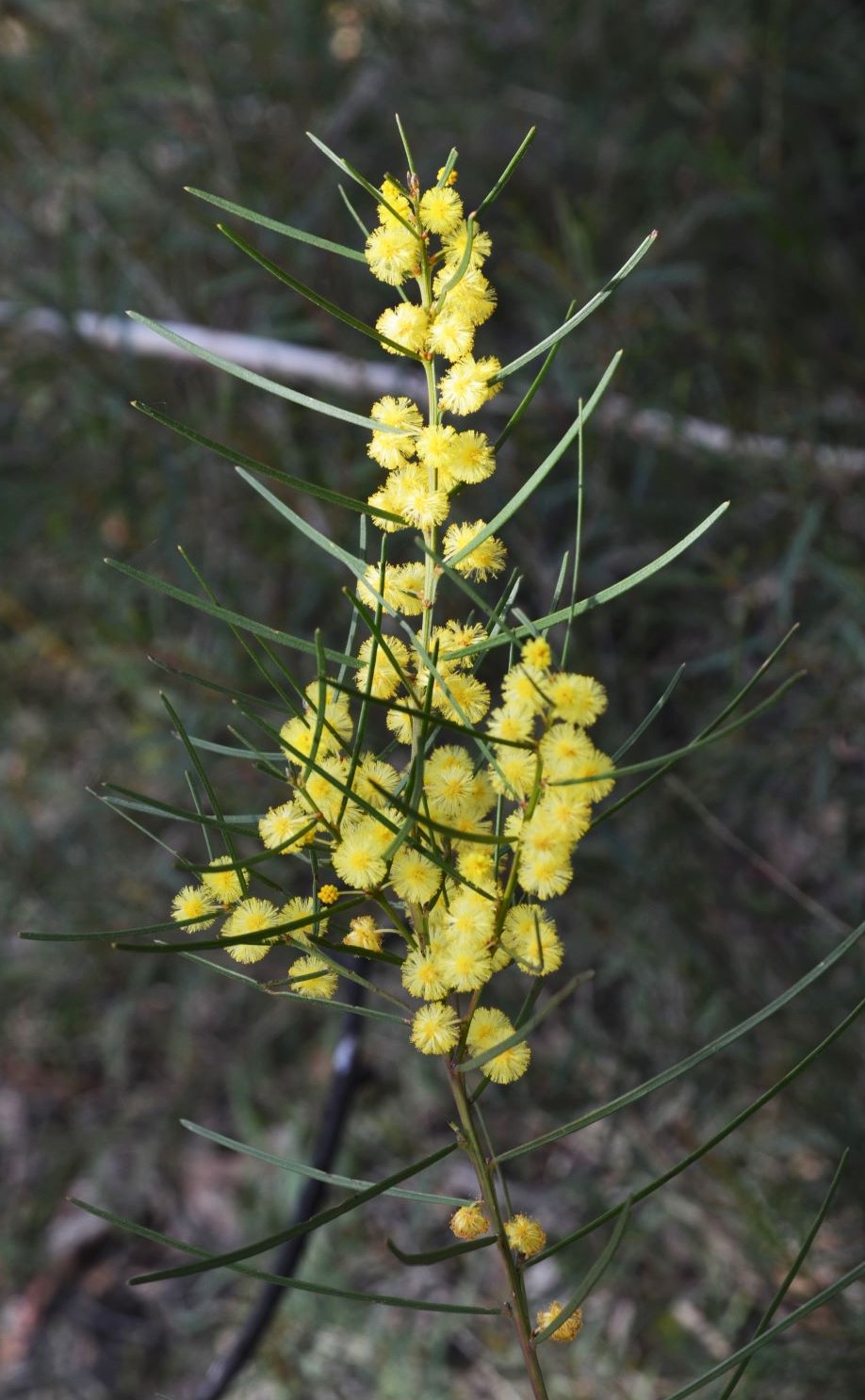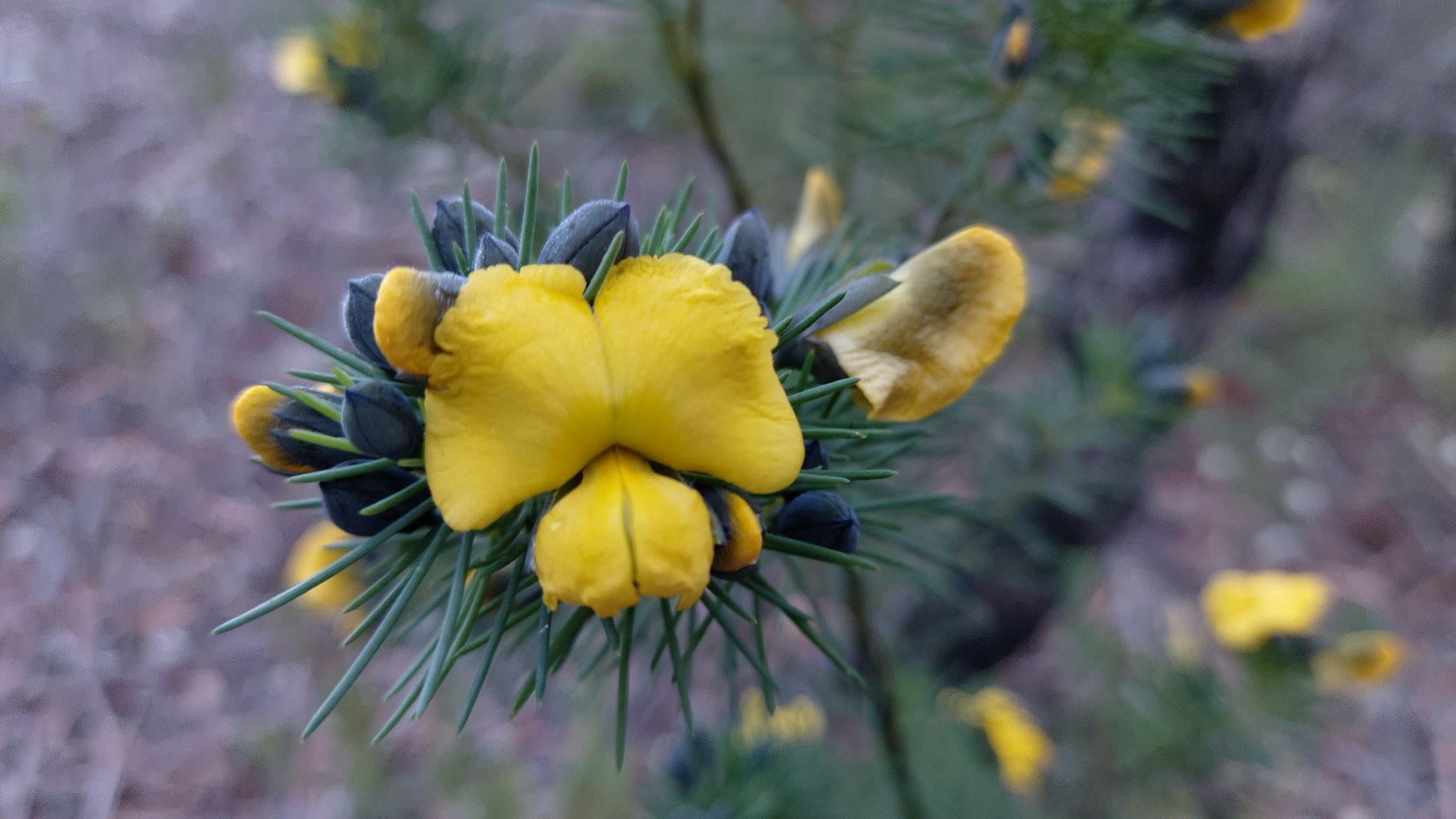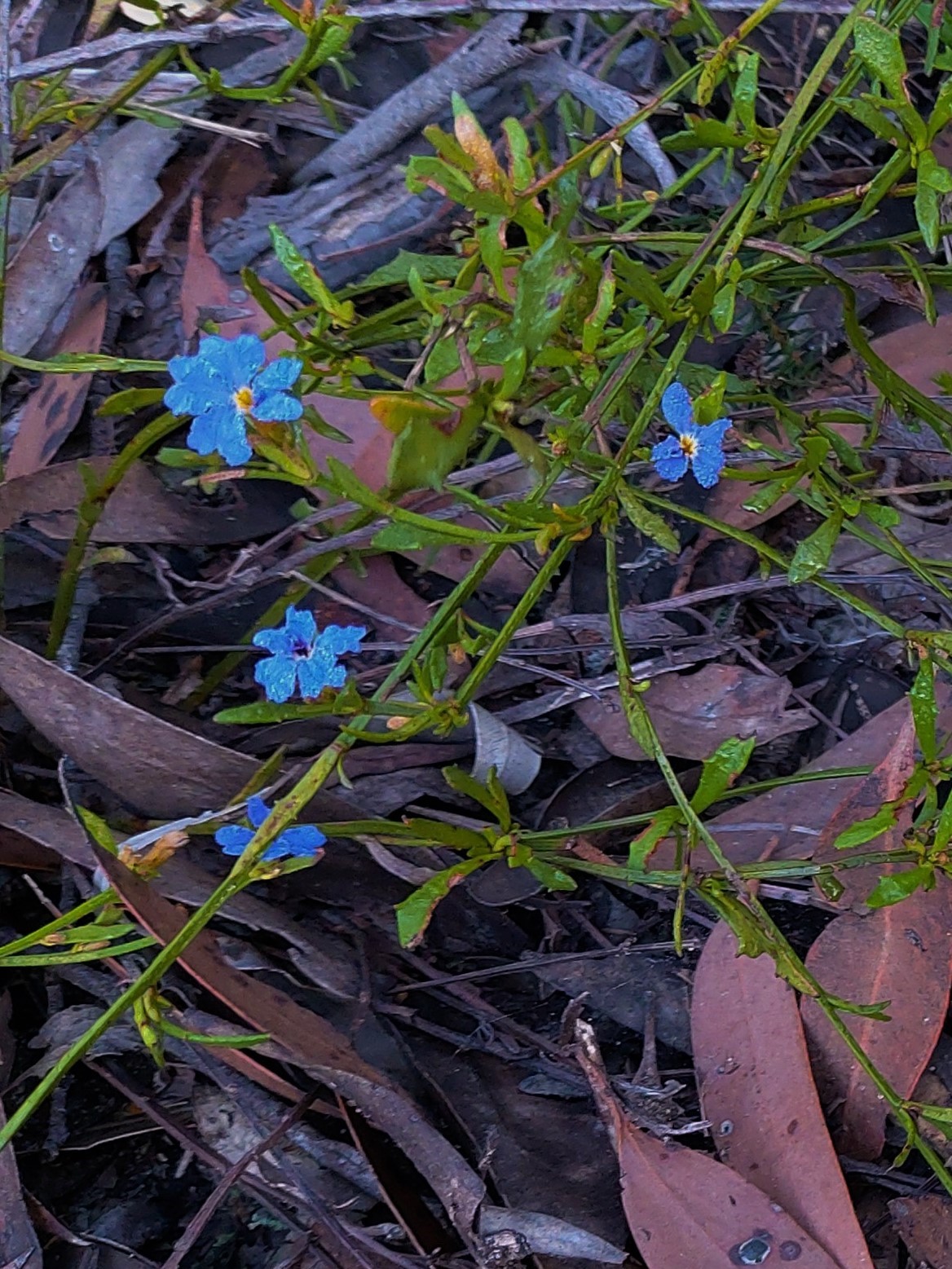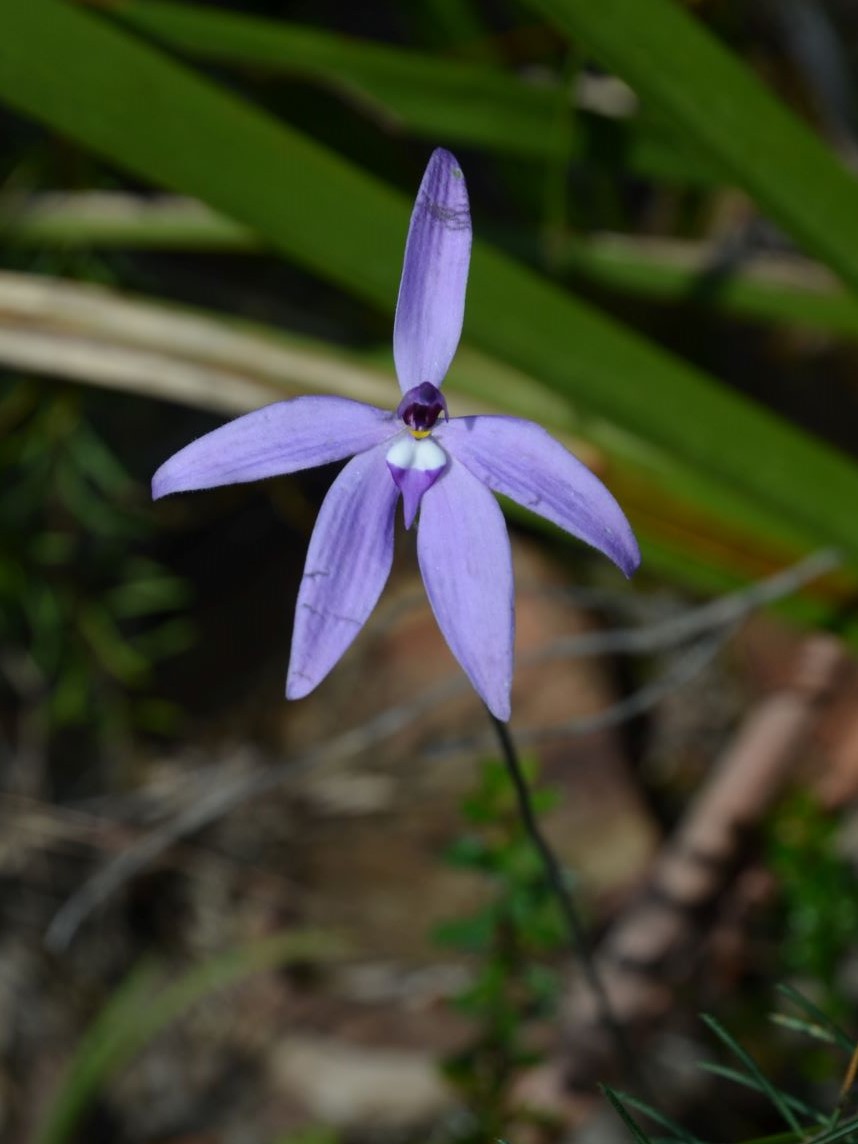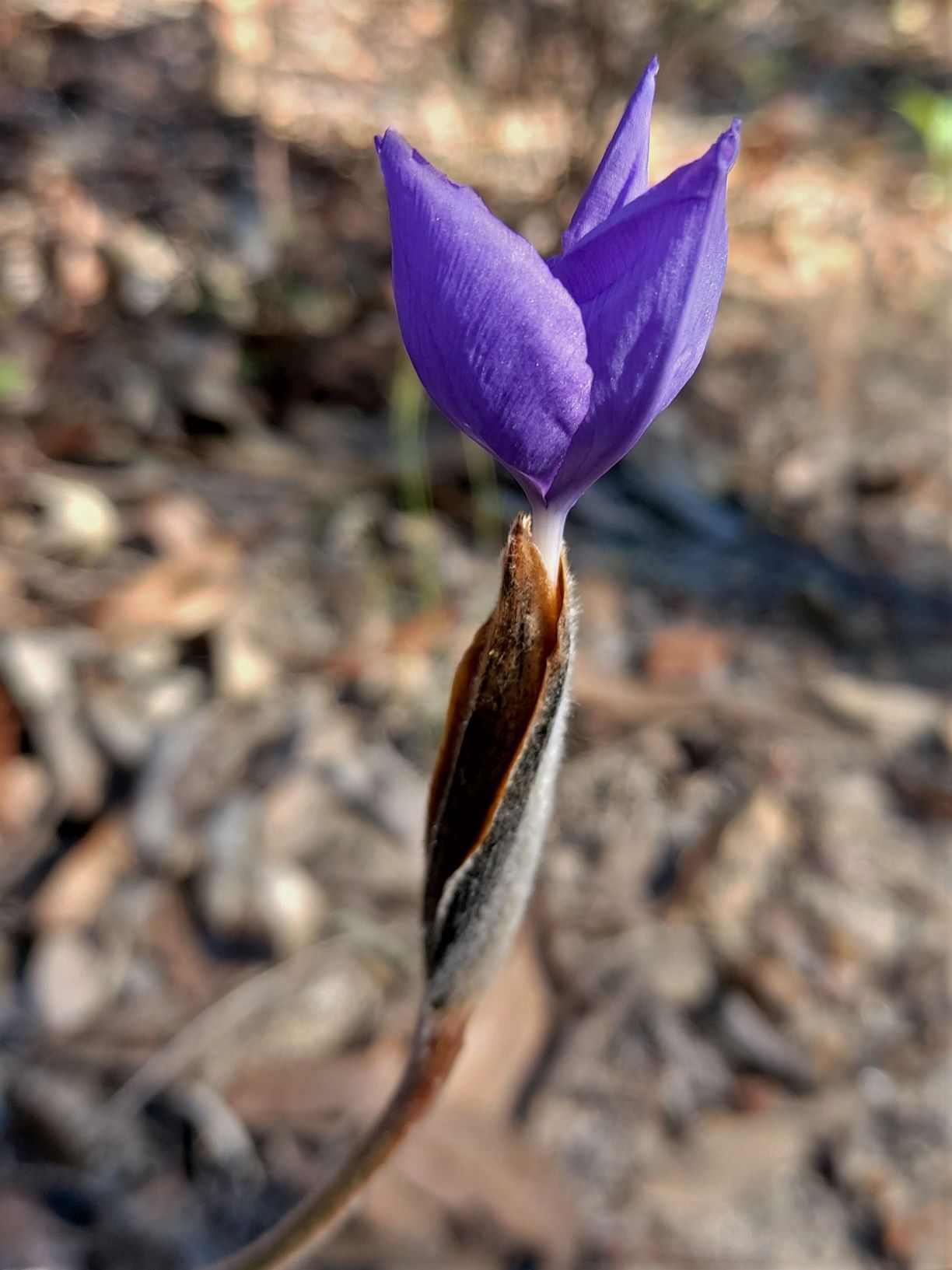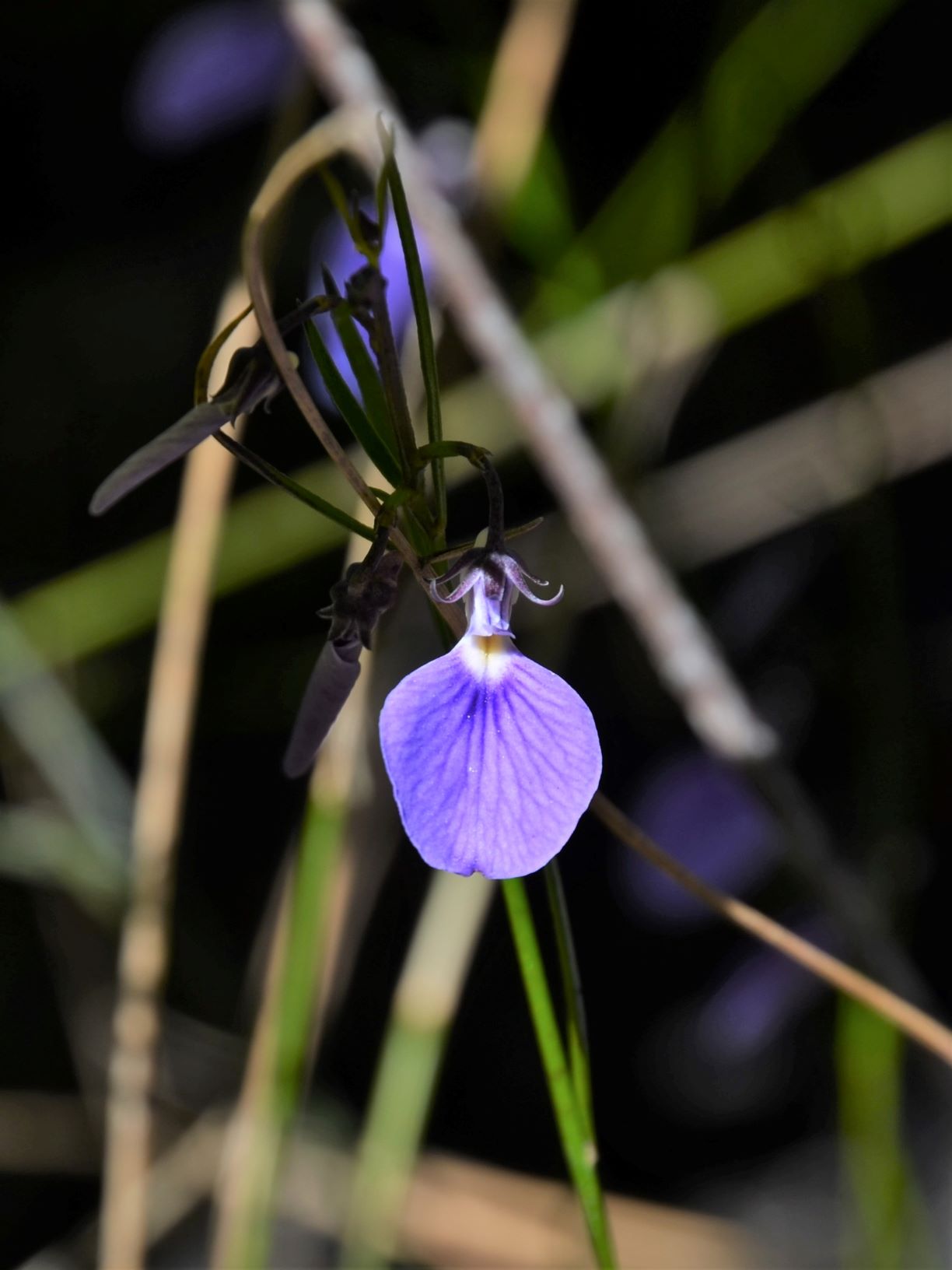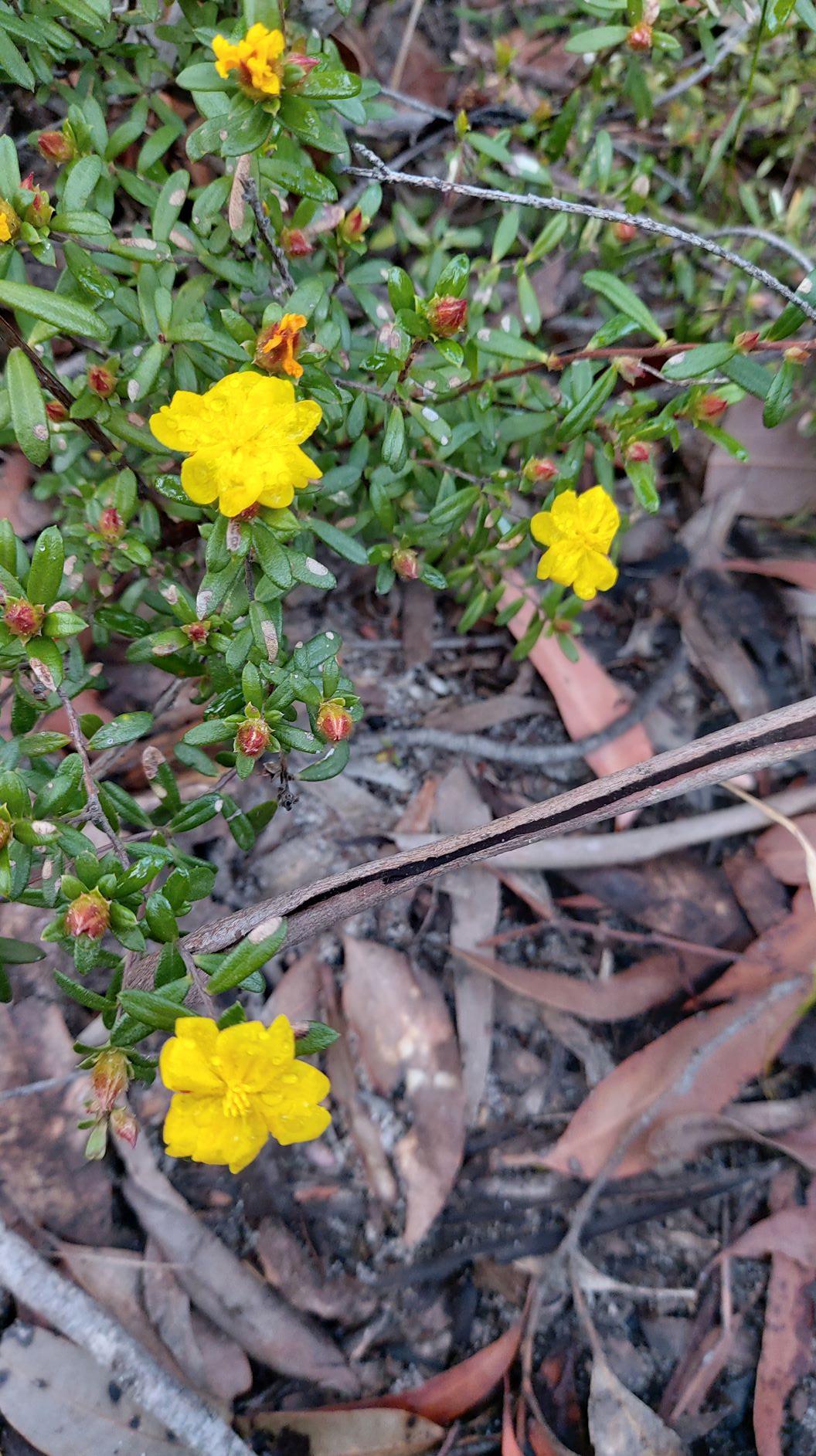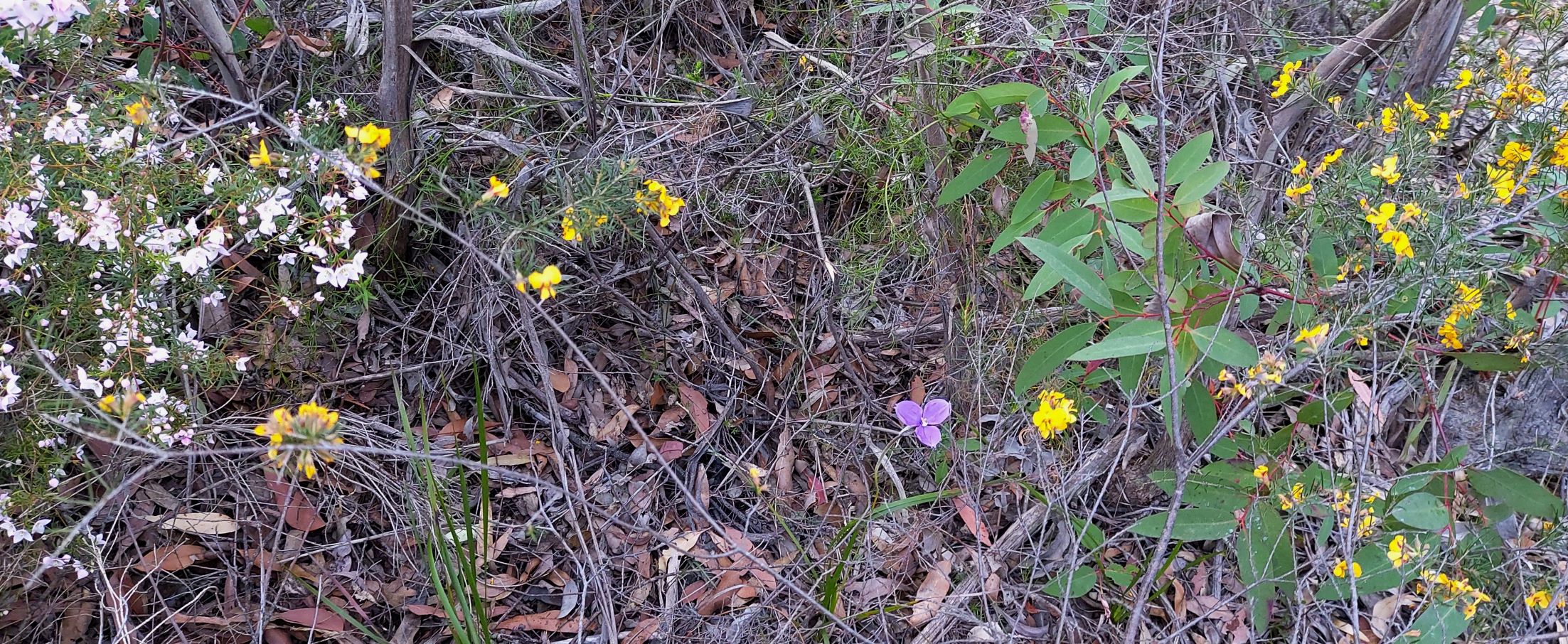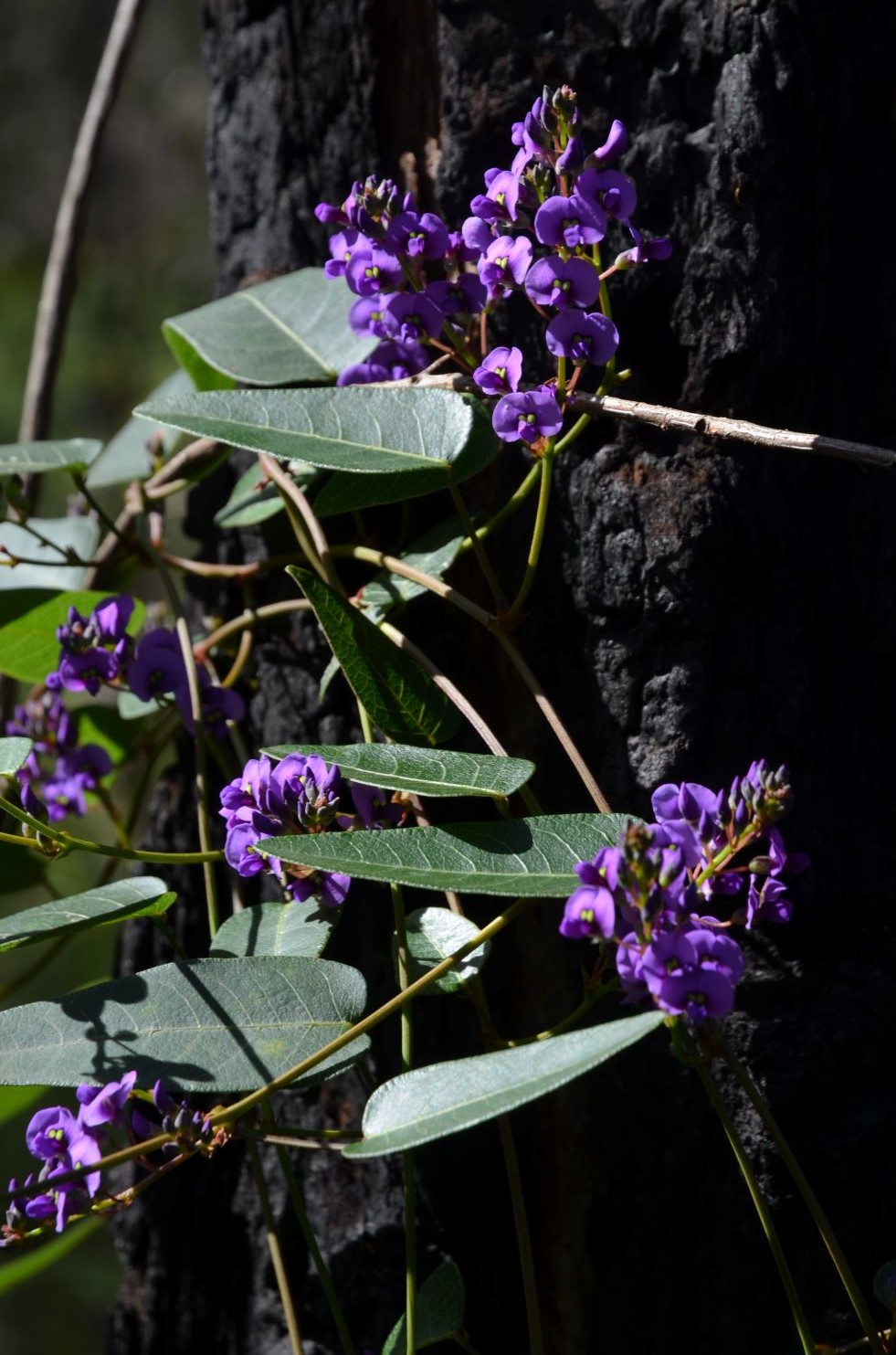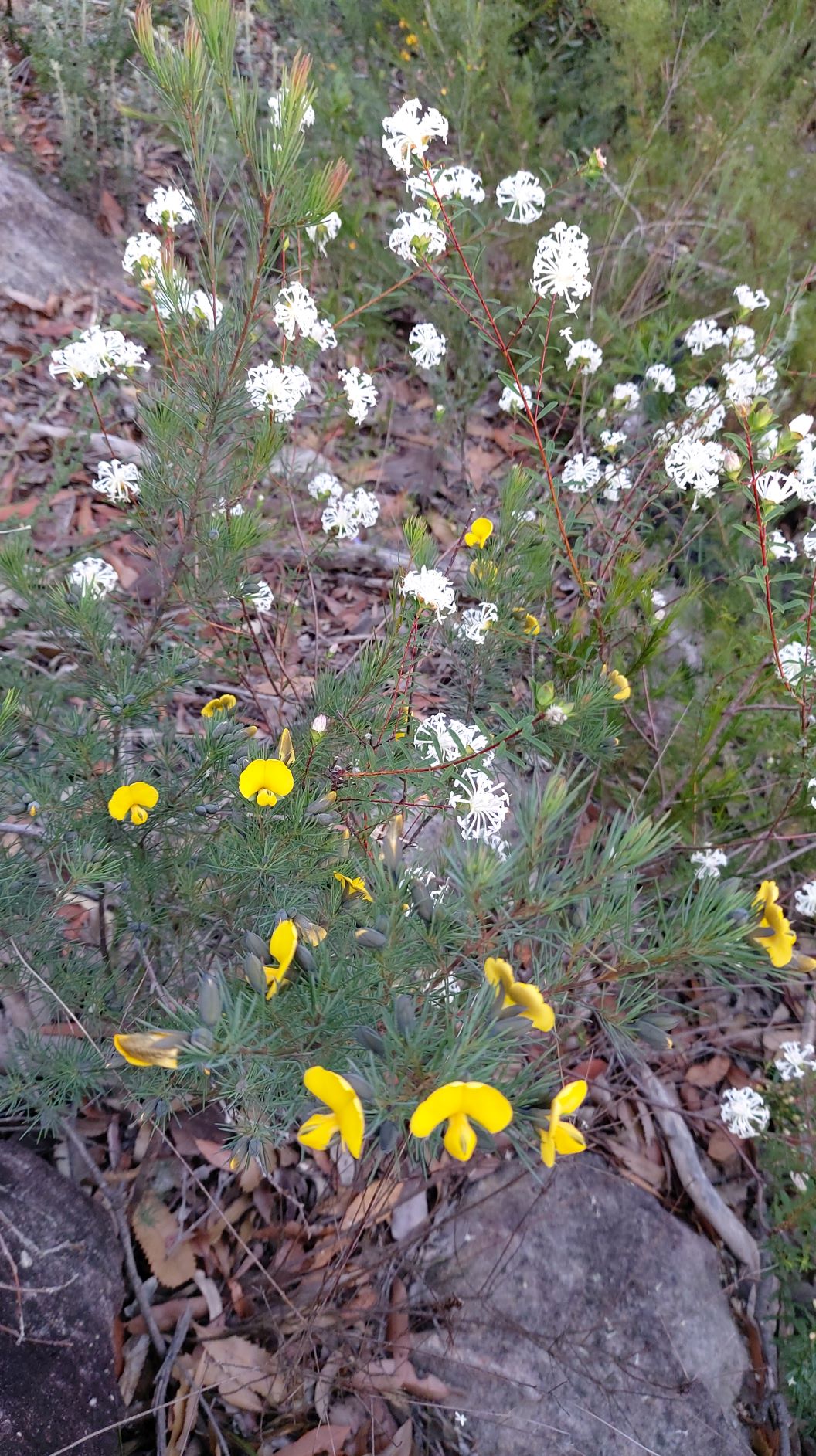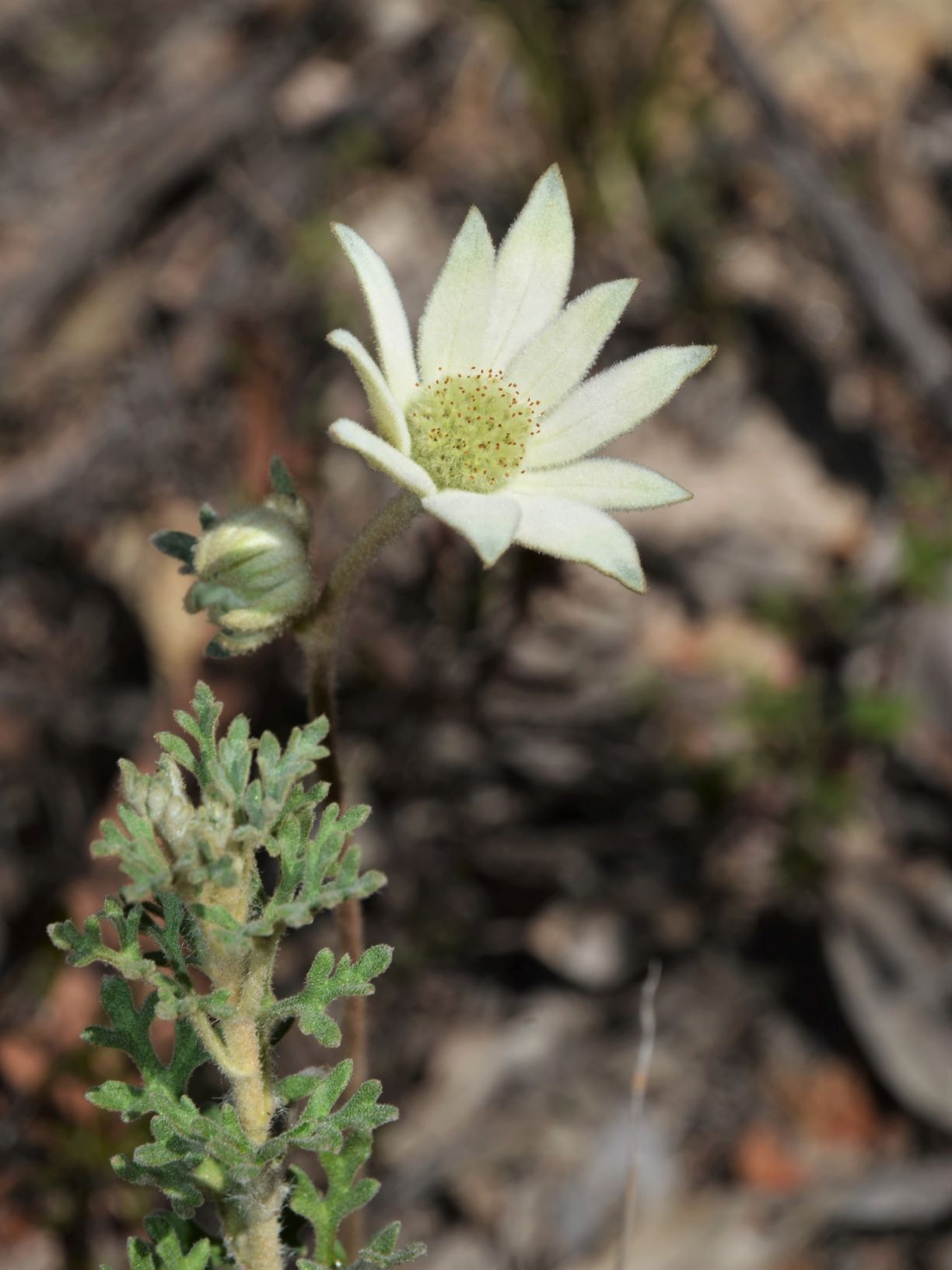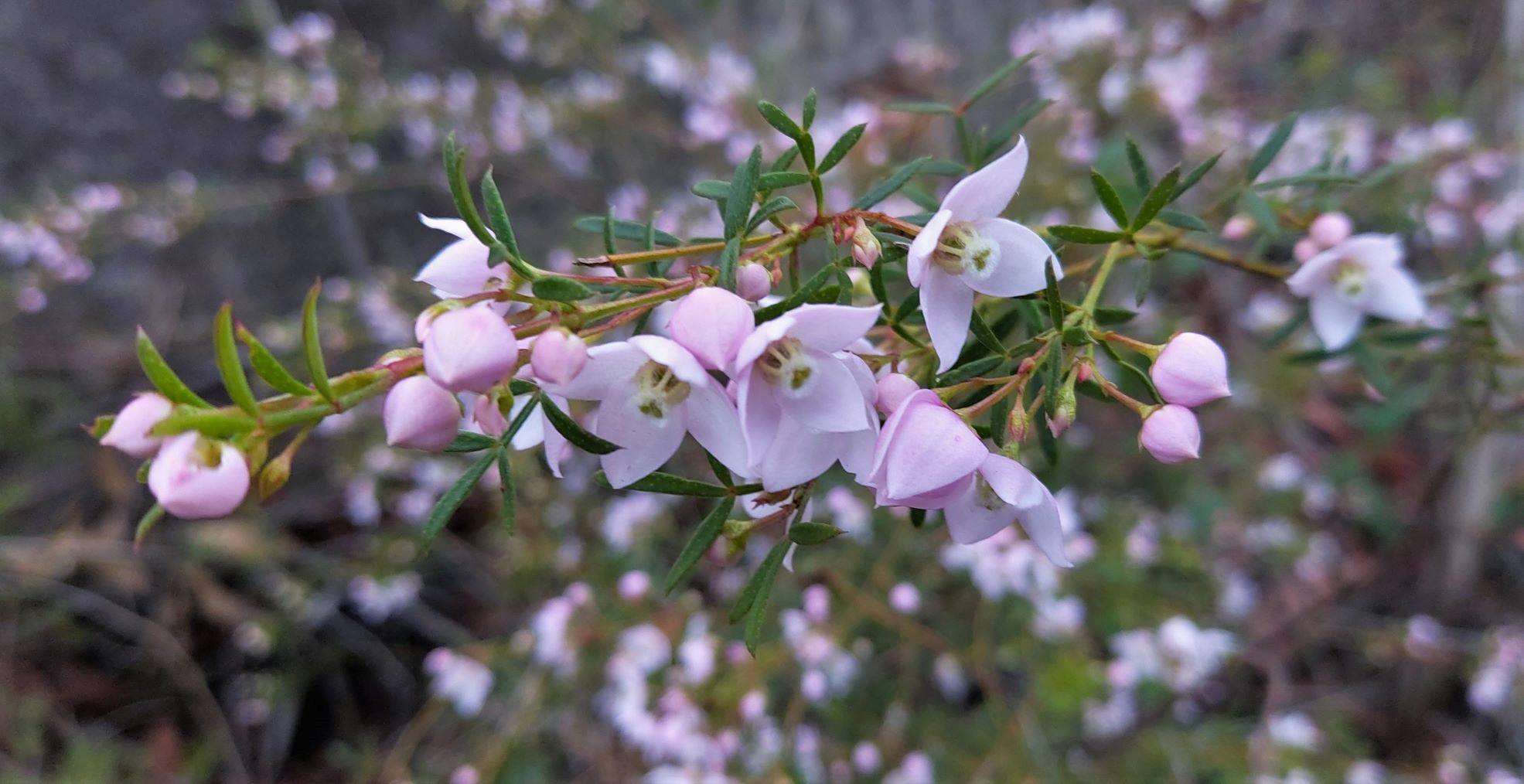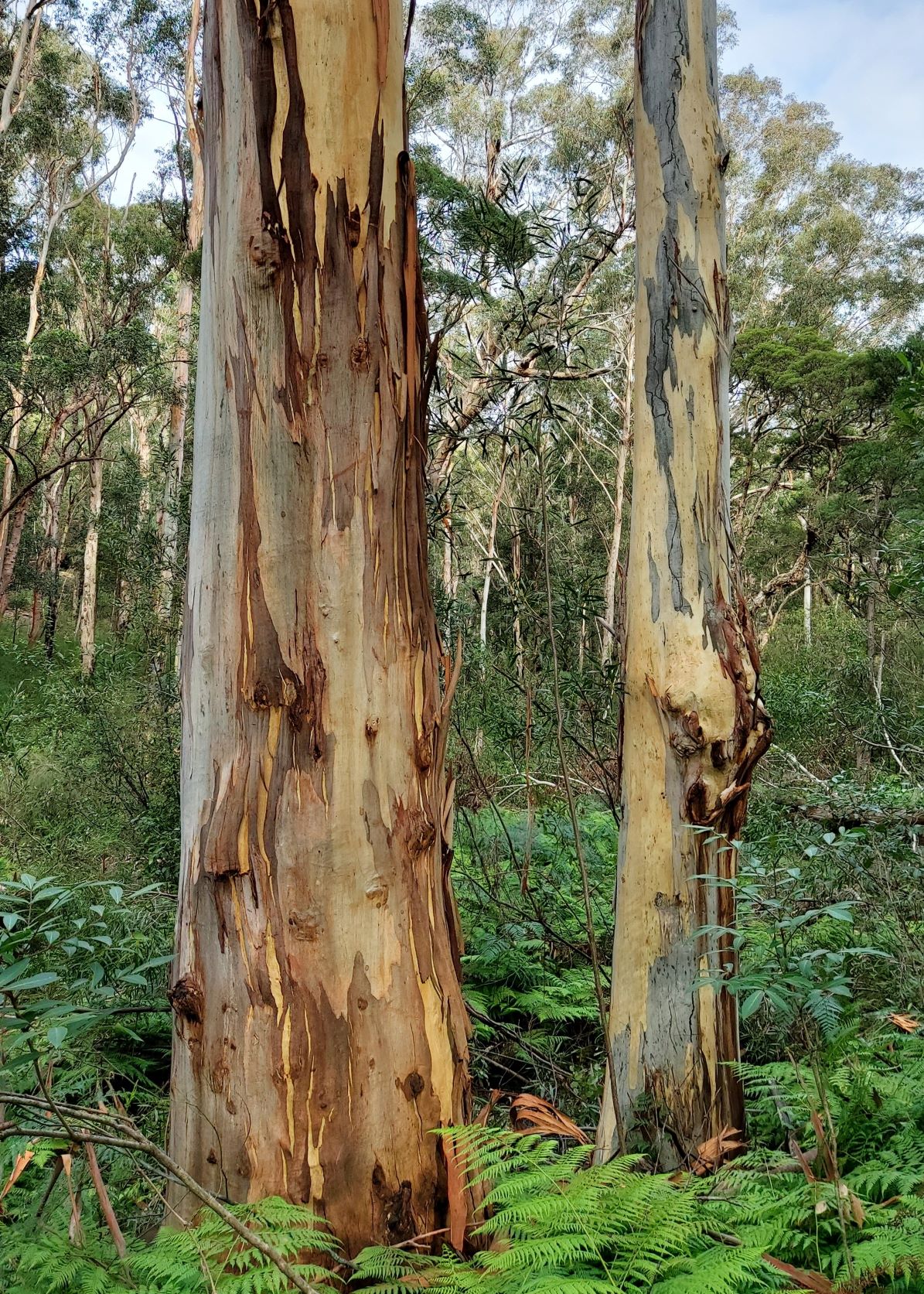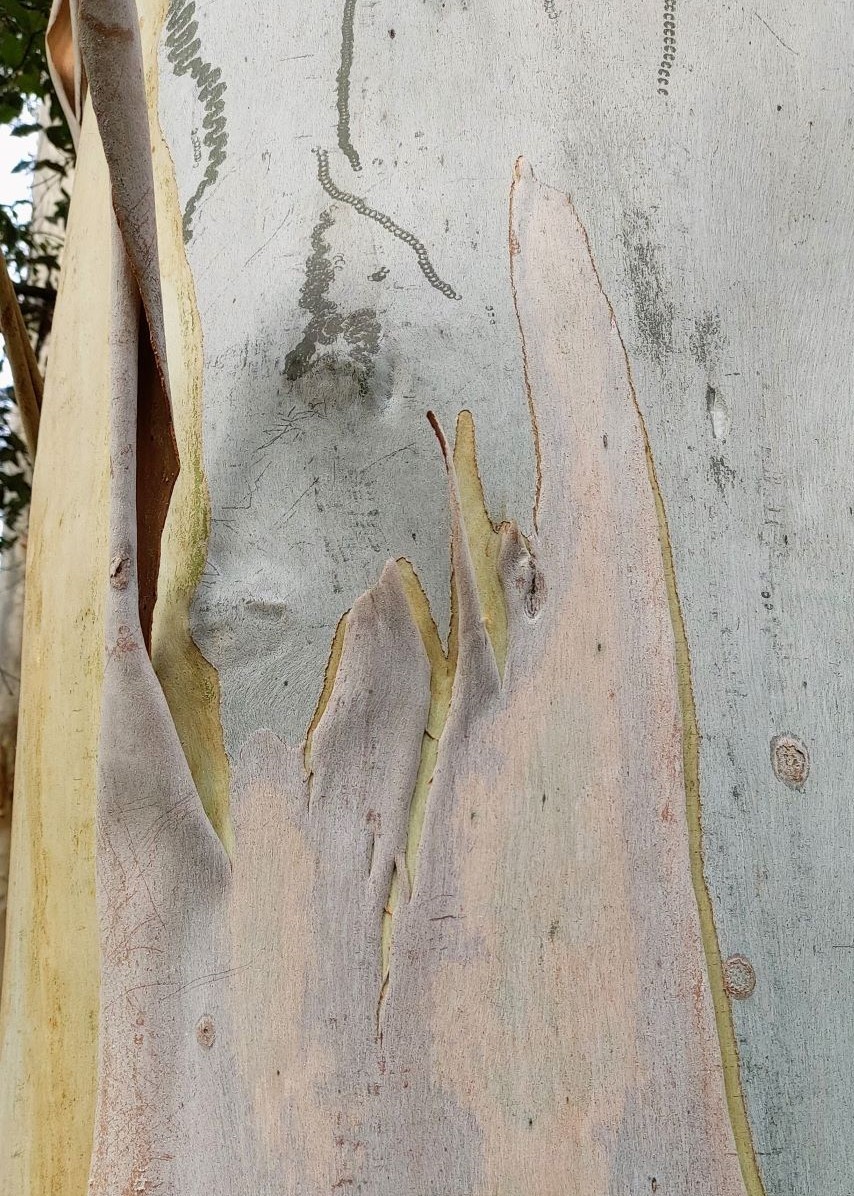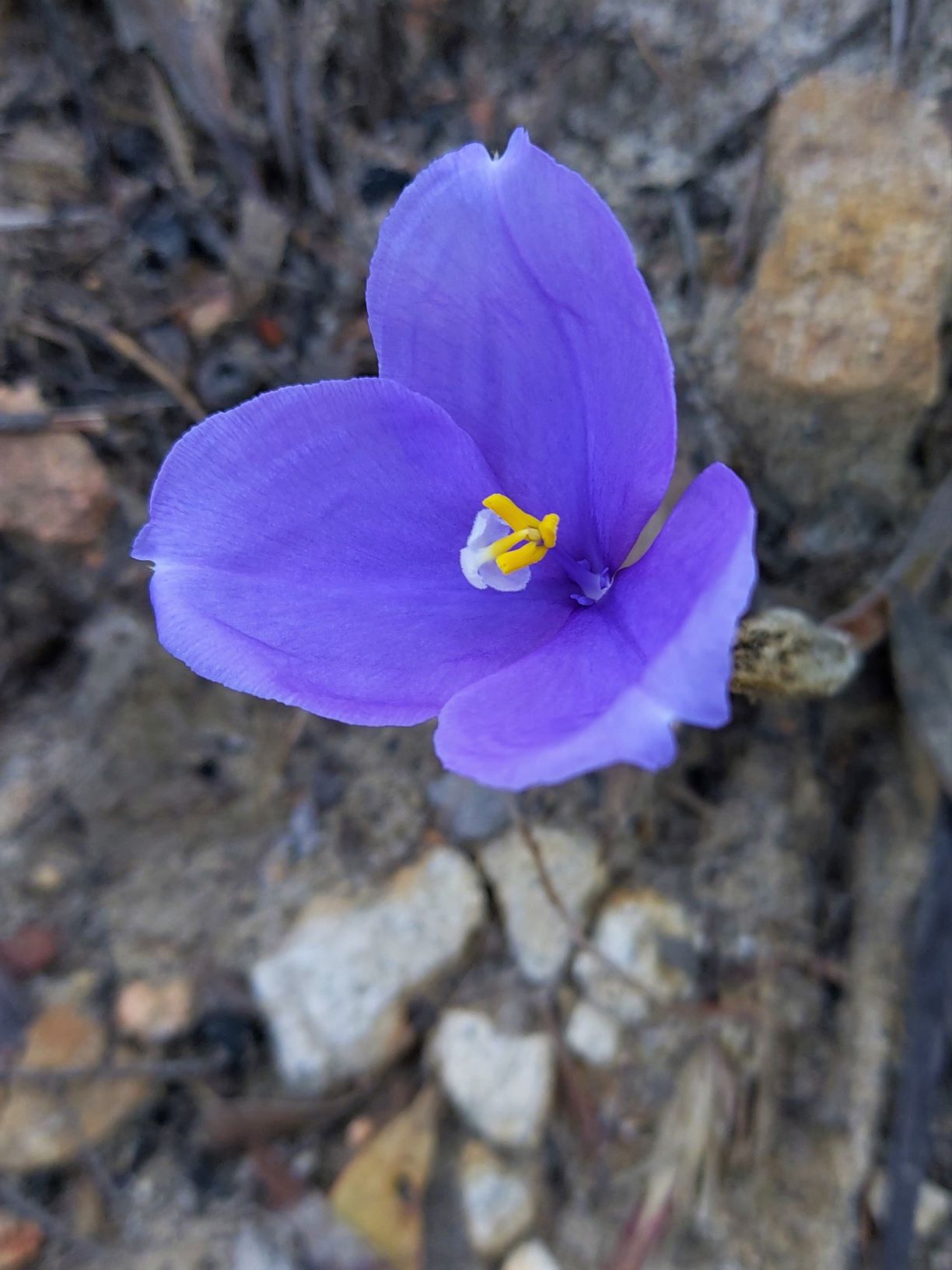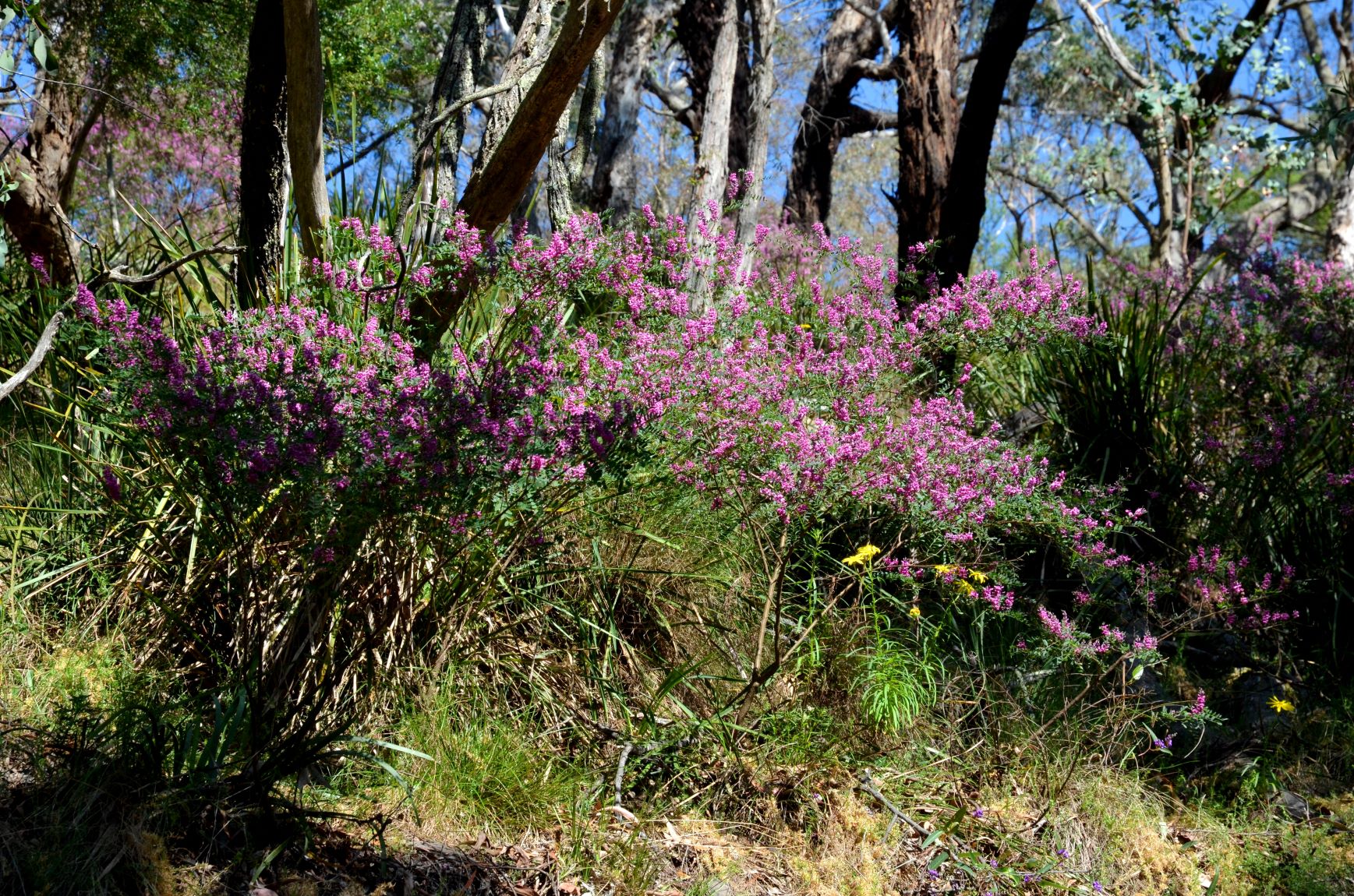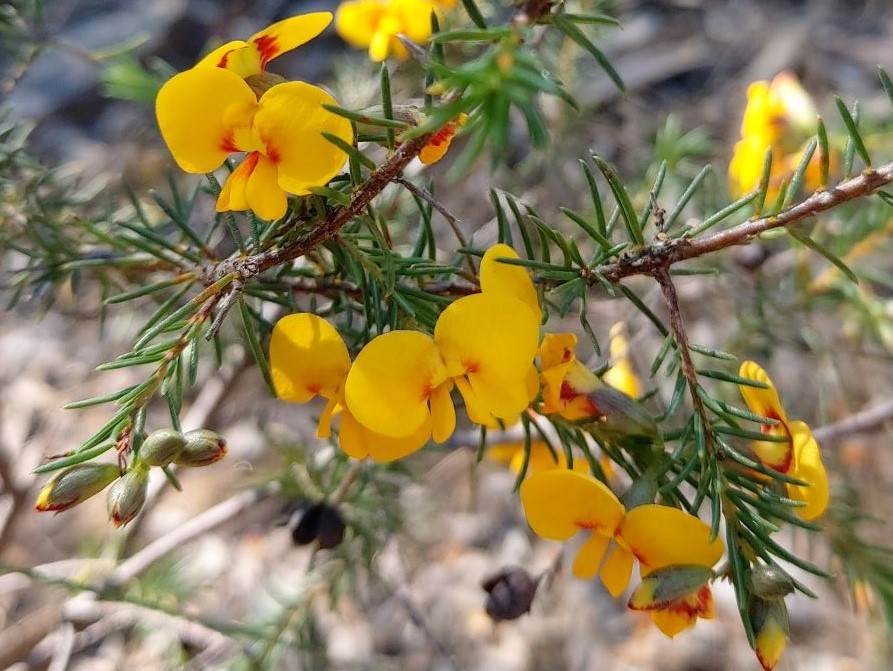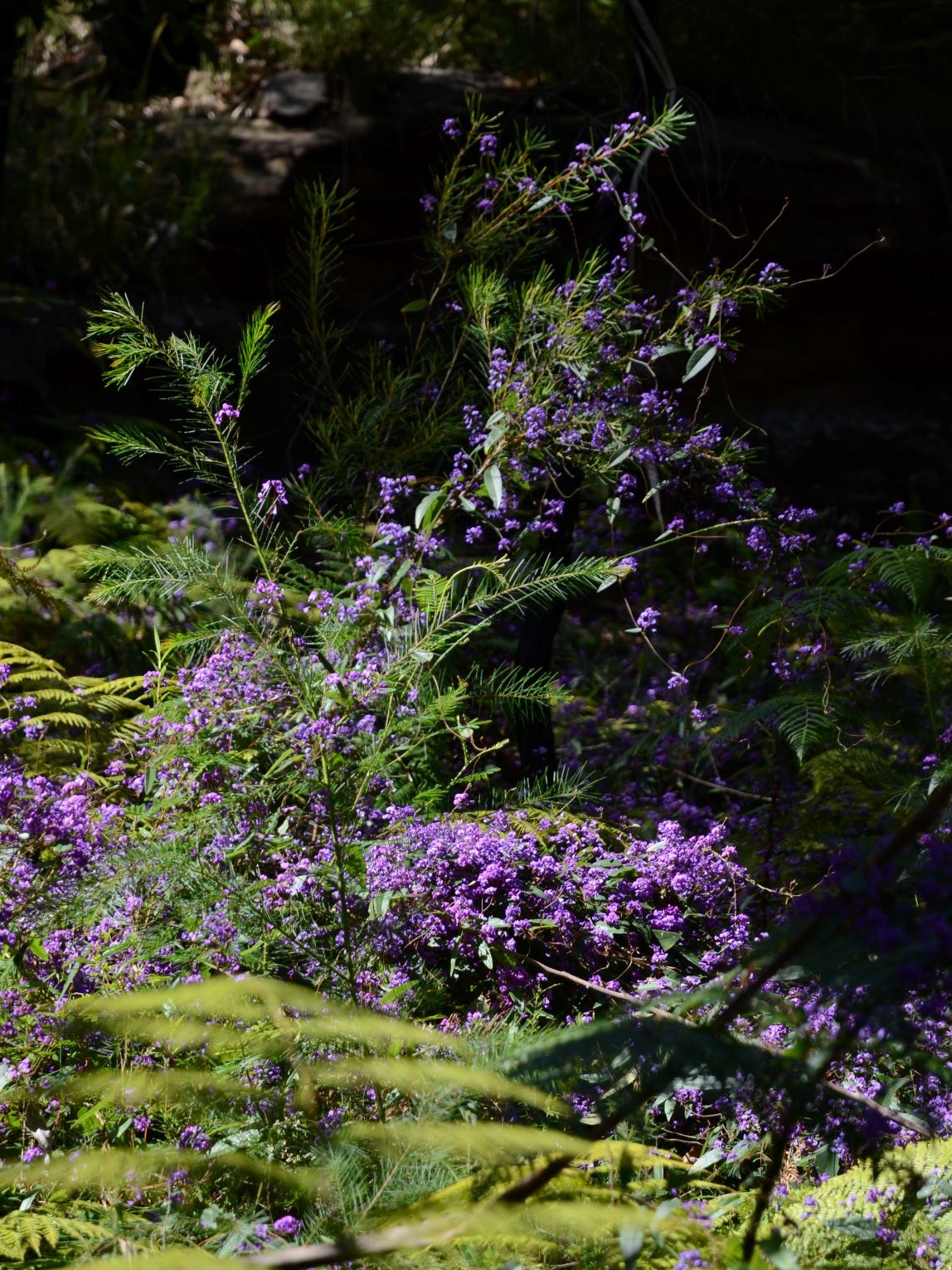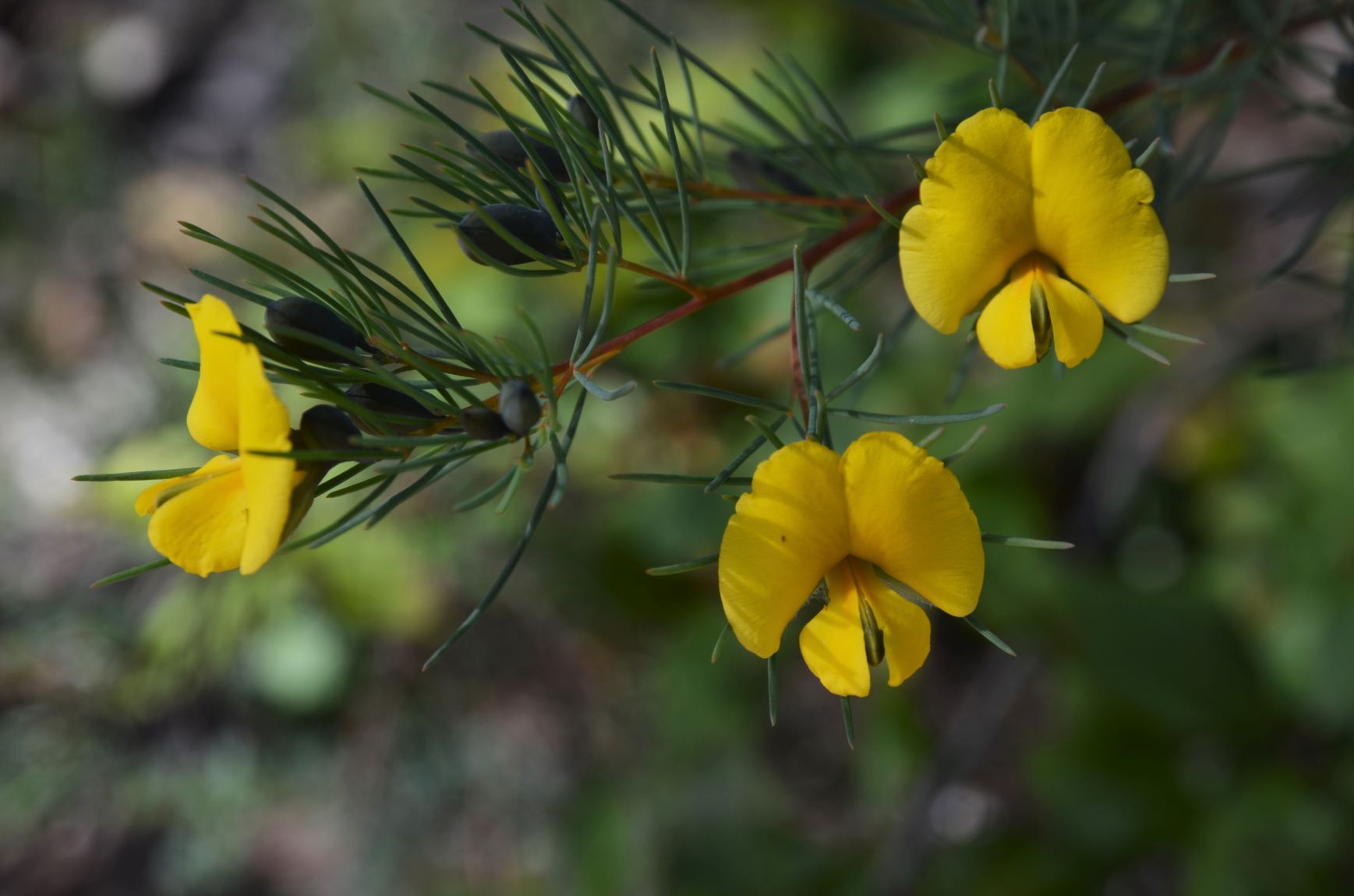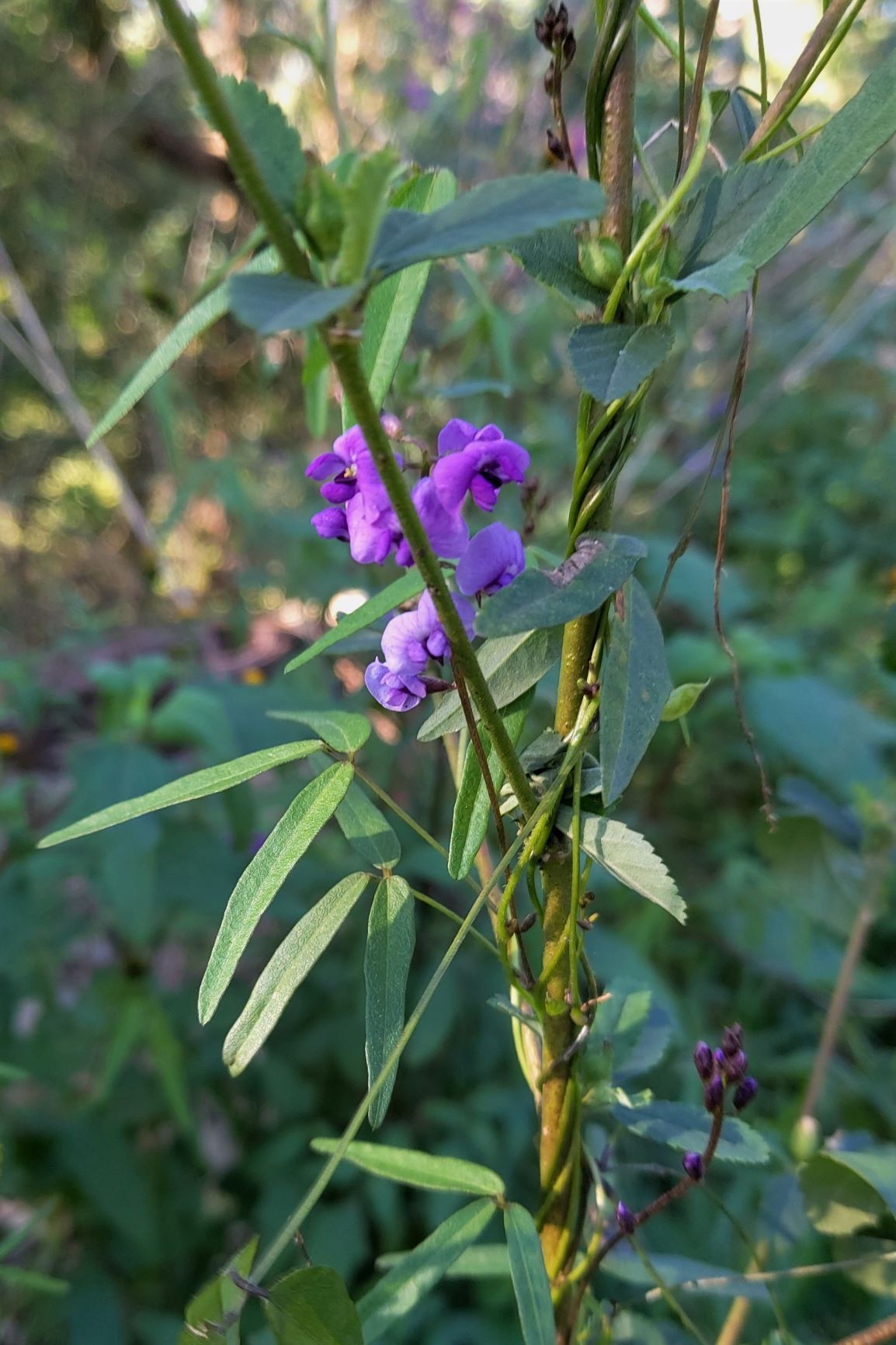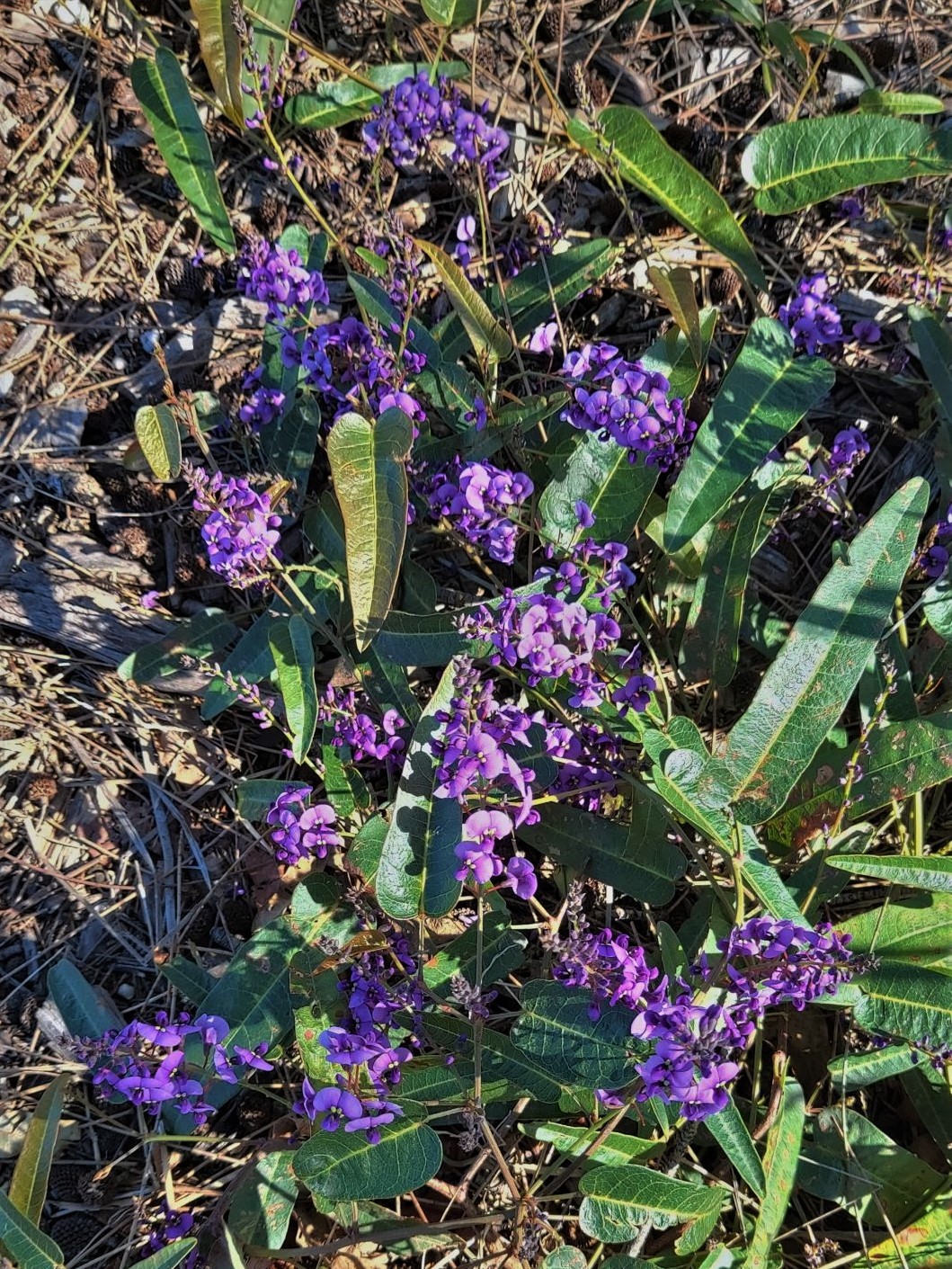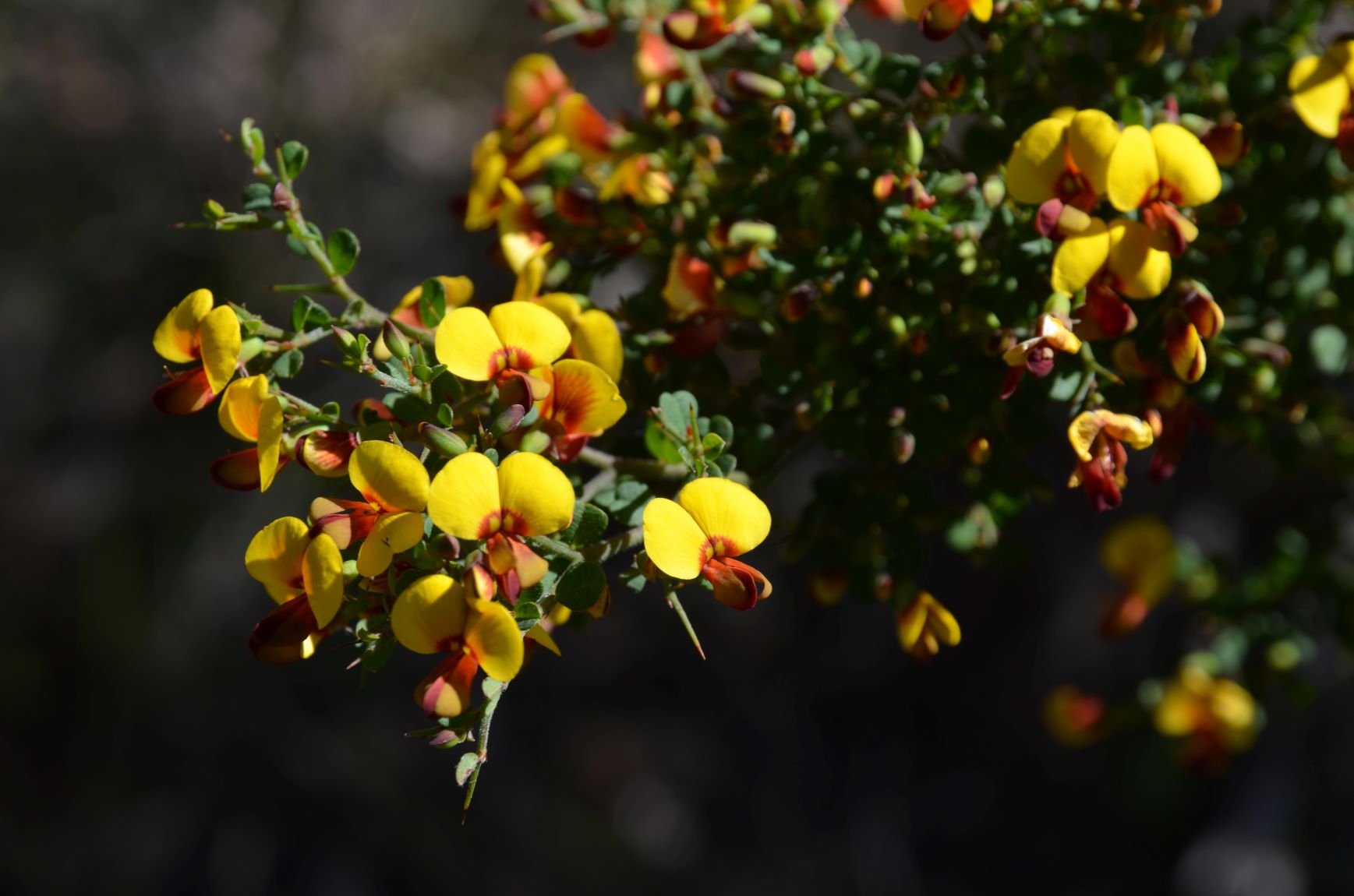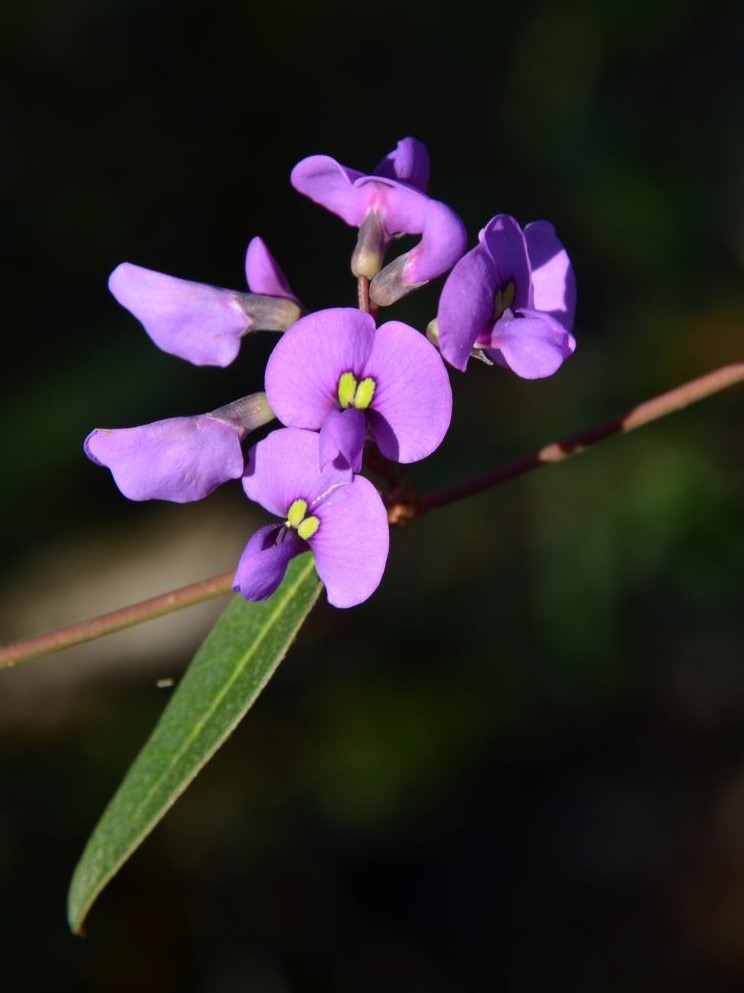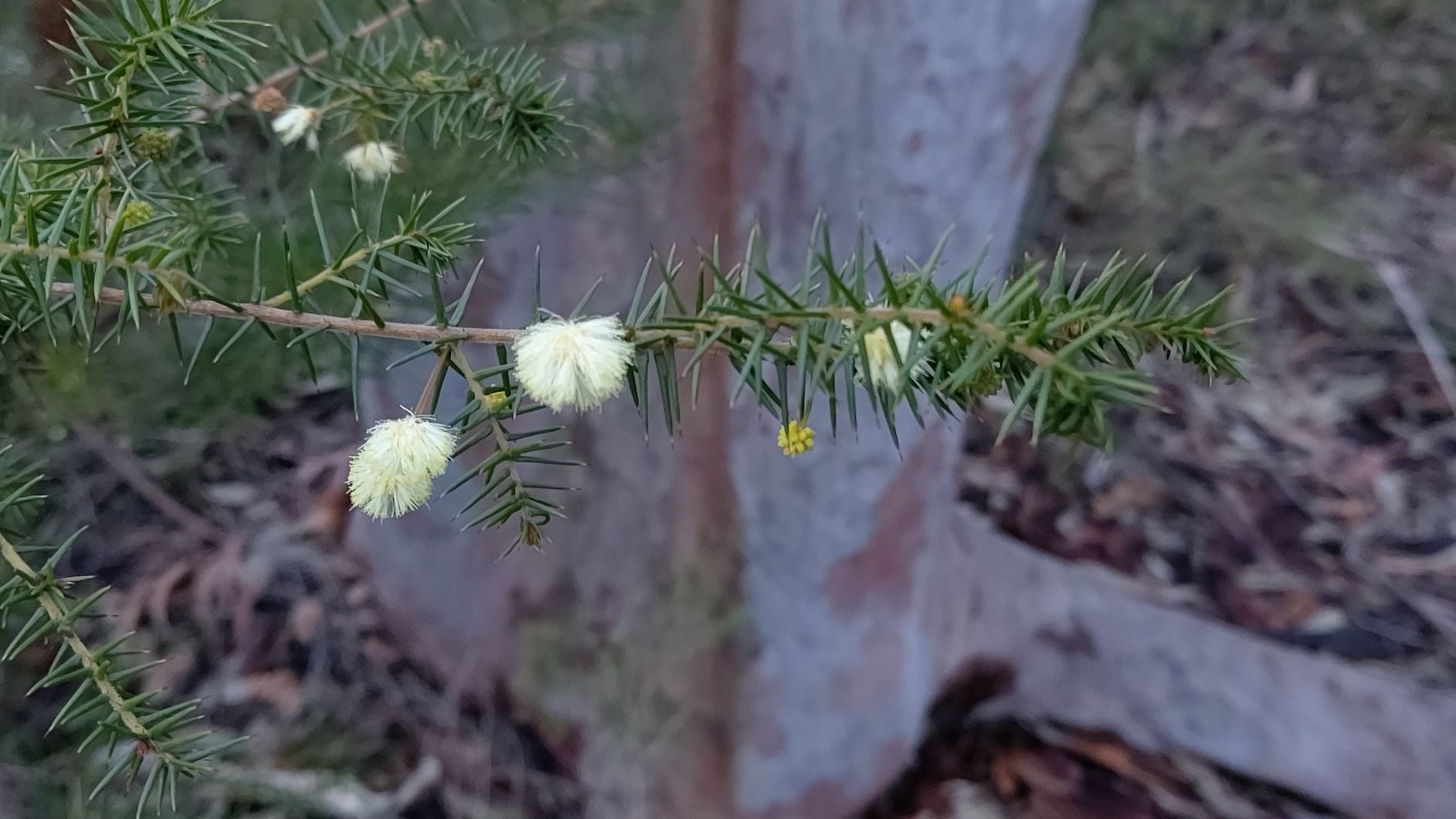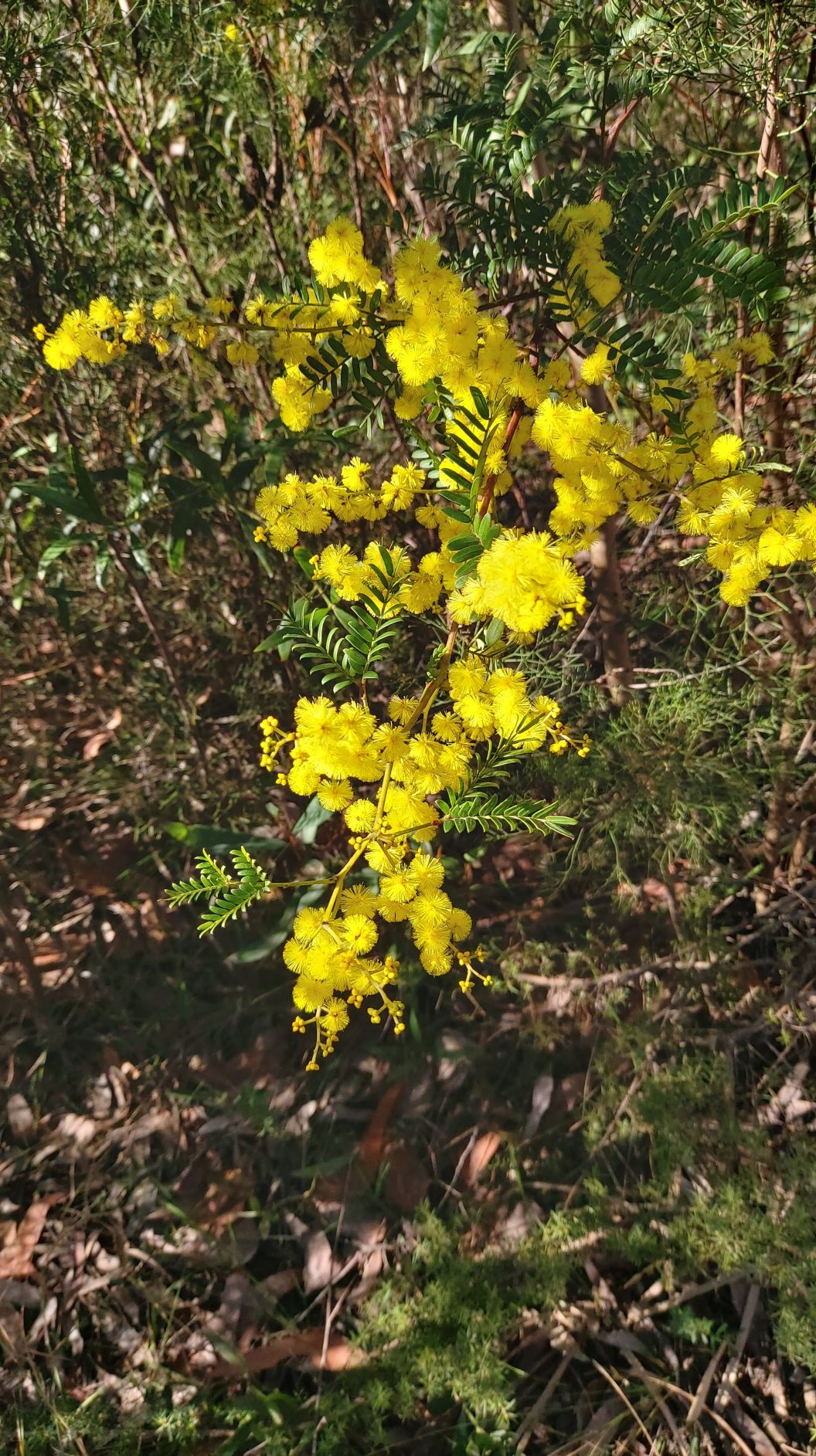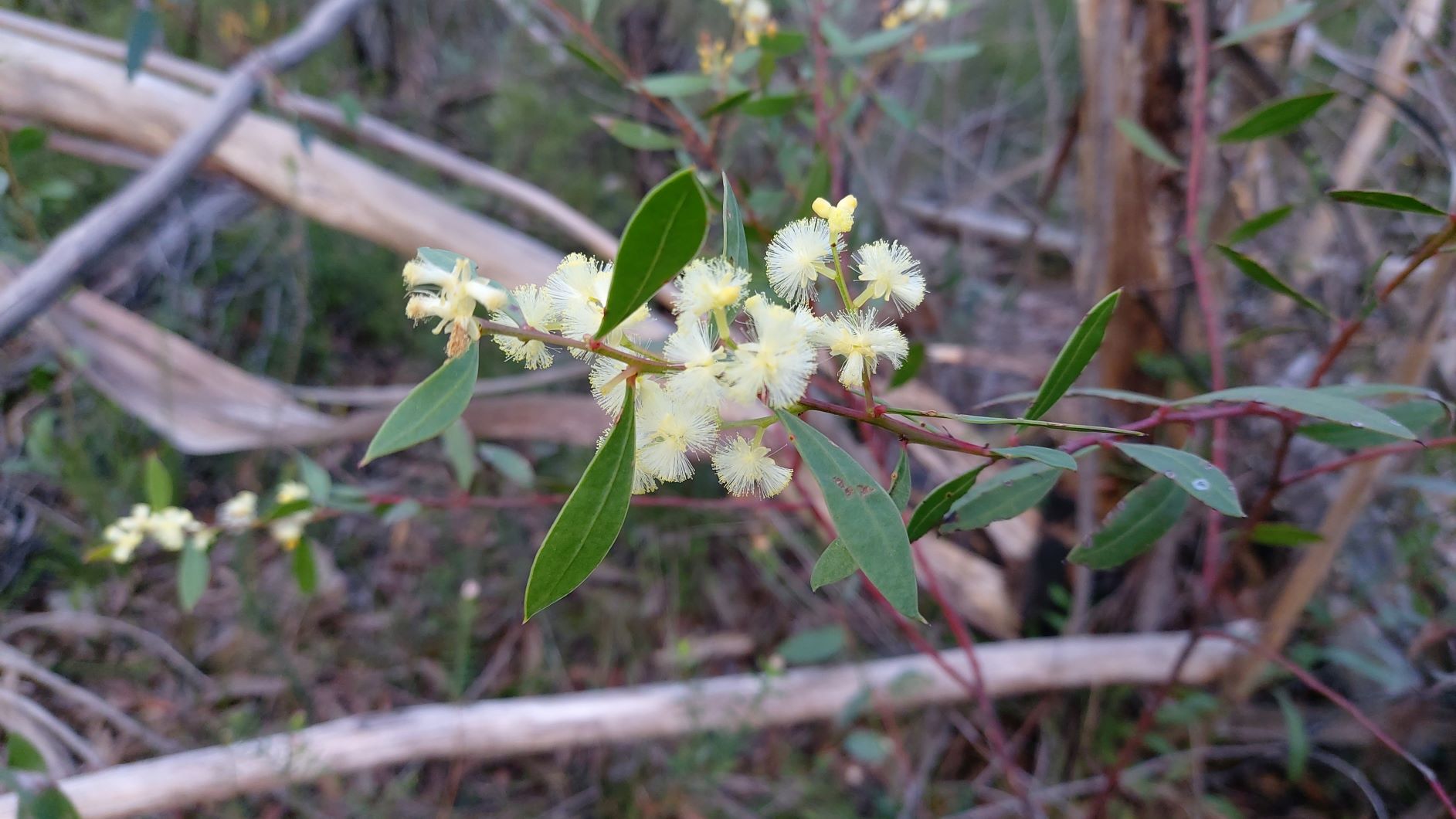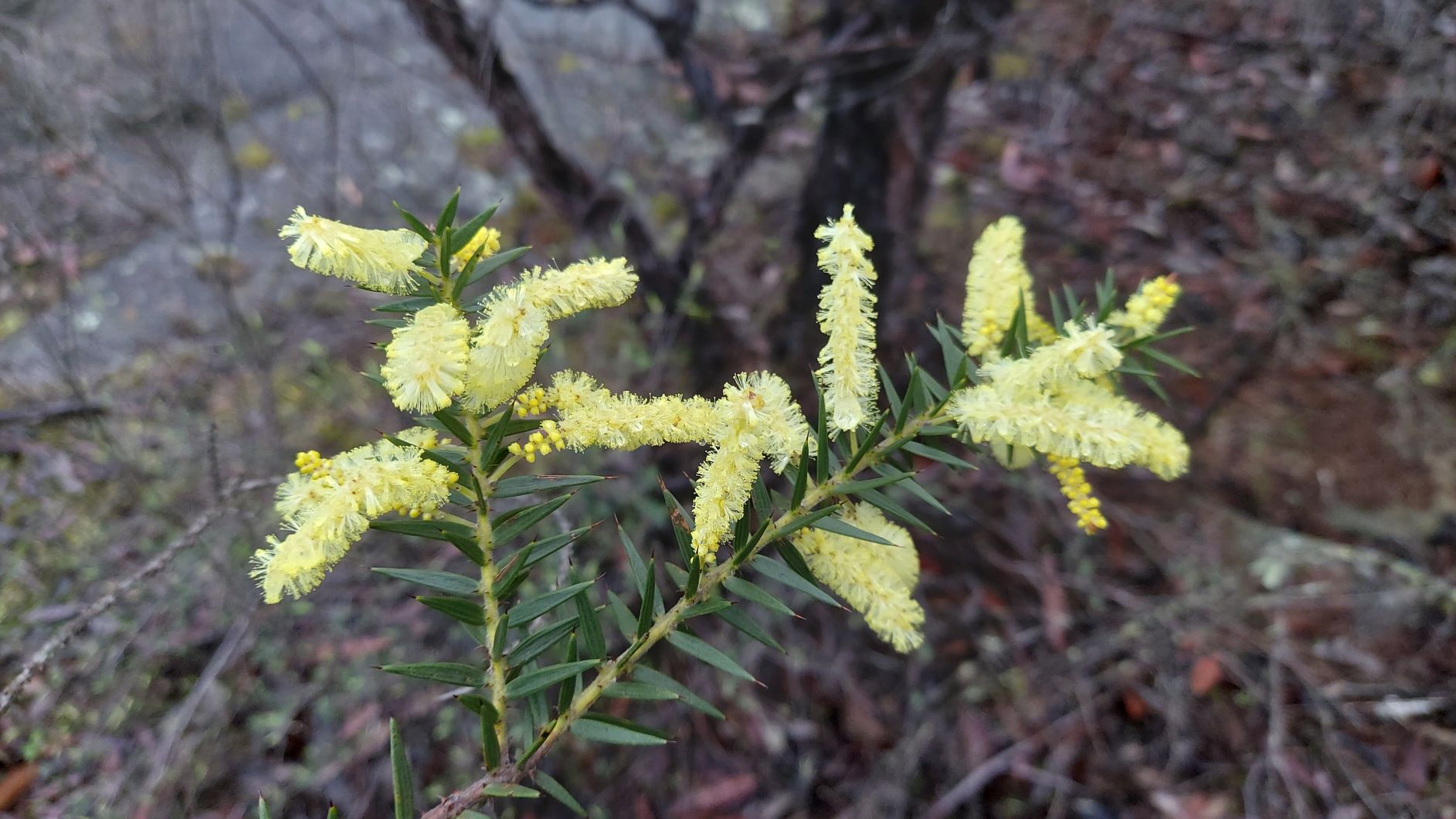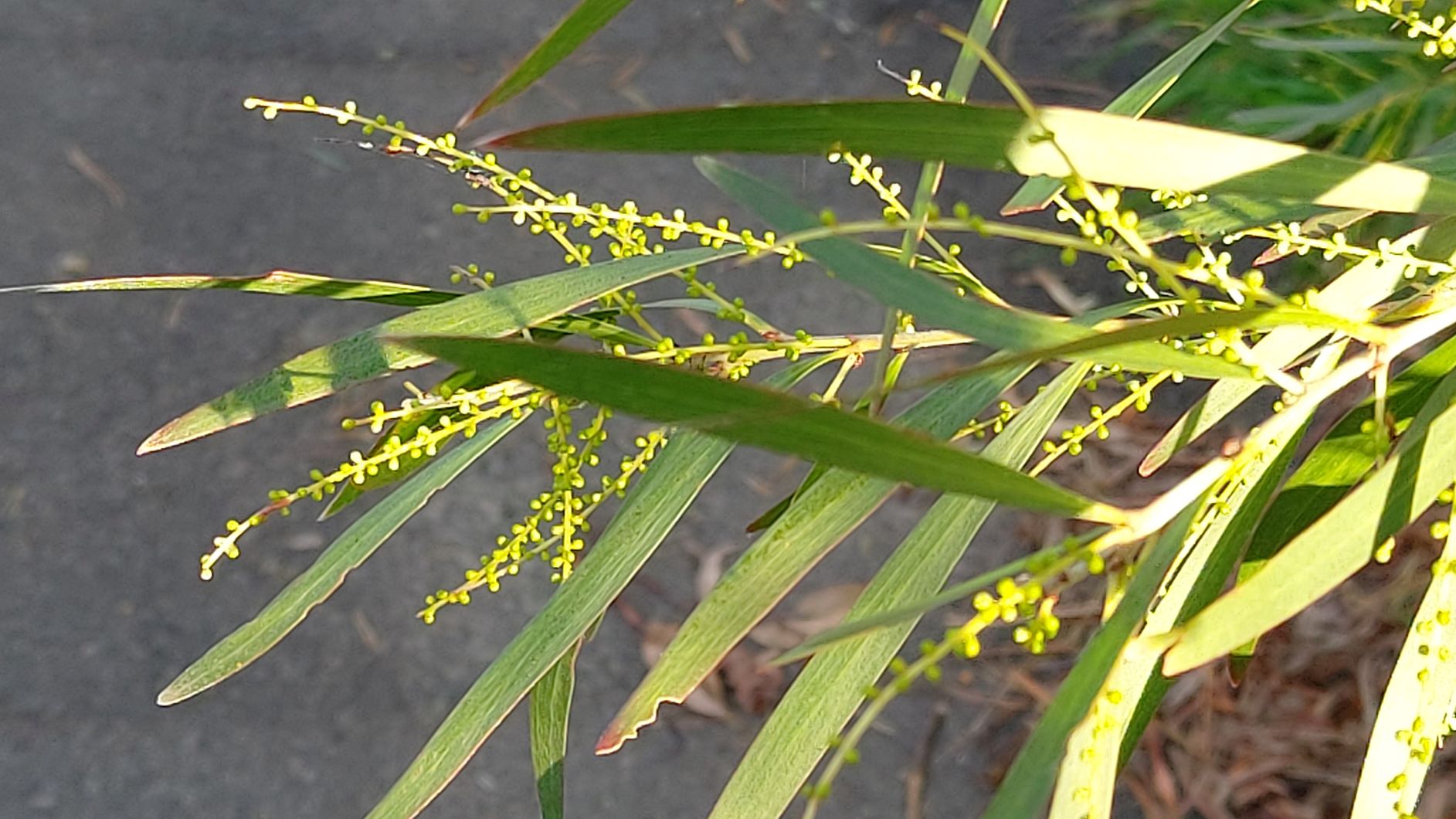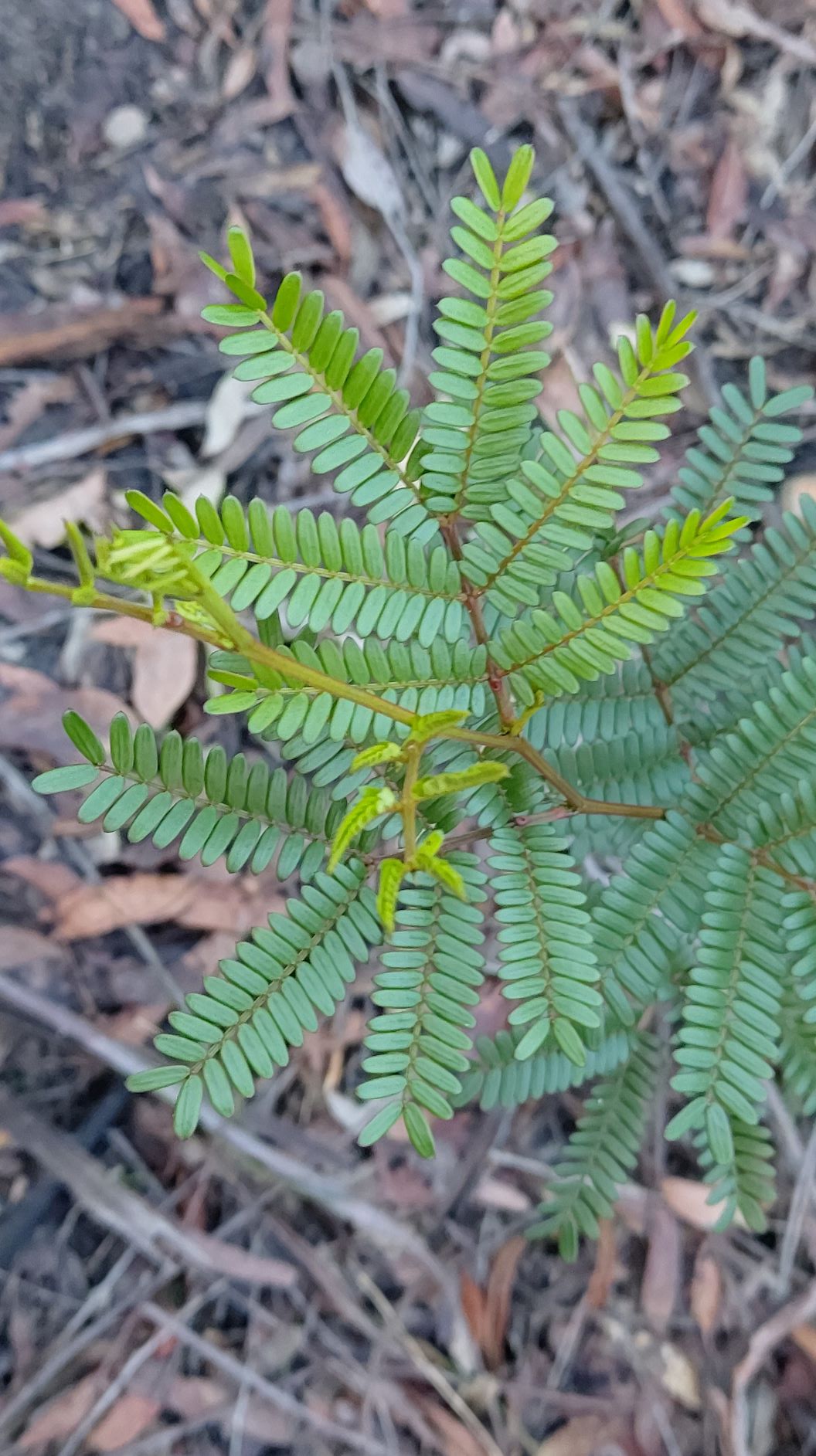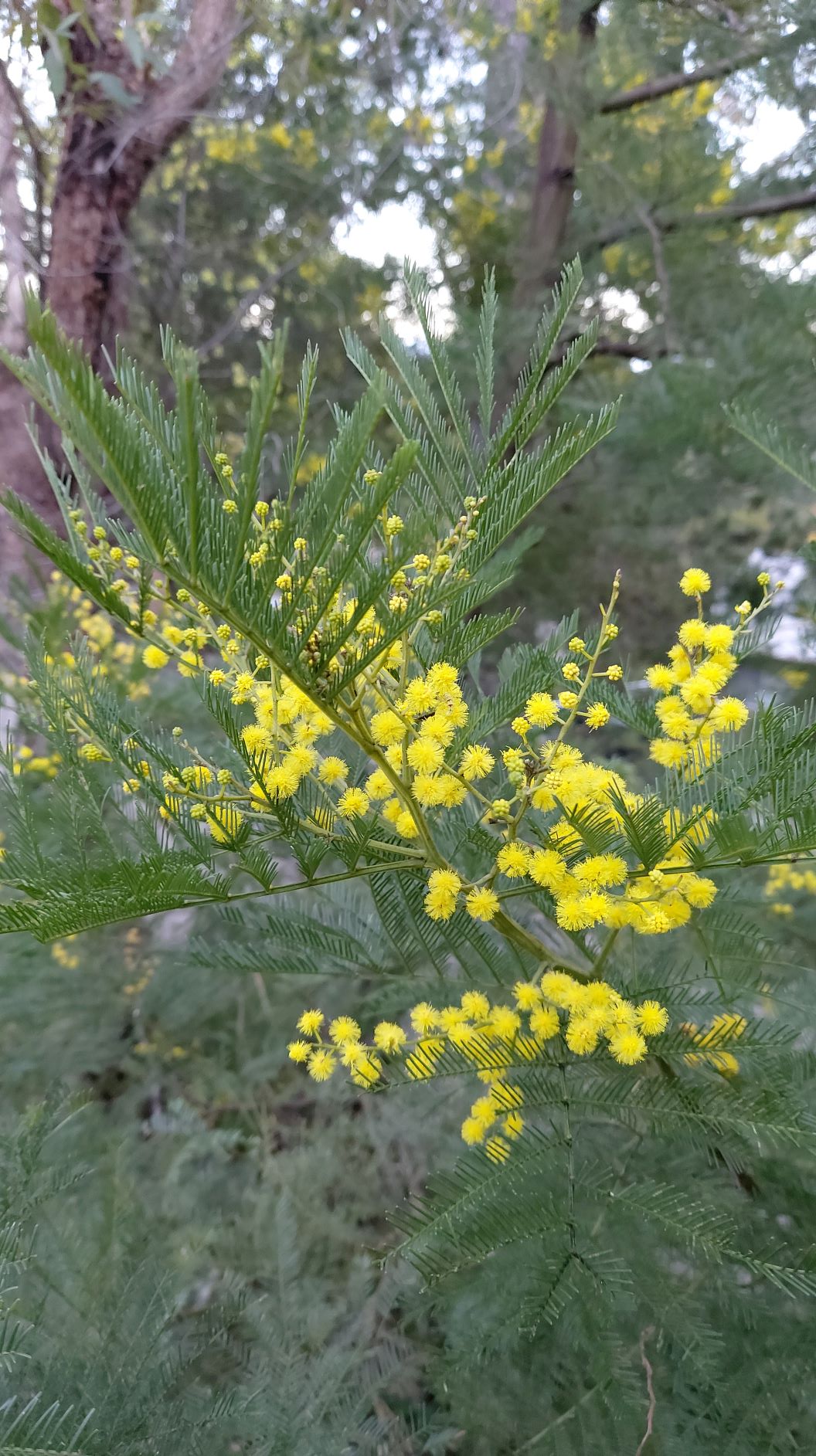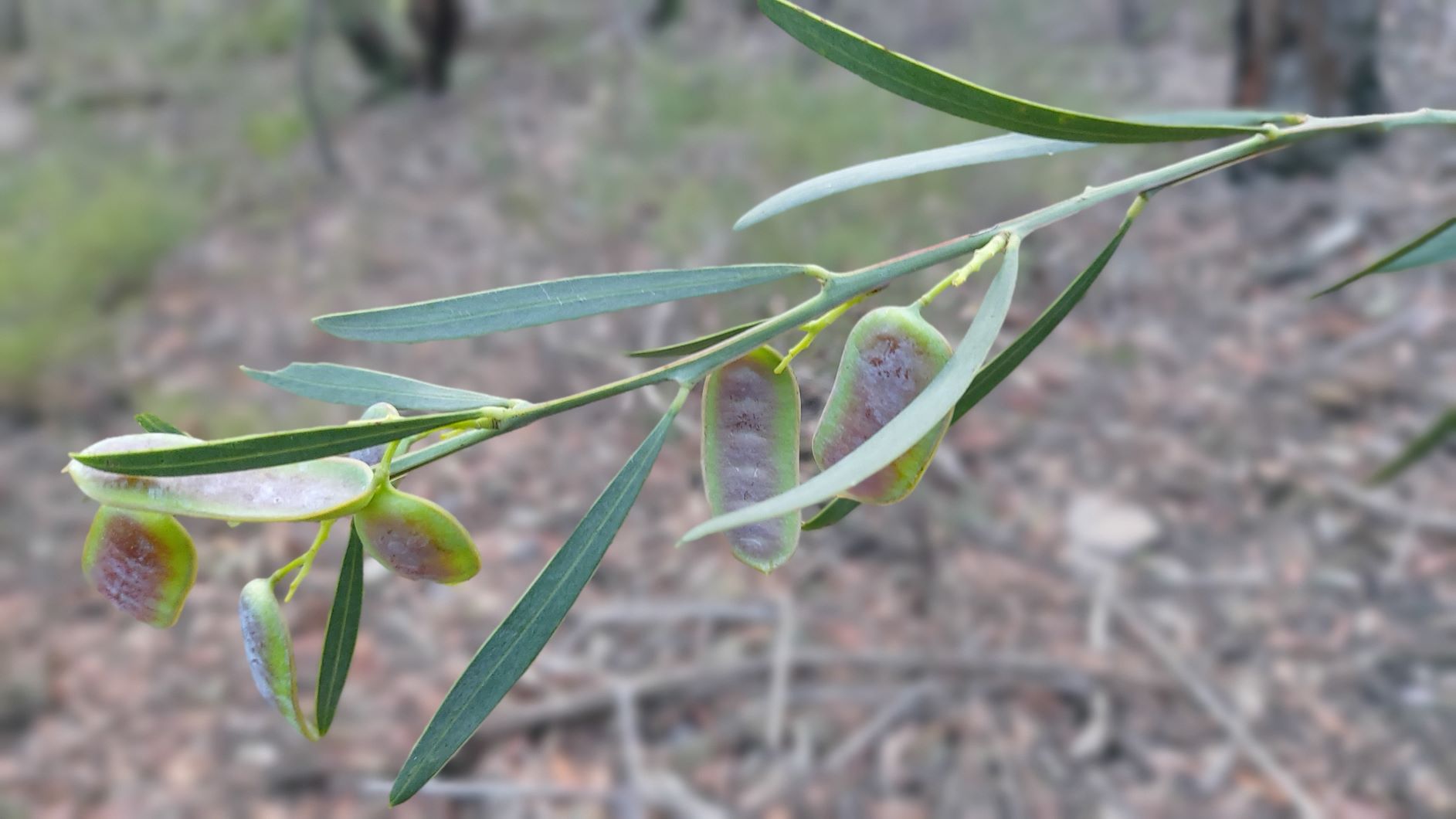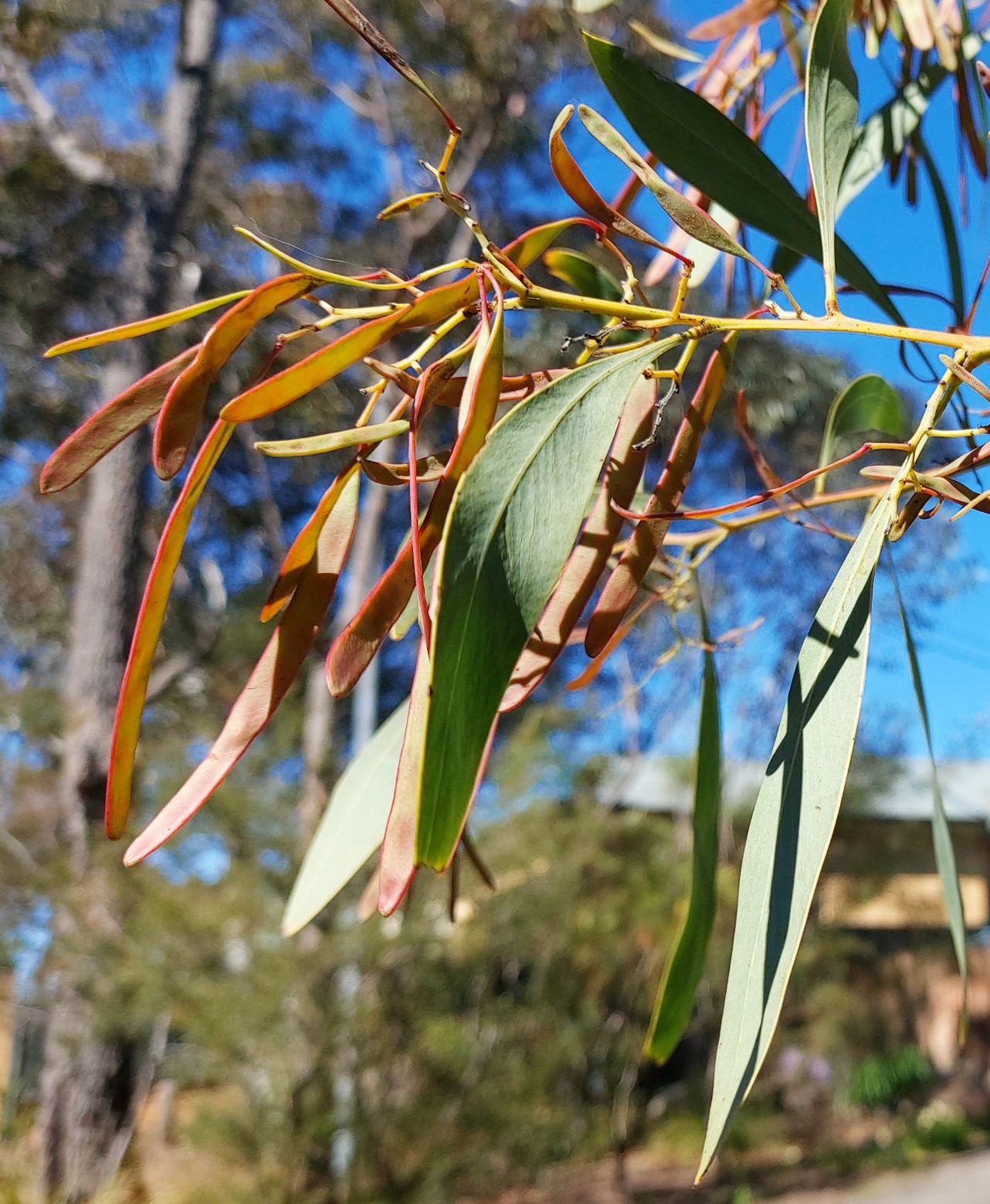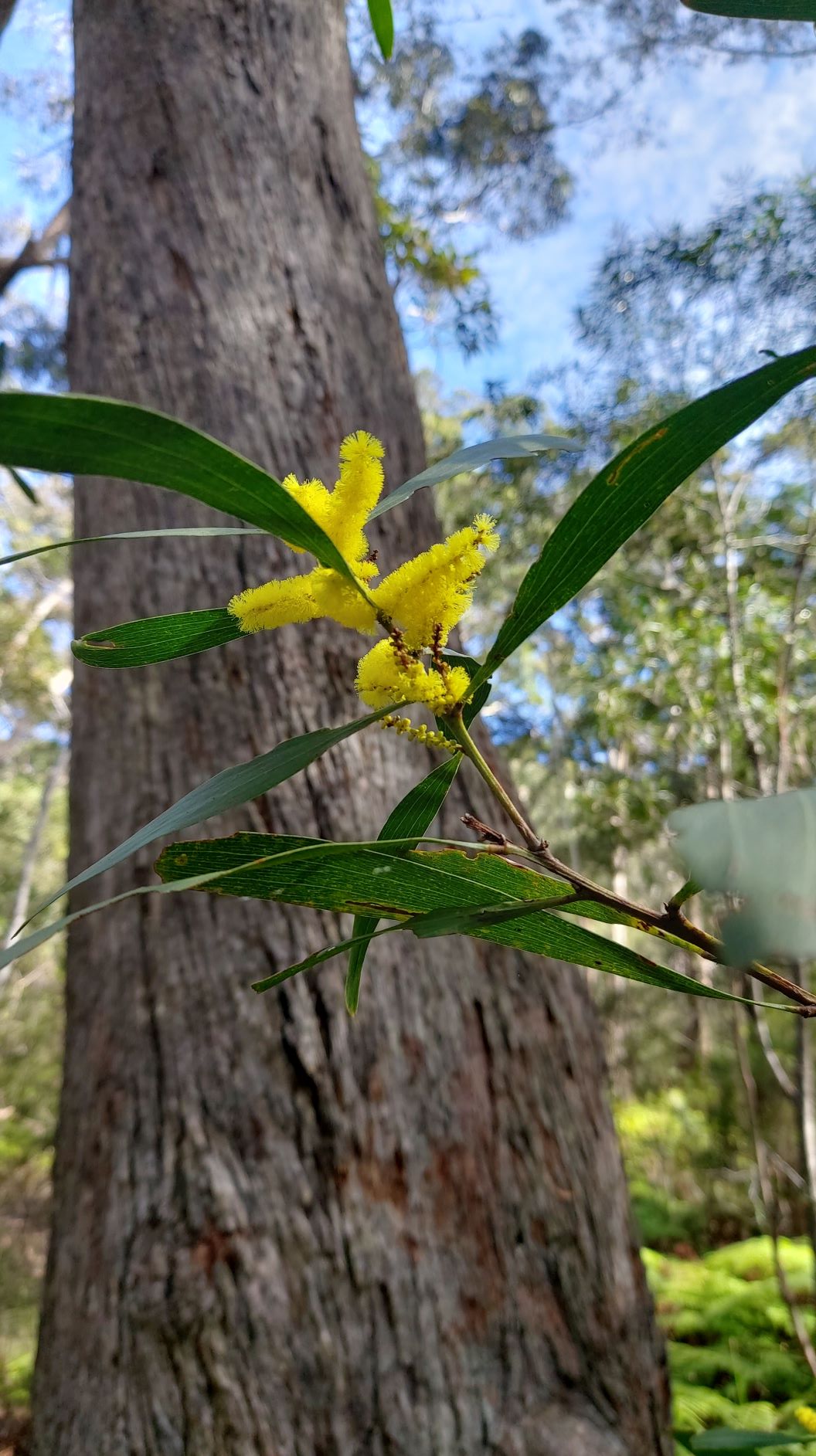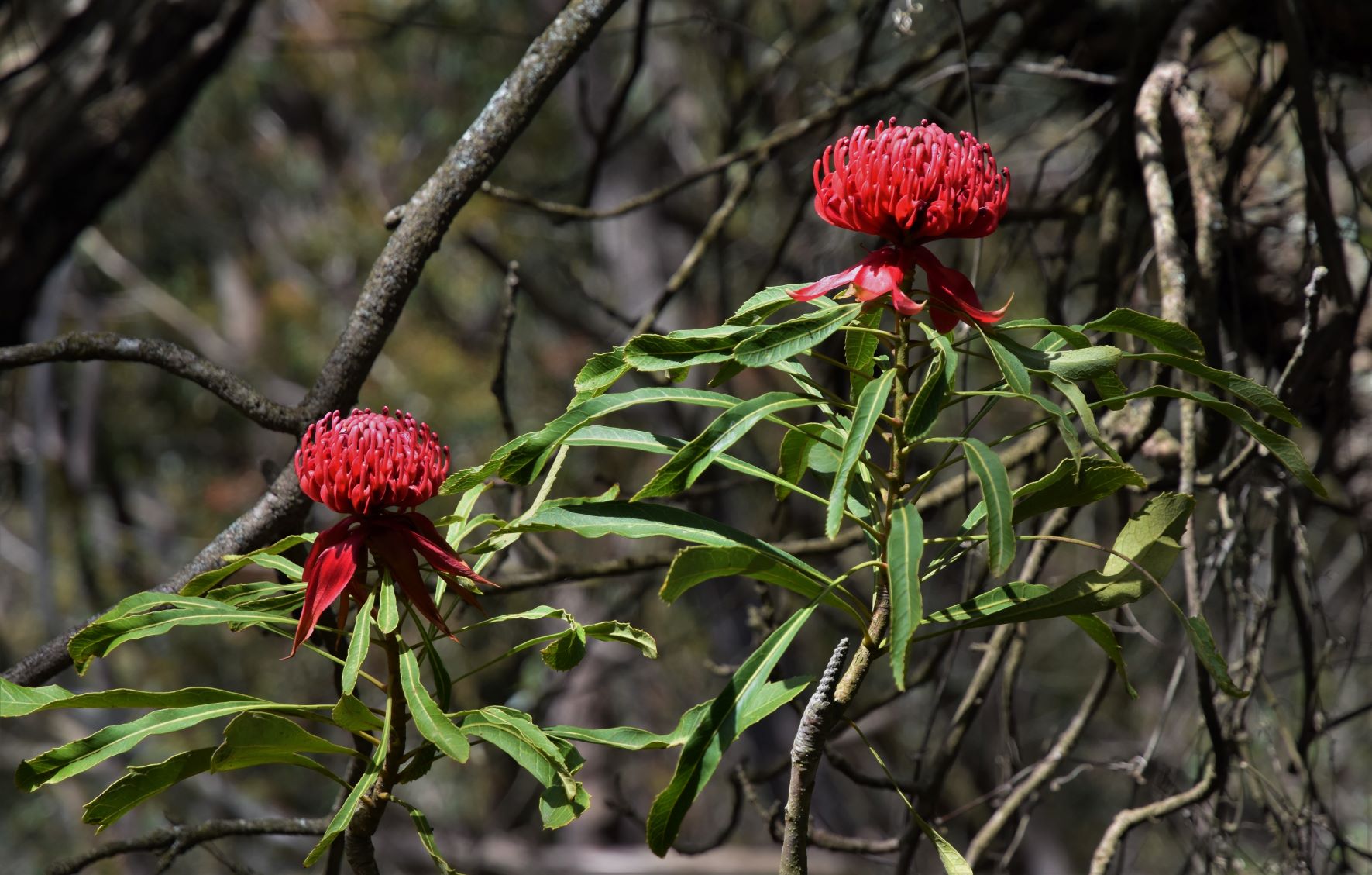 Telopea speciosissima (Waratah), flowers abundantly after a bushfire
Telopea speciosissima (Waratah), flowers abundantly after a bushfire
One of the most attention-grabbing plant families in the Sydney basin is the Proteaceae family. If plants were inclined towards family gatherings, the Proteaceae family would be suffering this Christmas. This group of plants has been around since the time of Gondwana, the great southern super-continent, which lasted from 550 million to about 180 million years ago. Before the movement of tectonic plates gradually broke it apart (call it family pressures), it included the land masses we now know as Africa, India, Australia, Arabia and South America. As a result of the break-up of Gondwana the Proteaceae family is now dispersed across all the Southern continents and even parts of the Northern continents. So, definitely no family get-togethers until Covid19 is under control!
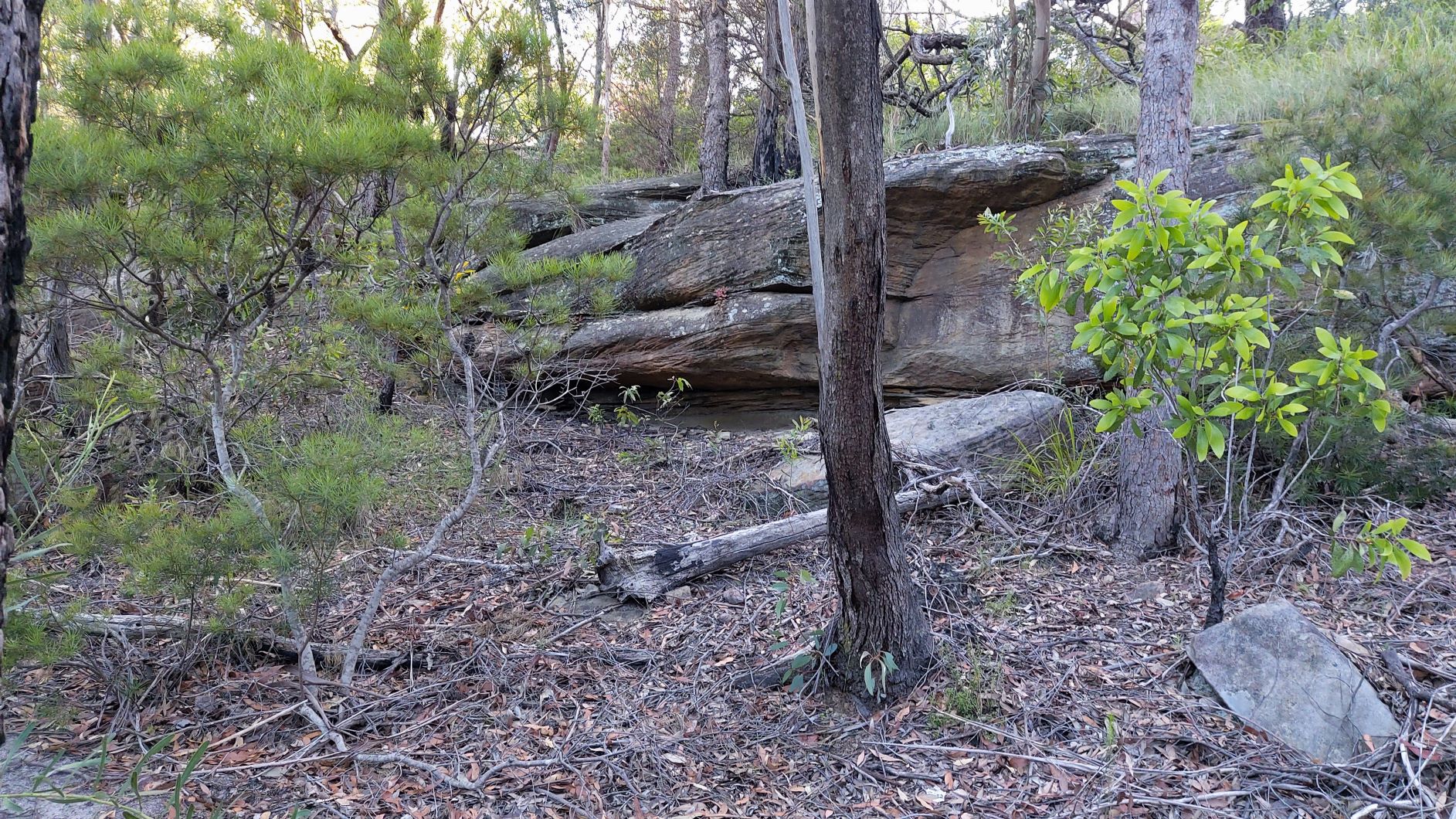
Socially distanced Banksia spinulosa (left) and Persoonia levis (right)
Possibly the best-known members of the Proteaceae family are the South African proteas, which people often mistakenly believe are Australian native plants. This could be because they are often included by florists in native plant arrangements (naughty!). Don’t be fooled – the Australian ones (some would say in particular the Western Australian species) are just as long-lasting and even more spectacular.
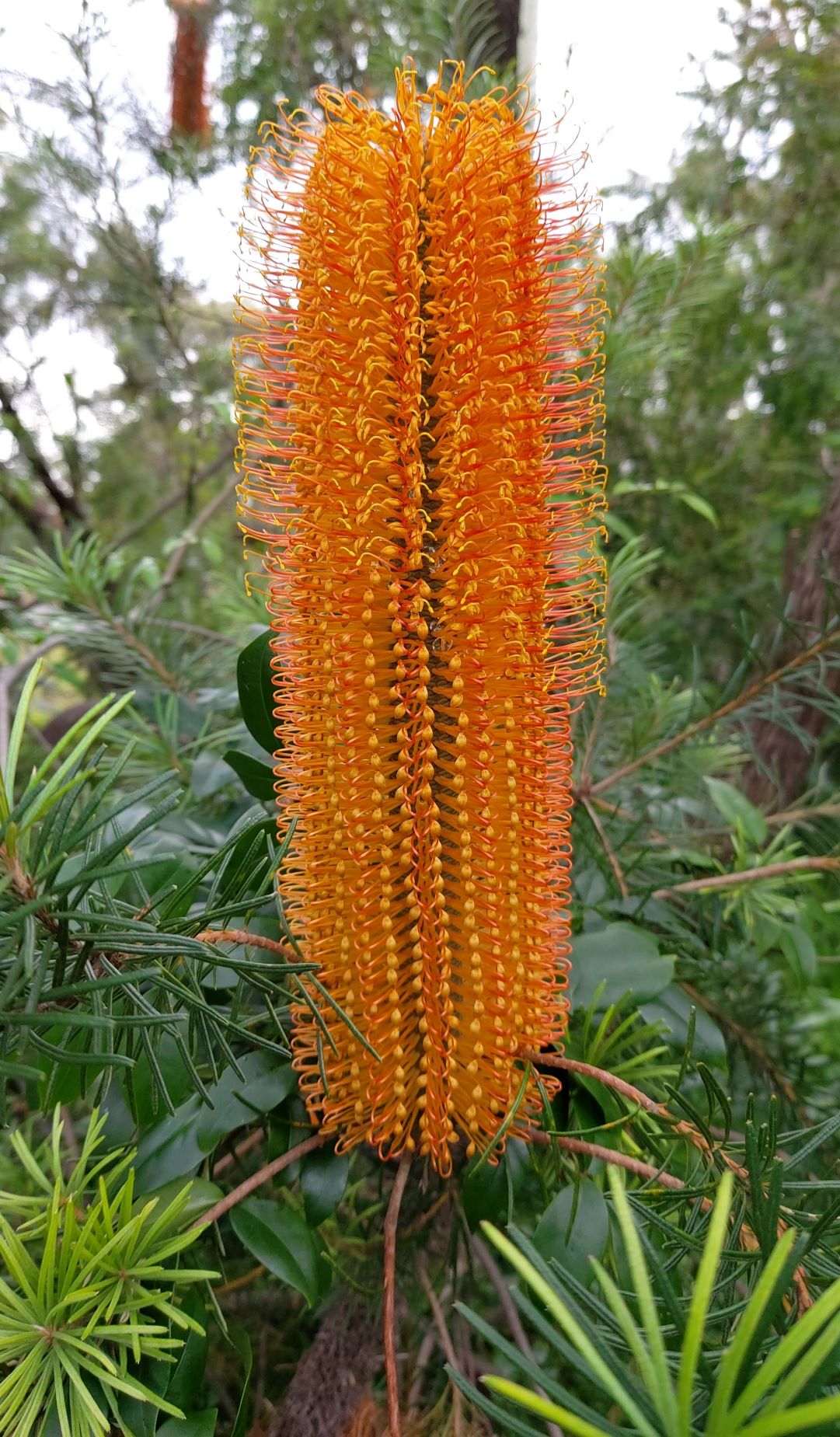 Banksia Giant Candles is a naturally occurring hybrid with spectacular inflorescences
Banksia Giant Candles is a naturally occurring hybrid with spectacular inflorescences
Relationships between plant species are determined by similarities in their flowers and fruiting bodies. Proteaceae flowers always occur in inflorescences. The flowers themselves are tiny, but the massed effect of an inflorescence is dazzling – especially to pollinators. In return, their nectar and fruits are a major food source for many native animals. The plants range from ground covers and quite small shrubs to substantial trees, with wide variations in bark and leaves. They are amongst the most eye-catching and easily identified plants of our sandstone flora.
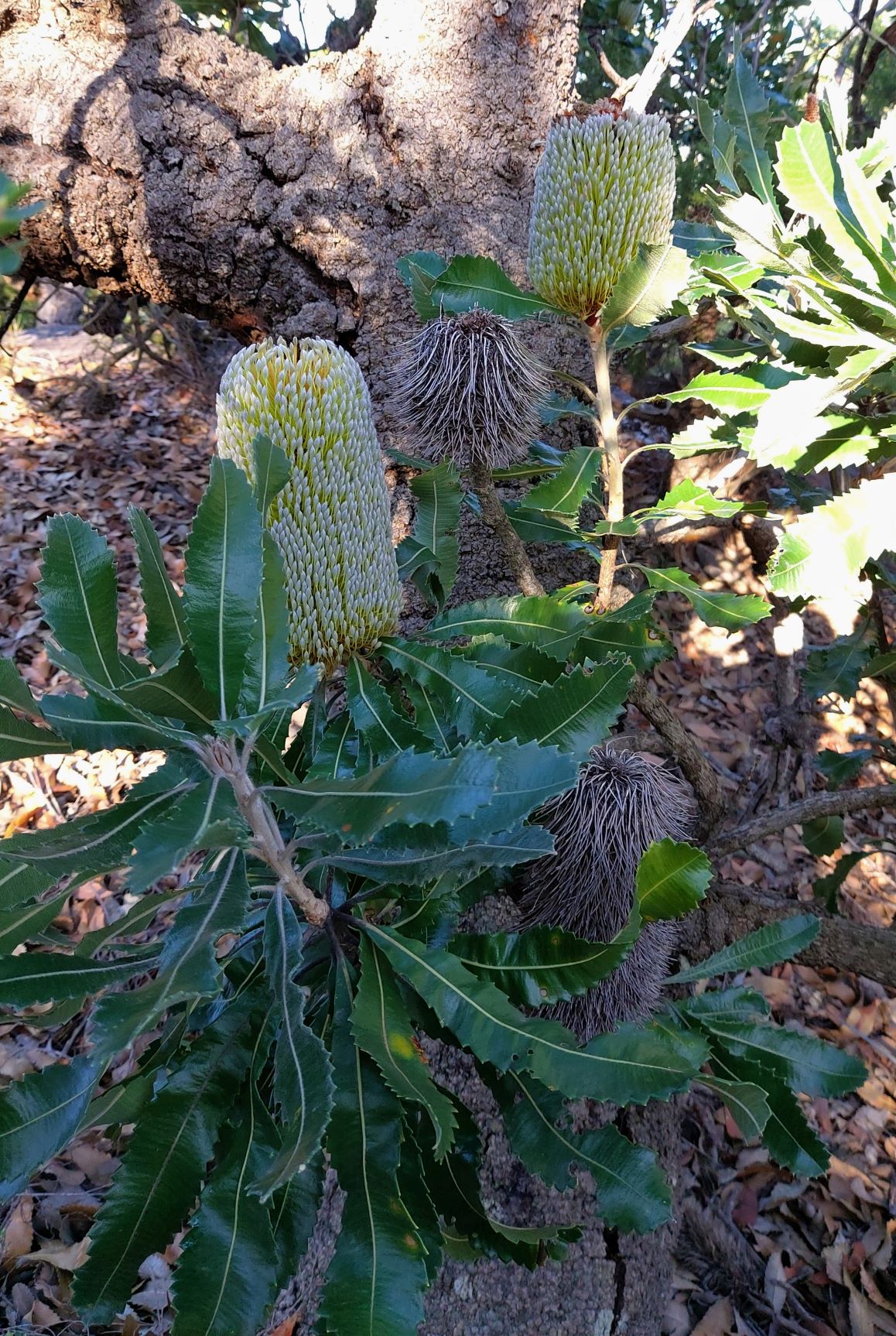
Banksia serrata, with distinctive corky bark, serrated leaves and yellow inflorescences
In Australia we have 40 different genera of Proteaceae plants. I’ve often wondered how persoonias fit into this family, as their fruits are so different to those of other family members. As always, Native Plants of the Sydney District (Fairley and Moore) has the answer – this is the go-to book for plant identification in the Sydney Basin and also includes great botanical information. The Proteaceae family has been around so long that it has greatly diversified. The Proteaceae in the Sydney region are divided into 3 sub-families (splitters!) – the Persoonioideae, the Proteoideae and the Grevilleoideae. Though the sub-families have plenty in common, there is enough of a difference between them to make a distinction.
The Persoonioideae includes only the persoonia genus (geebungs), whose fruit is a fleshy drupe. So they are, indeed, different – the black sheep of the family.
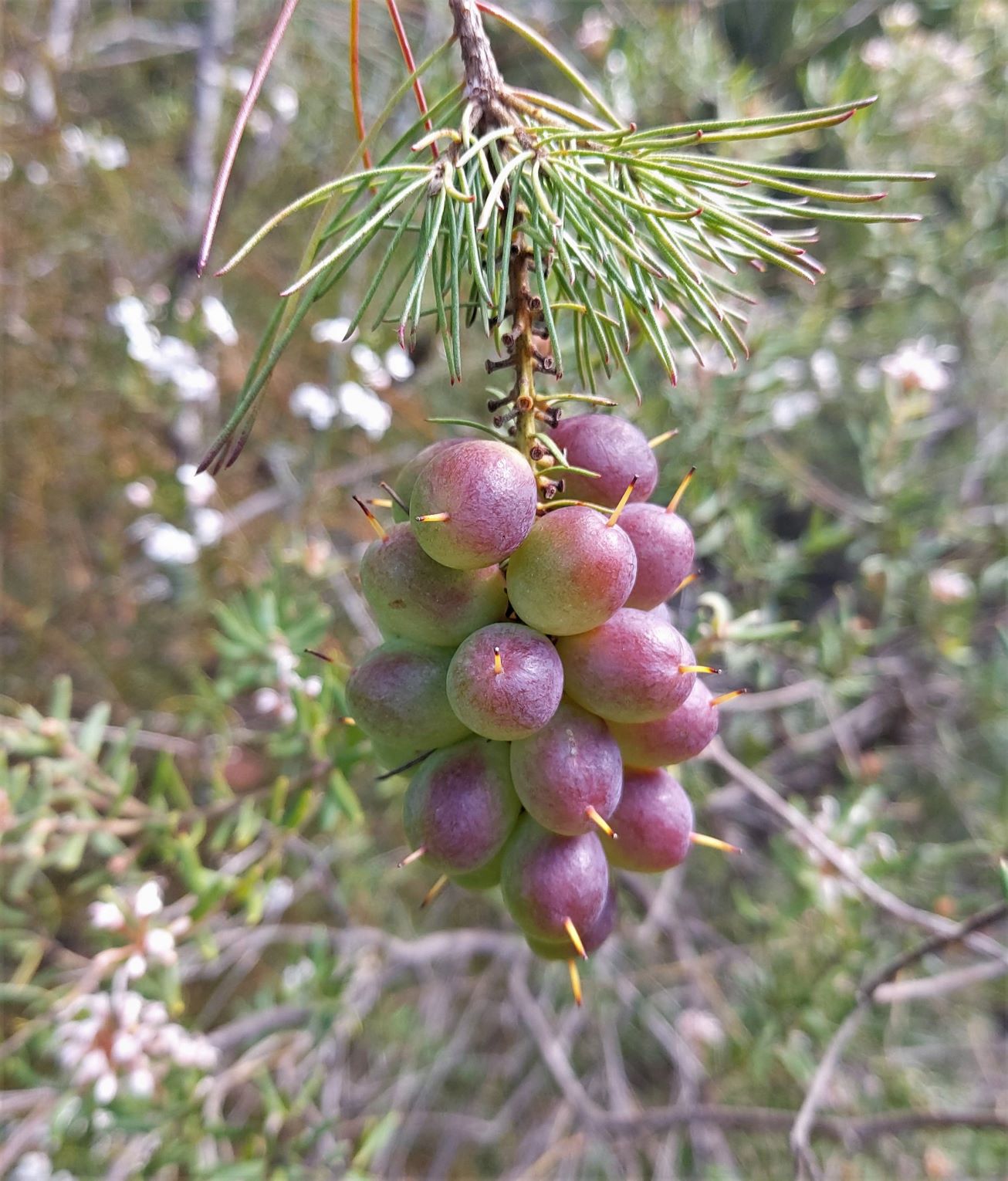 Persoonia pinifolia (Pine-leaved Geebung) fruits
Persoonia pinifolia (Pine-leaved Geebung) fruits
The Proteoideae, whose fruit is a nut enclosing small wingless seeds, includes isopogons, petrophiles, conospermum and symphionema.

Reddish new growth of Isopogon anemonifolia (Drumstick)
The Grevilleoideae is the most diverse sub-family and includes the most spectacular genera – the telopea (waratahs), the banksias, the hakeas, the grevilleas, the lambertias (mountain devils) Xylomelum (woody pears), lomatias, stenocarpus and helicias. This sub-family has paired flowers in the inflorescence, with a fruit which is a follicle (often woody), which will split, often after fire, to release winged seeds. The winged seed ensures dispersal of the offspring and avoids competition with the parent plant.
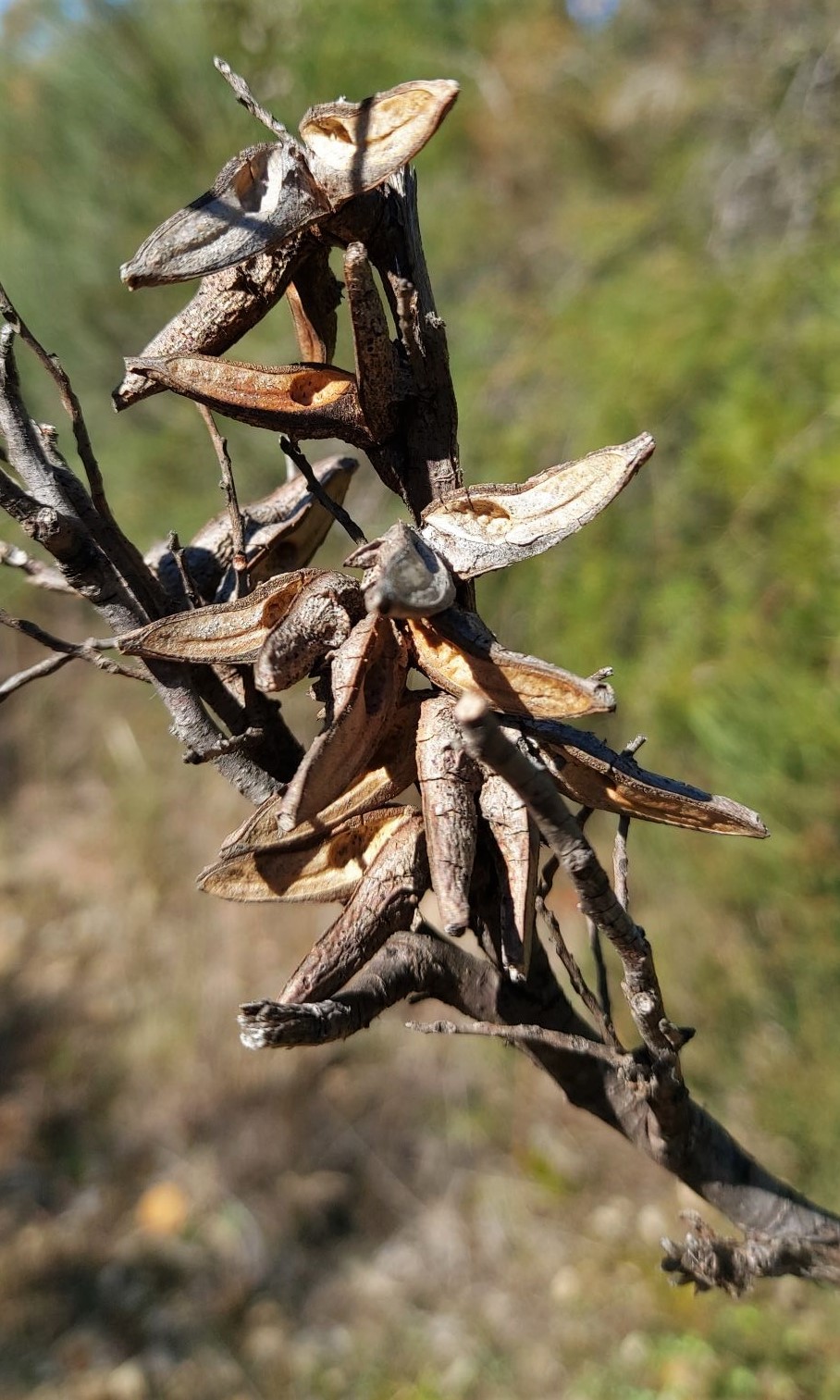 Opened Hakea tereticornis fruits show indent of seed and wing
Opened Hakea tereticornis fruits show indent of seed and wing
Persoonias are easily spotted in the bush and sometimes mistaken as exotics due to their bright green foliage.

Persoonia levis (Broad-leaved geebung) stands out in the bush
They have entire leaves and yellow, cylindrical flowers with 4 segments.
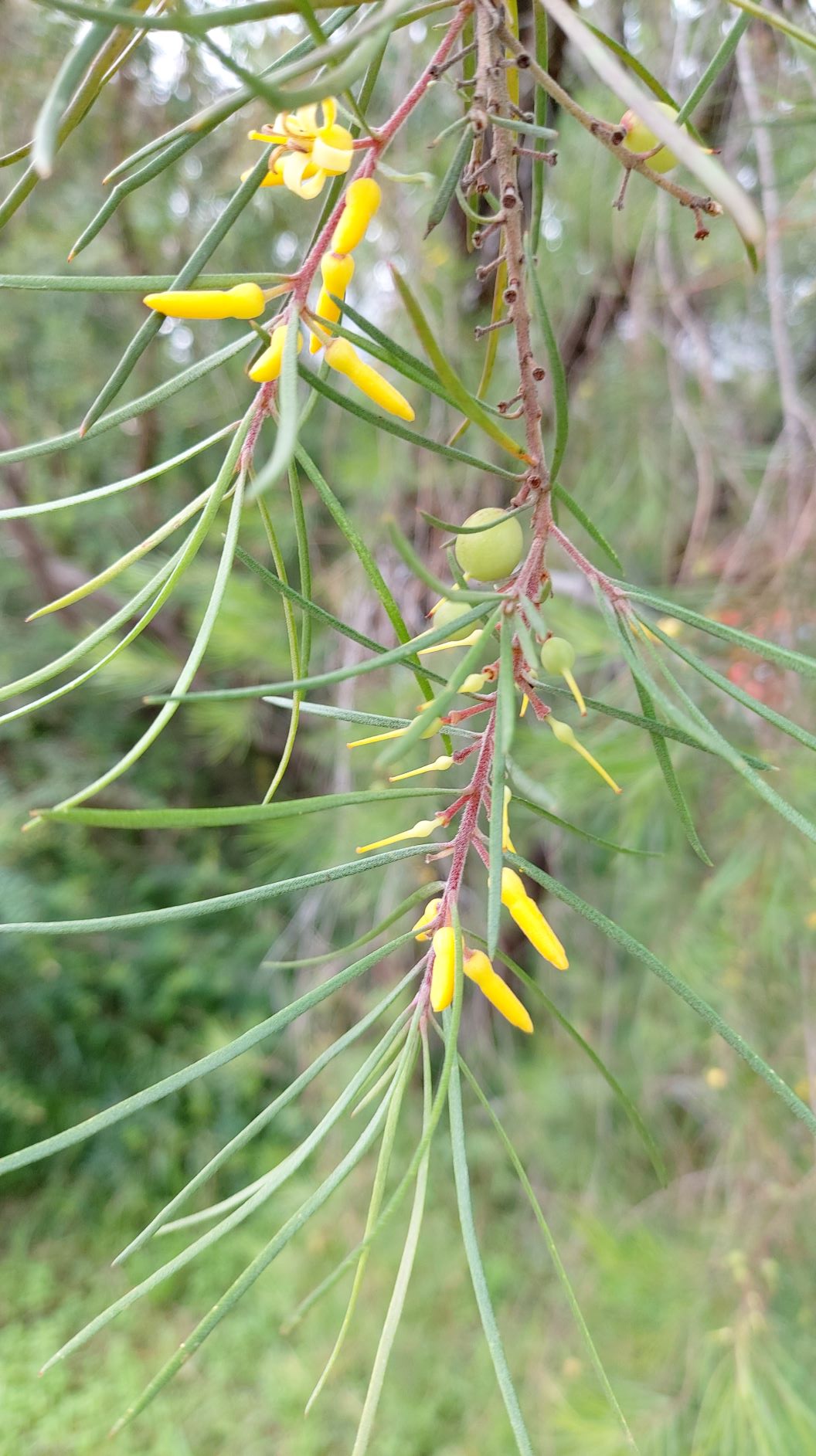 Persoonia linearis (Narrow-leaved geebung) shows entire leaves and cylindrical flowers
Persoonia linearis (Narrow-leaved geebung) shows entire leaves and cylindrical flowers
Isopogons (drumsticks) have mostly yellow flowers and around here, mostly divided leaves. Check out the Fibonacci arrangement of the flowers in the inflorescence. The mature flowers (at the back) are already open as the central ones are in bud.
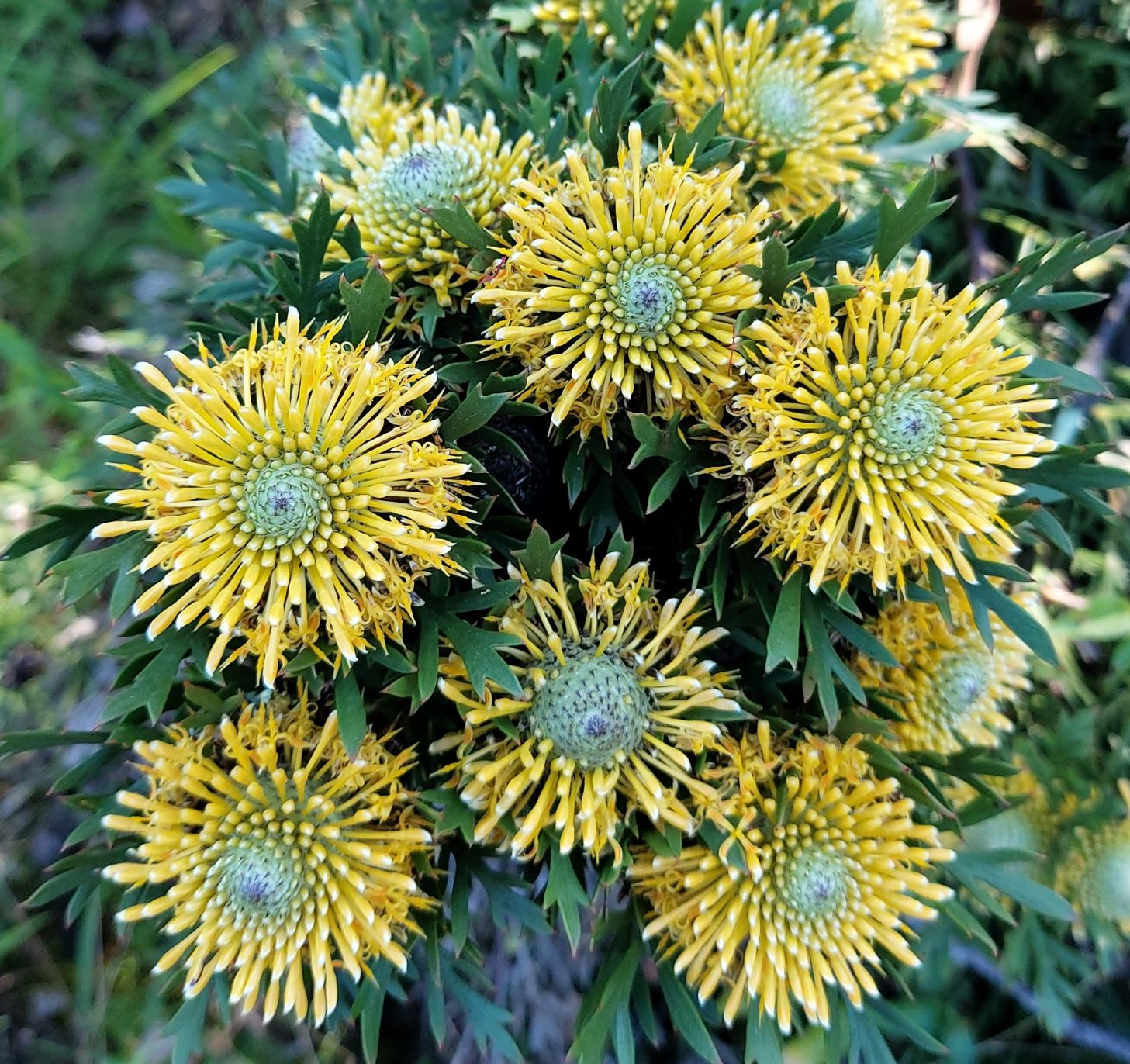 Isopogon anemonifolius (Drumsticks) flowers
Isopogon anemonifolius (Drumsticks) flowers
Petrophiles (conesticks) have creamy-yellow flowers and divided/reduced leaves – a typical Proteaceae adaptation to deal with lack of water.
 Petrophile pulchella (Conestick) cones and reduced leaves
Petrophile pulchella (Conestick) cones and reduced leaves
Conospermum (smokebush) are shrubs with mostly white flowers in terminal clusters. Here reduced leaves are another adaptation to our dry climate and well-drained sandstone soils.
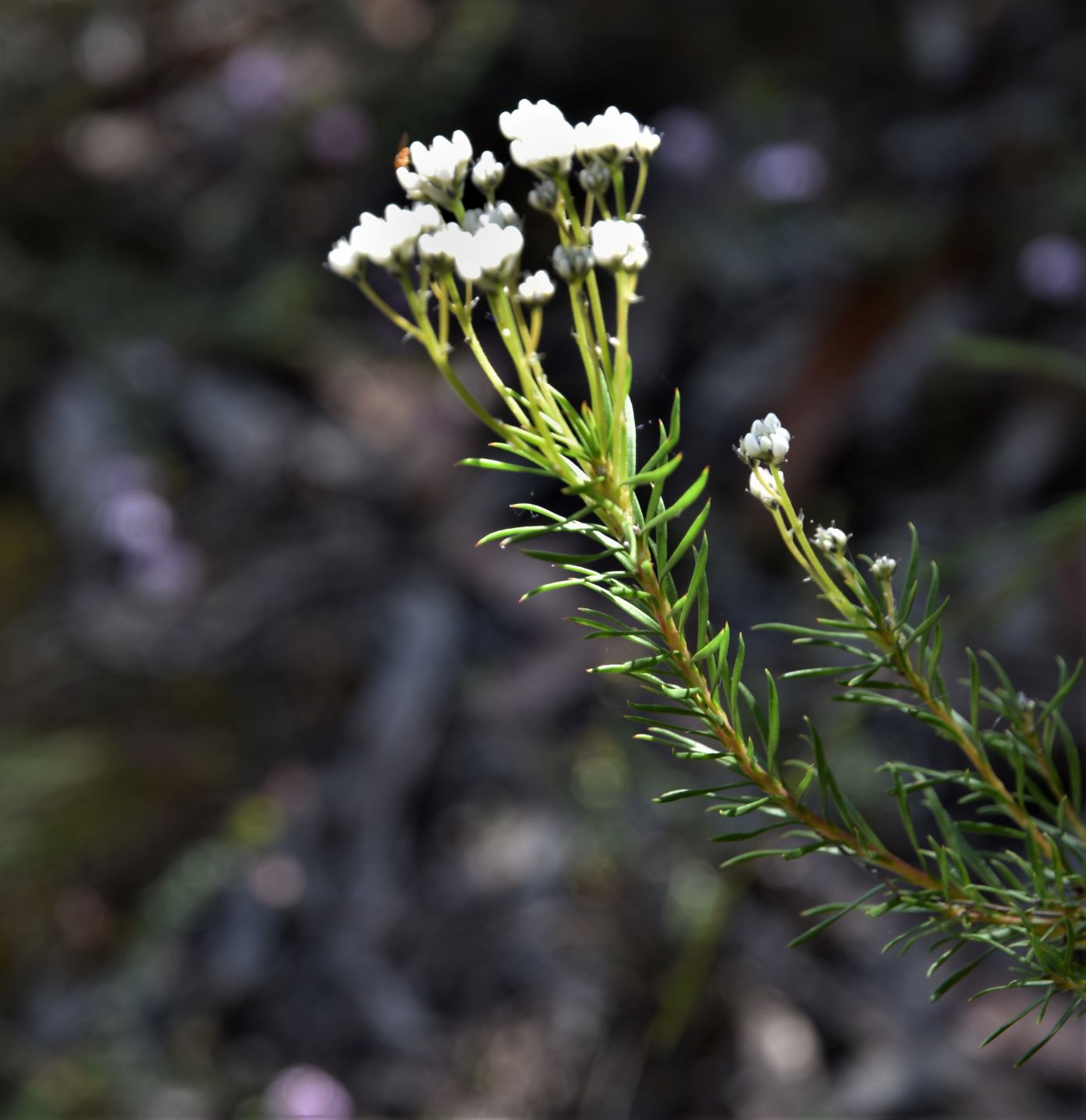 Conospermum taxifolium (Coneseeds)
Conospermum taxifolium (Coneseeds)
Symphionema are small shrubs with divided leaves and flowers arranged in narrow spikes. Though softer and smaller, with a different floral arrangement and fruit, they could easily be mistaken for Lomatia silaifolia.
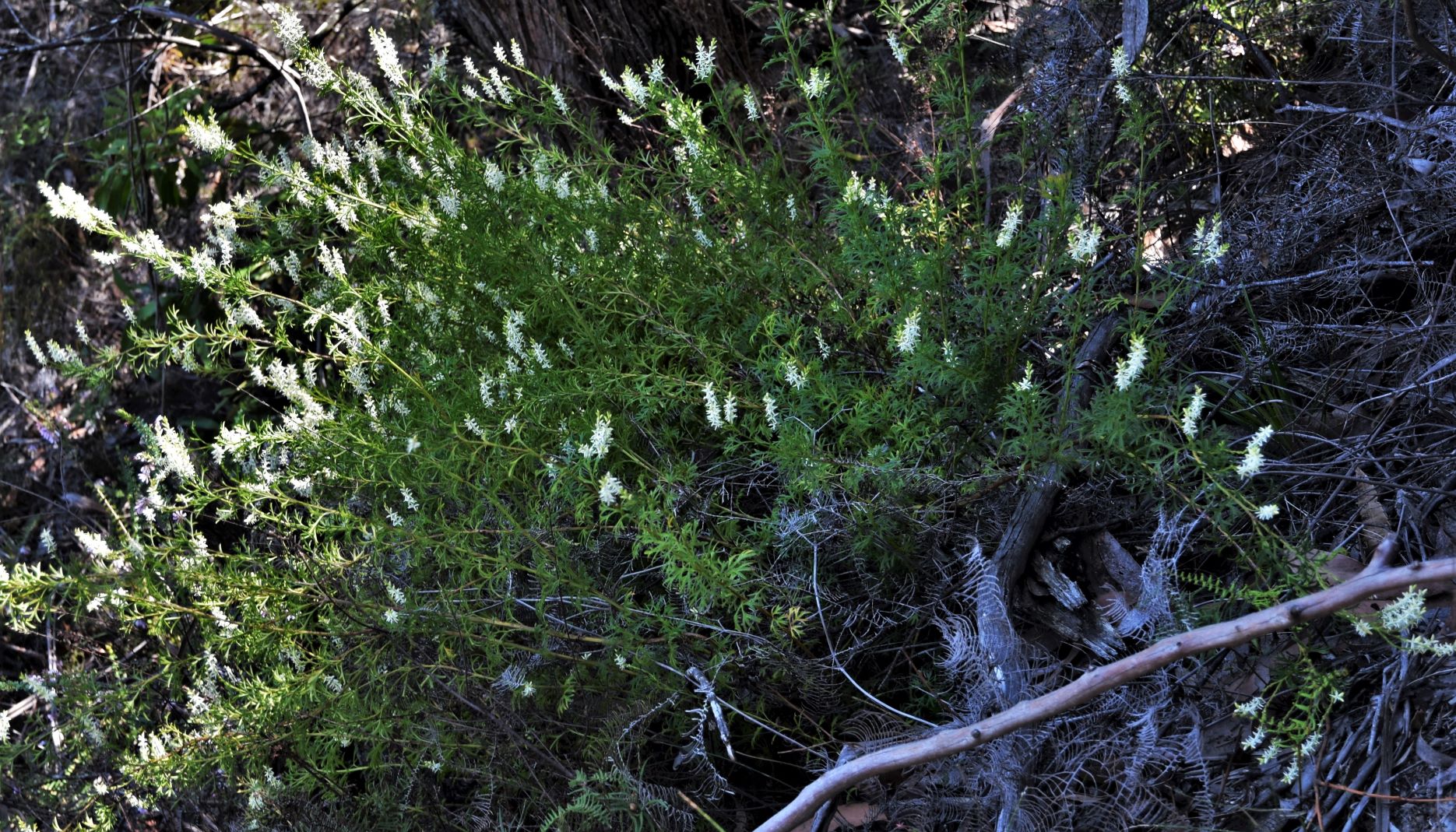 Symphionema montanum (Mountain symphionema) prefers damp soils
Symphionema montanum (Mountain symphionema) prefers damp soils
Our first of the Grevilleoideae sub-family, the woody pear (Xylomelum pyriform), has only one local representative, which has creamy, terminal flower spikes covered in rusty hairs; distinctively veined leaves and equally distinctive pear-shaped woody fruits. The juvenile leaves are reddish and often deeply serrated – though not in this example.
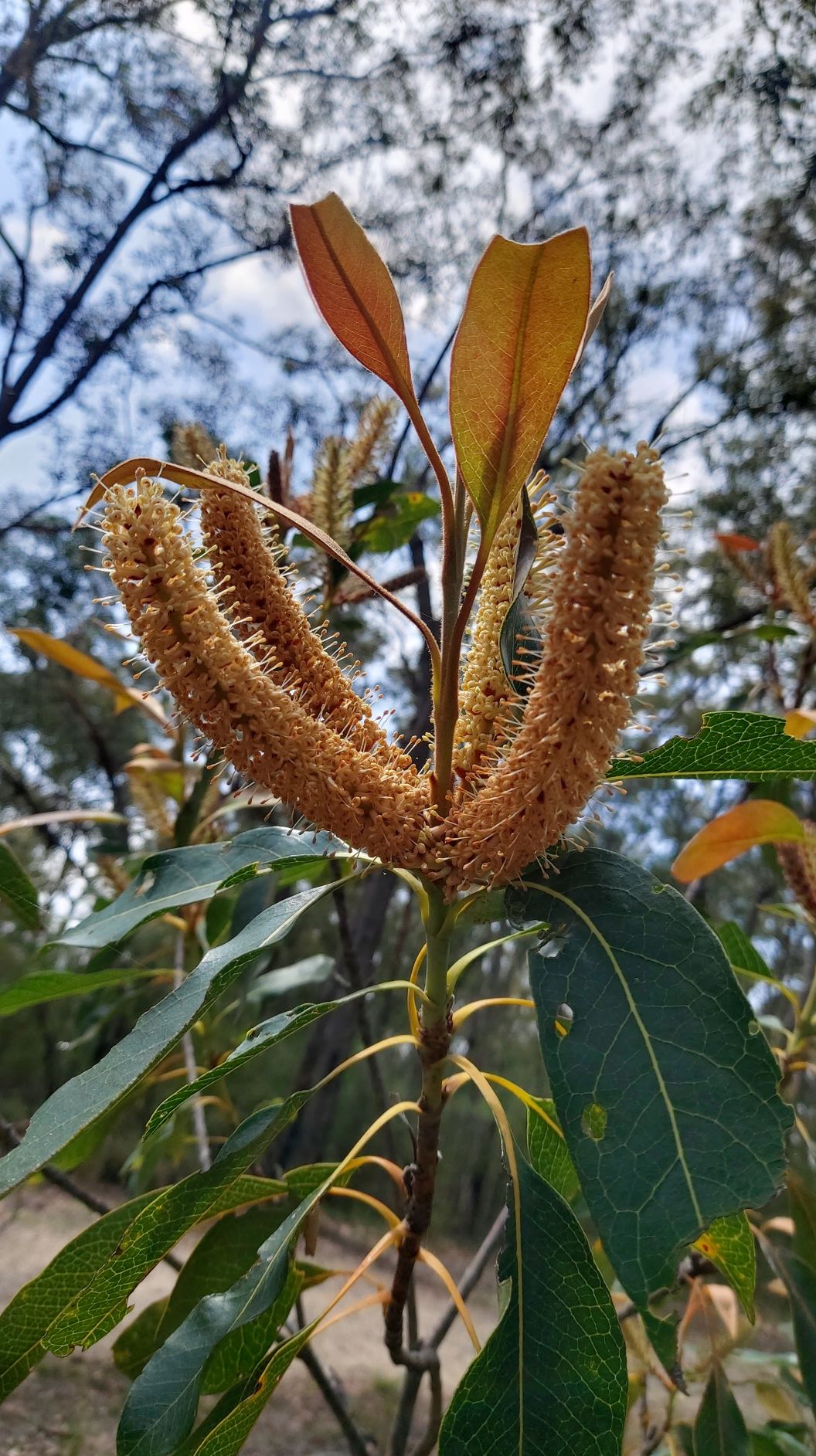 Xylomelum pyriforme (Woody pear) has creamy flower heads with rusty hairs
Xylomelum pyriforme (Woody pear) has creamy flower heads with rusty hairs
One of the most diverse Proteaceae genera in this area are the banksias. Various species flower throughout the year, providing an ongoing source of nectar for honey-eating birds and mammals.
 Banksia spinulosa (Hairpin banksia) flowers throughout autumn and winter
Banksia spinulosa (Hairpin banksia) flowers throughout autumn and winter
Their characterful inflorescences, with remnant woody follicles, provided the inspiration for May Gibbs’ Big Bad Banksia Men in her famous children’s stories.
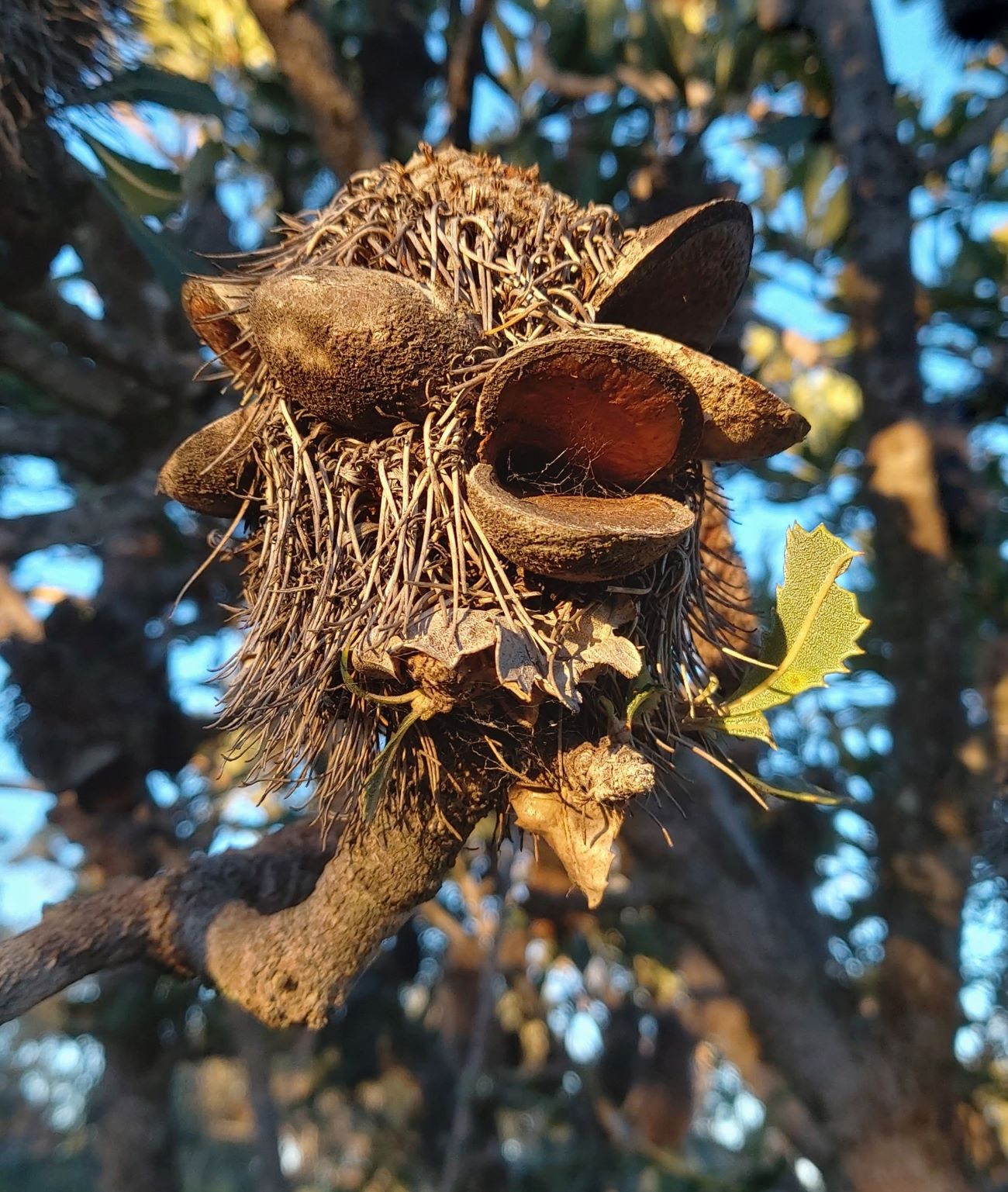 Banksia serrata (Old Man Banksia) is a characterful tree
Banksia serrata (Old Man Banksia) is a characterful tree
Like banksias, hakeas may take the form of either shrubs or trees. The flowers of hakeas, unusually for Proteaceae, grow in the leaf axils, on short stalks. Hakeas mostly have needle-like leaves, yet another adaptation to water shortage, as are the woody fruits, but in this region there are two species with flat leaves.
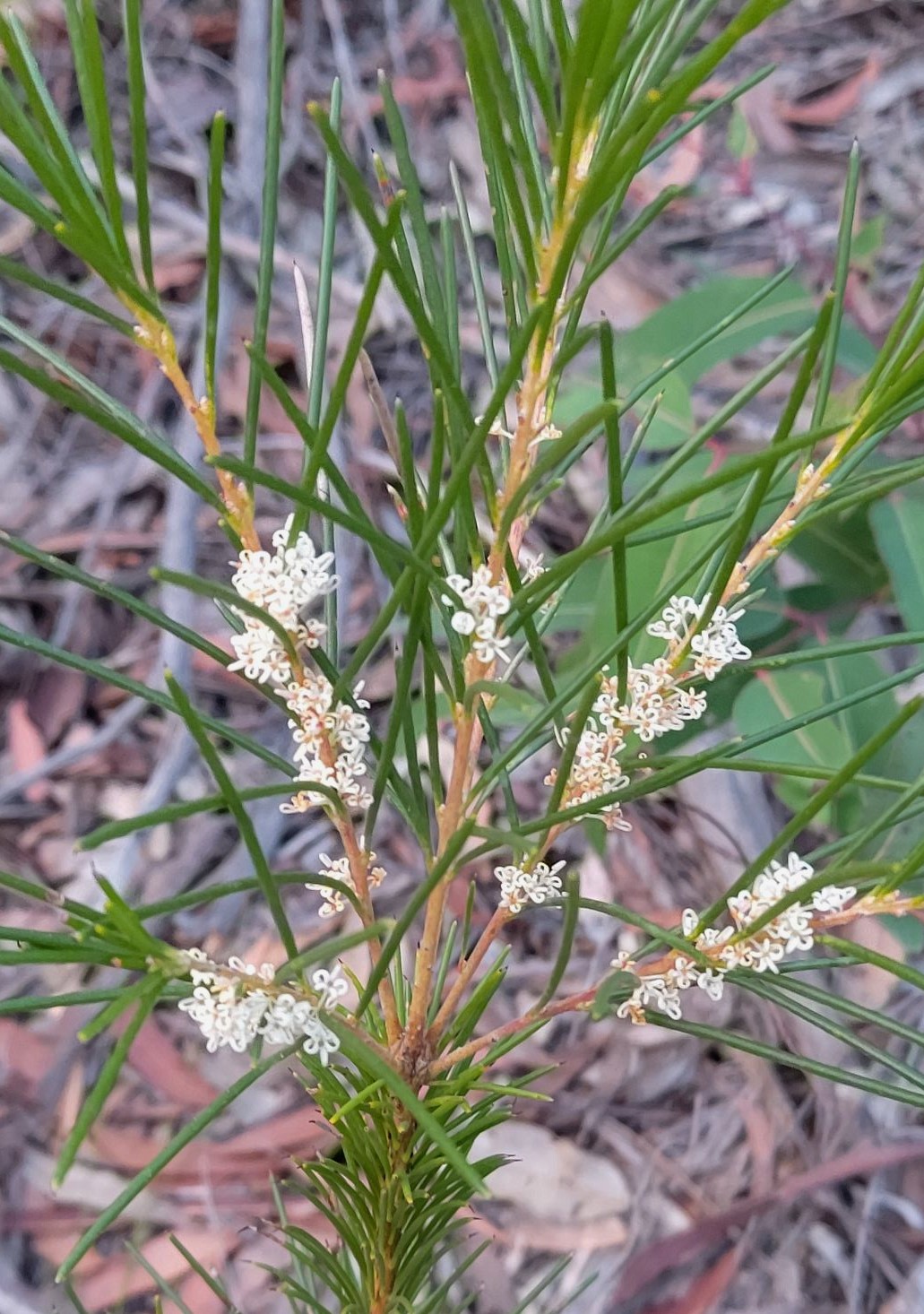 Hakea sericea (Needlebush) flowers are clustered in the leaf axles
Hakea sericea (Needlebush) flowers are clustered in the leaf axles
Mountain devils (Lambertia formosa) also have distinctive fruits, resembling a horned and beaked “devil”.
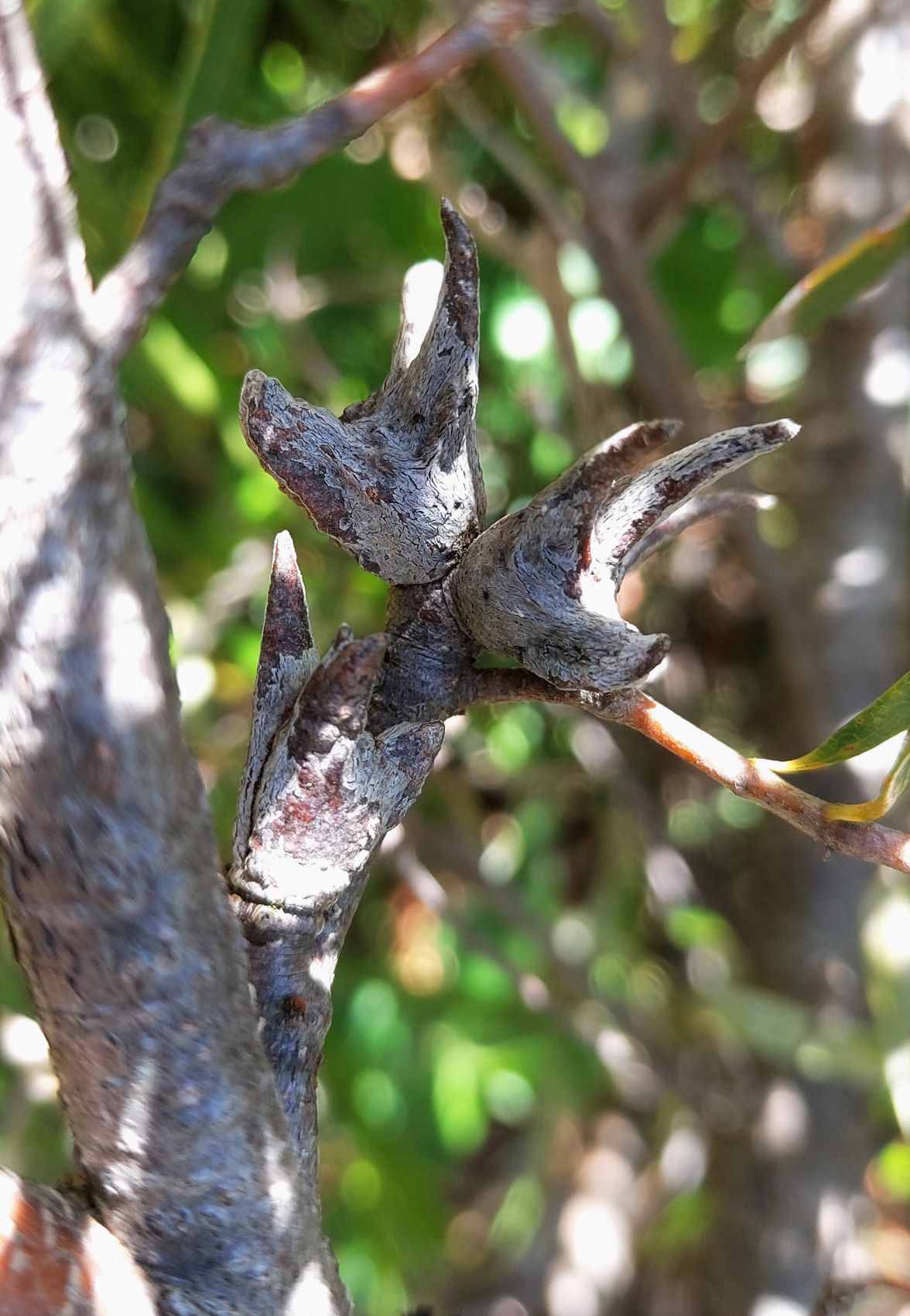
Woody Lambertia formosa fruits, showing horns and beak
Their red flowers grow in terminal clusters, usually of seven flowers, but occasionally nine, eleven or even thirteen occur – Fibonacci again.
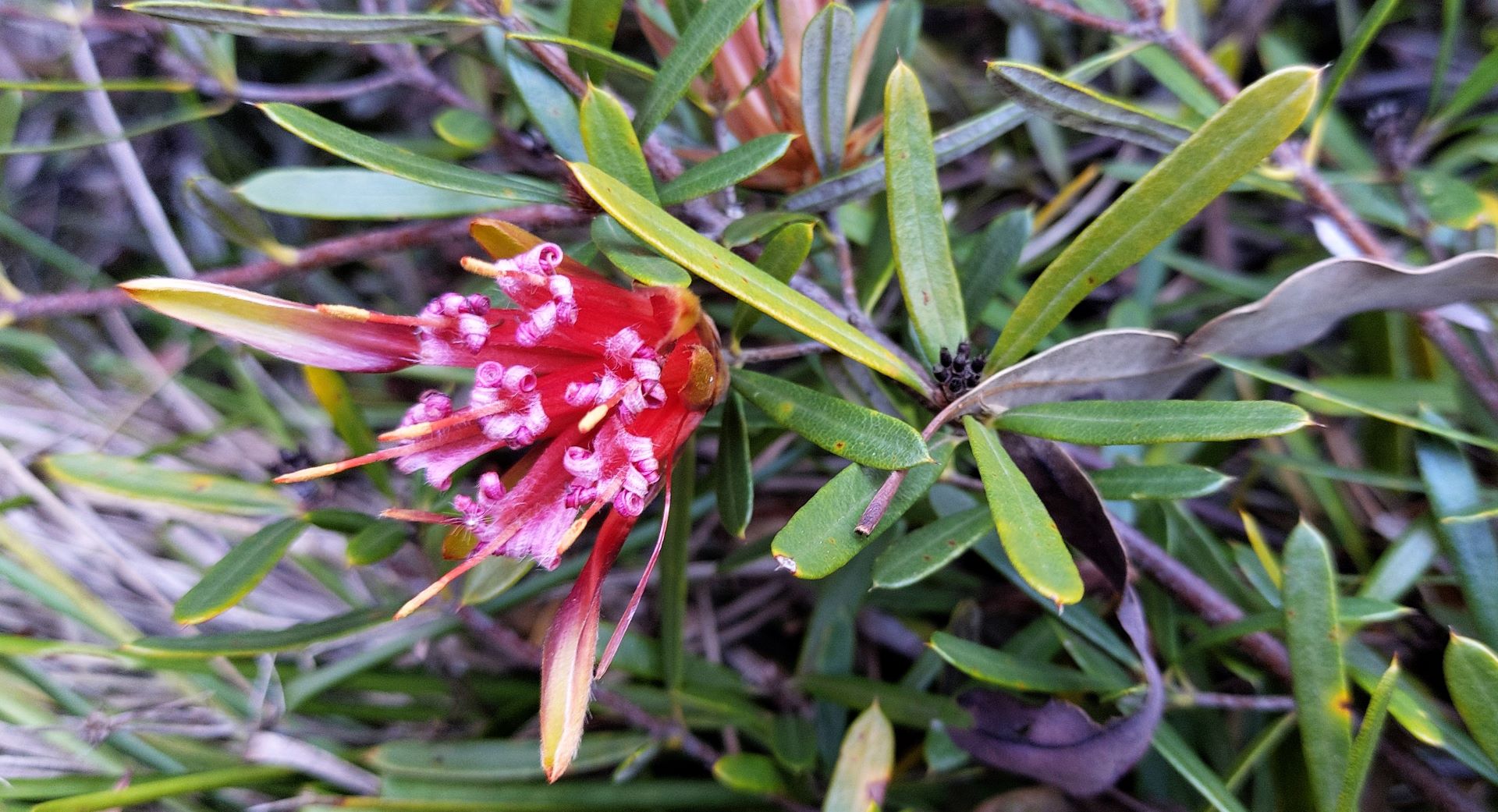 Lambertia formosa (Mountain devil) has pungent-pointed leaves
Lambertia formosa (Mountain devil) has pungent-pointed leaves
Grevilleas are another very diverse genus, with around 25 species or sub-species occurring in Sydney and the Blue Mountains. They come in two main forms – toothbrush flowers, where the racemes resemble the structure of toothbrush…
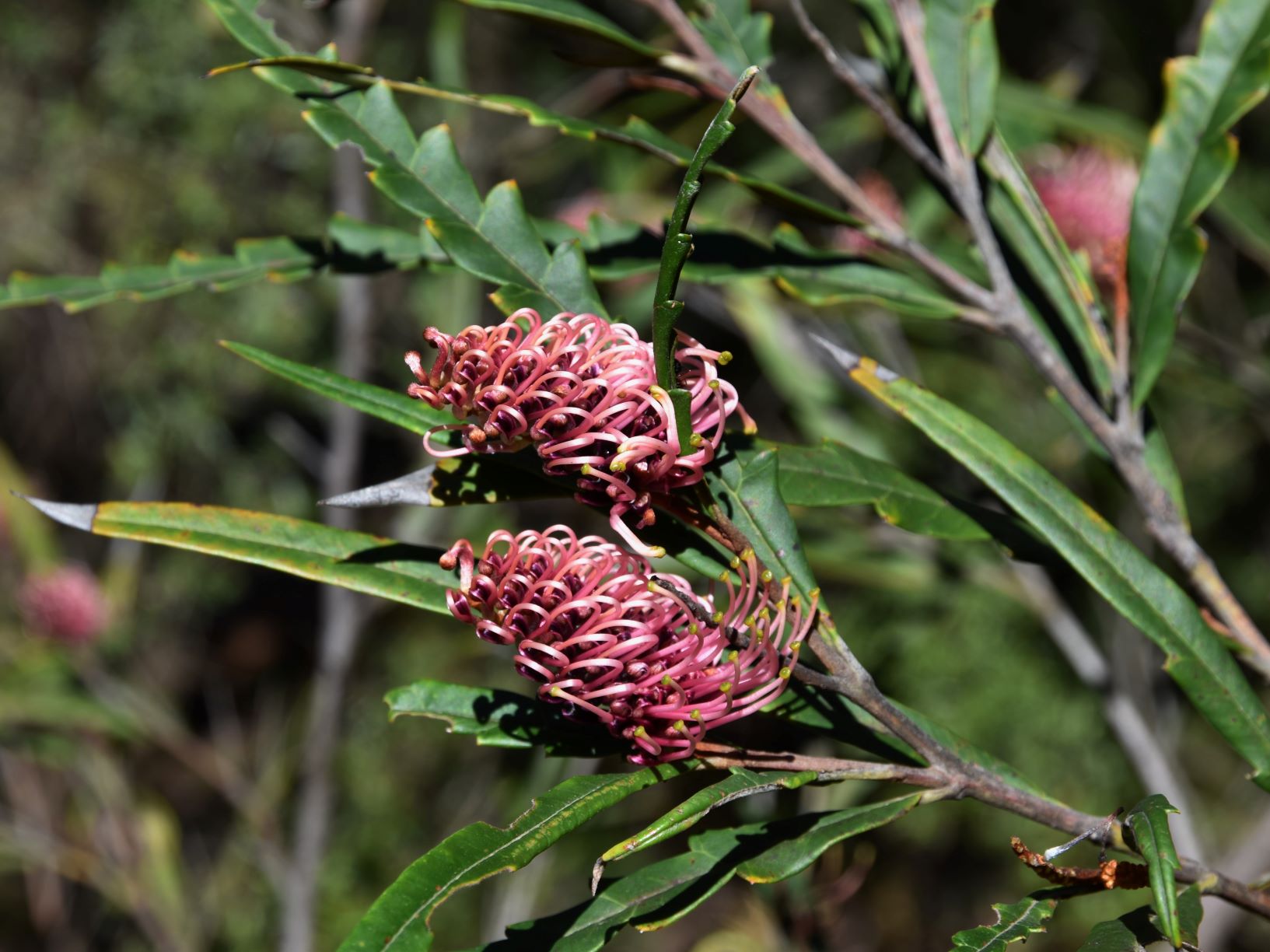
Grevillea longifolia has red toothbrush -like inflorescences and serrated leaves
… and spider-flowers, where the flowers appear to spread from a central point.
 Grevillea sericea (Pink Spider-flower) is a common bushland shrub
Grevillea sericea (Pink Spider-flower) is a common bushland shrub
Forms range from ground-covers to large shrubs.
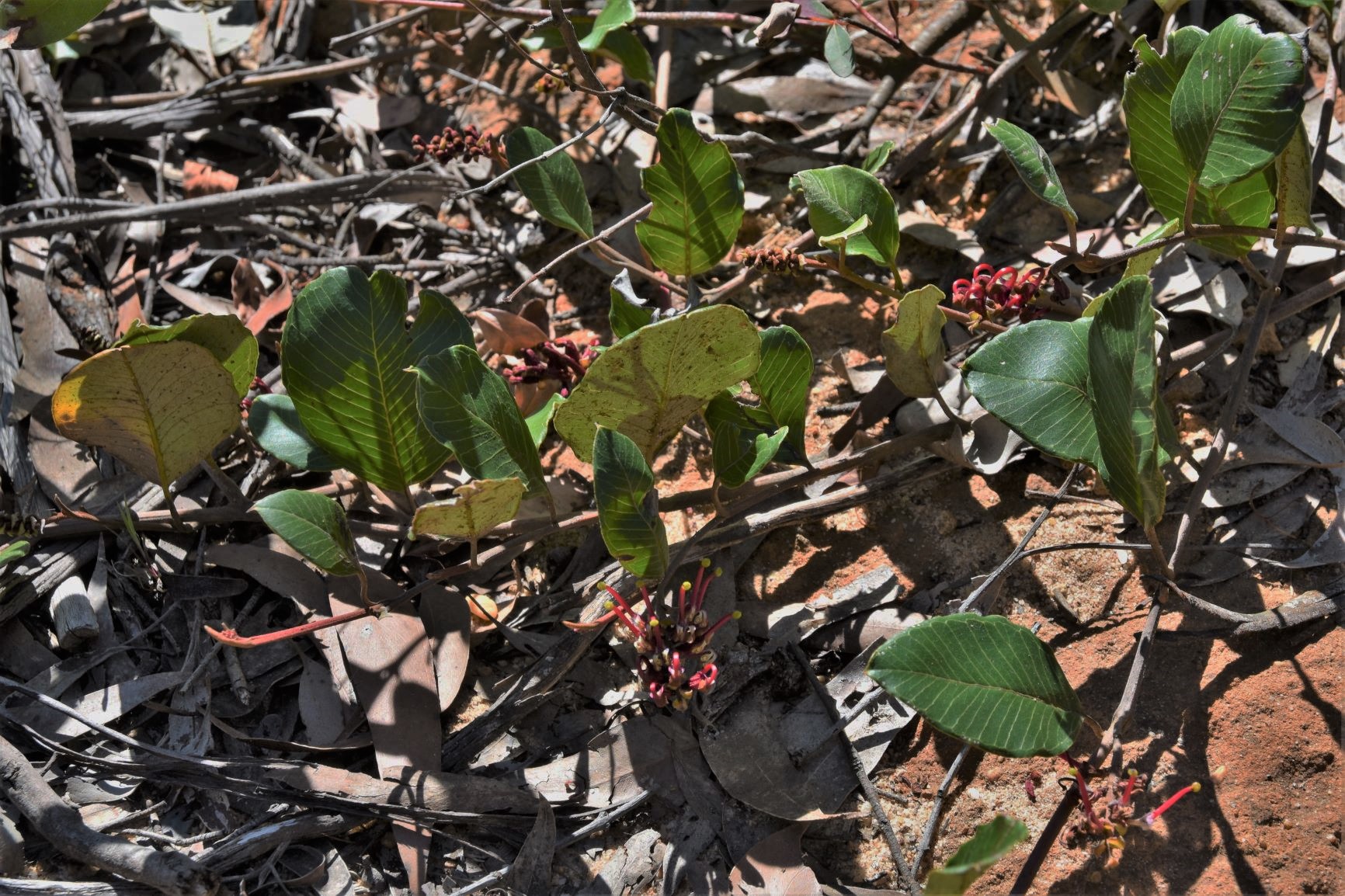 Grevillea laurifolia is distinctive, with its ovate leaves and trailing habit
Grevillea laurifolia is distinctive, with its ovate leaves and trailing habit
Lomatias are small to large shrubs. They have whitish-yellow flowers, which resemble grevillea flowers, as does the foliage.
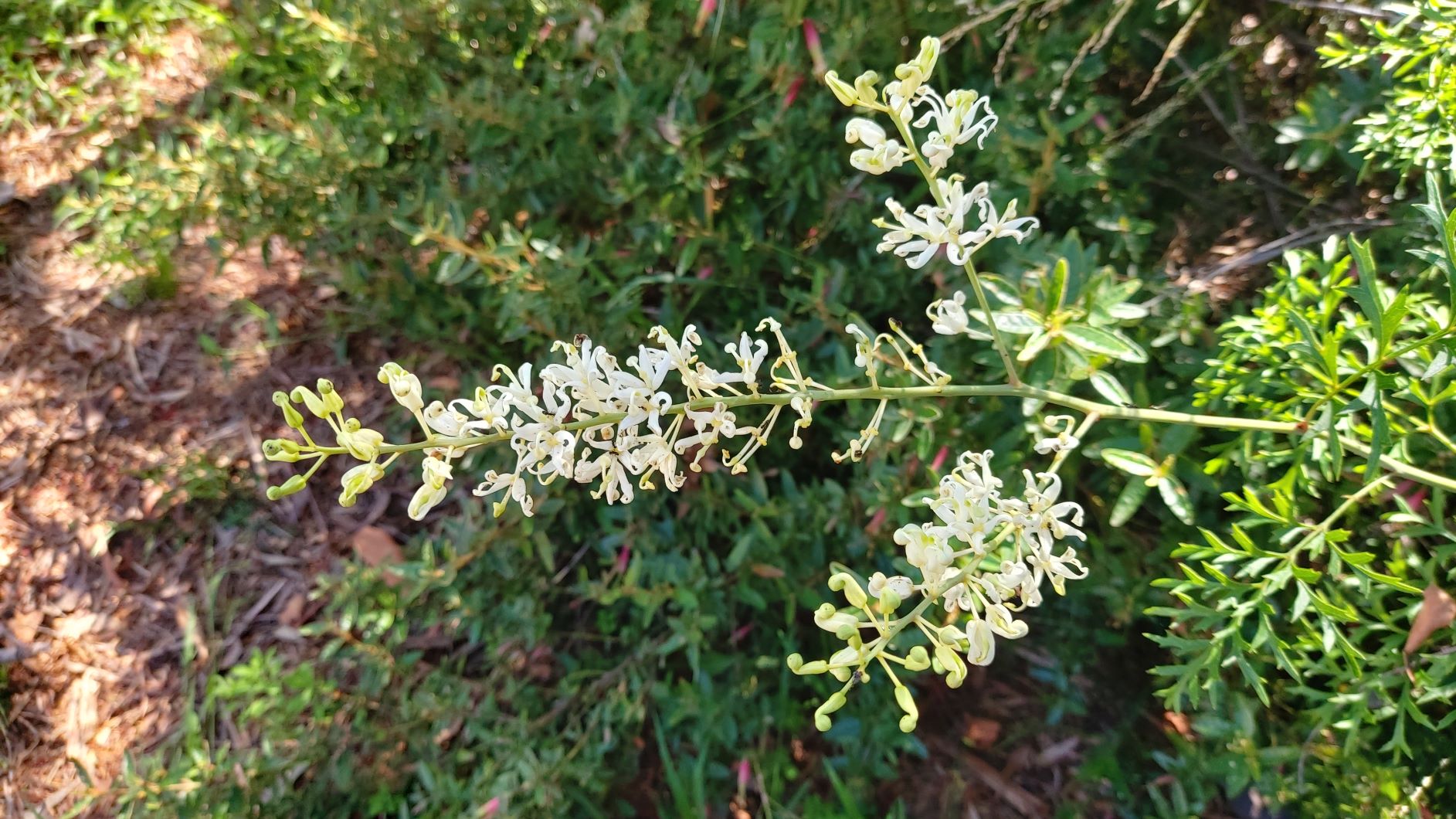 Lomatia silaifolia (Crinkle Bush) is often mistaken for a Grevillea
Lomatia silaifolia (Crinkle Bush) is often mistaken for a Grevillea
The spring-flowering waratah (Telopea speciosissima) is New South Wales’ floral emblem. It is well-named, as the name means “beautiful flower, seen from afar”.
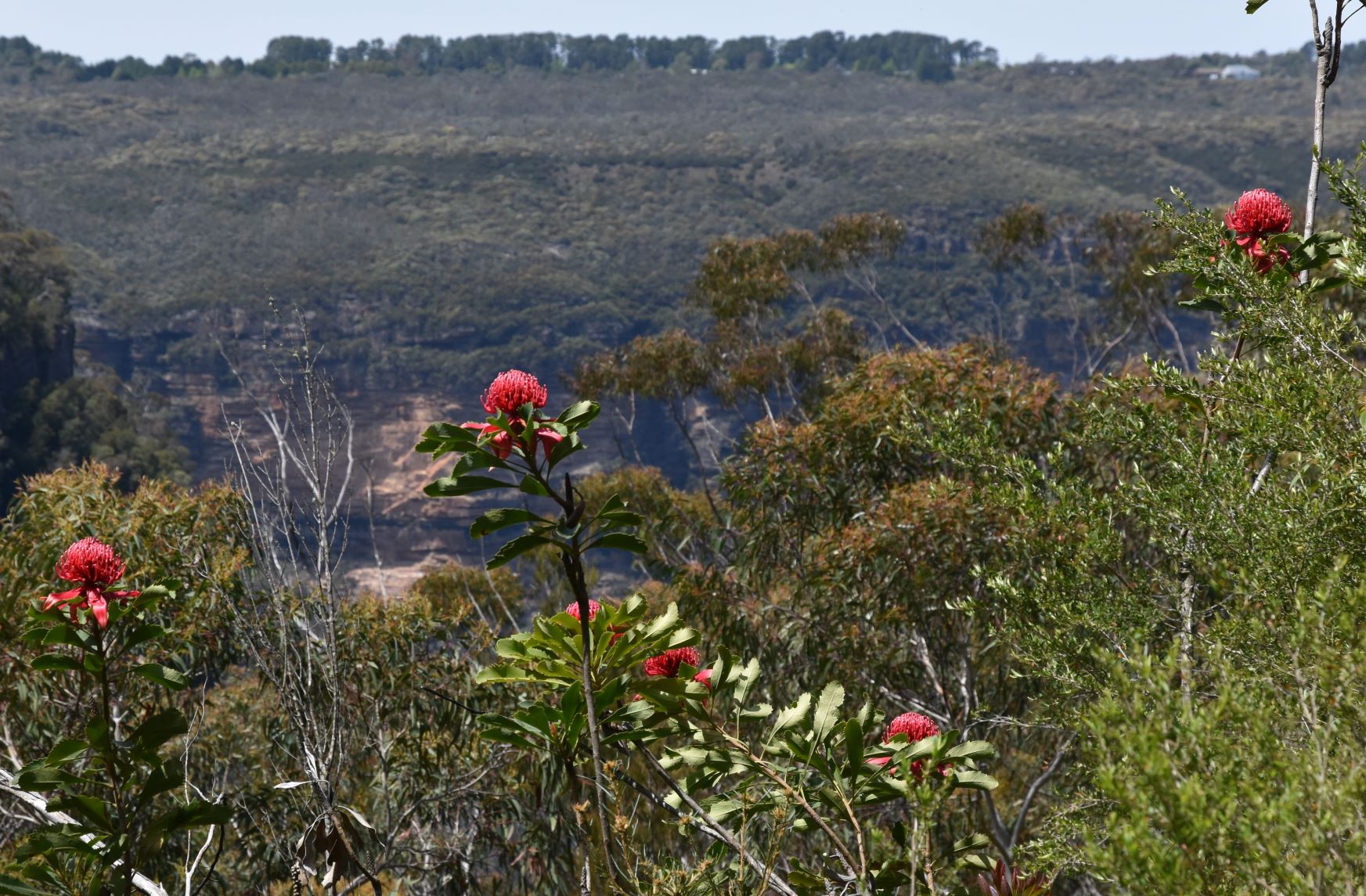 Telopea speciosissima (Waratah) is, indeed, seen from afar
Telopea speciosissima (Waratah) is, indeed, seen from afar
It has dense, terminal, bright red inflorescences, with red bracts. The fruits resemble pea pods, but are woody, and often remain on the plant over long periods.
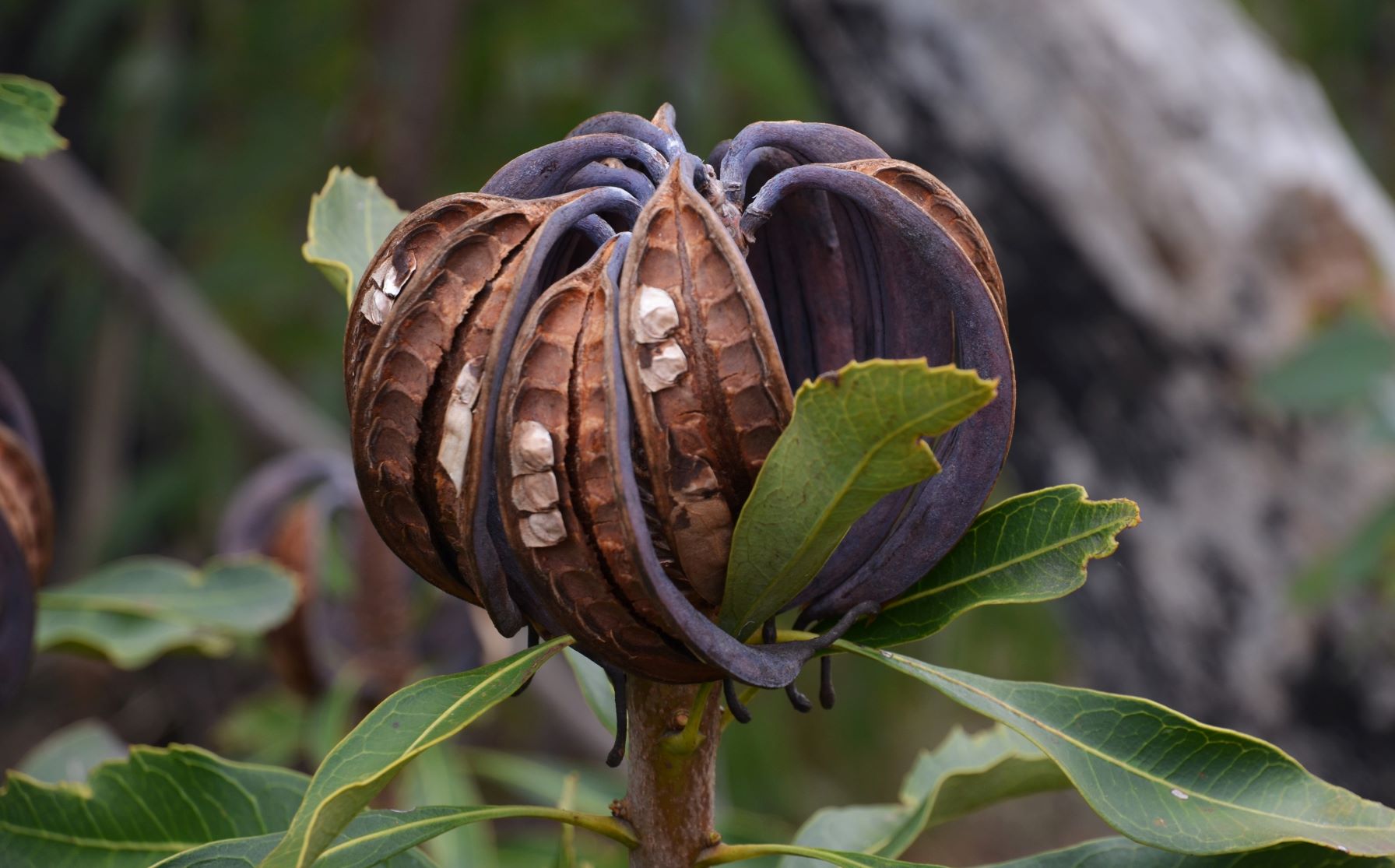 Telopea speciosissima seed pods
Telopea speciosissima seed pods
The Proteacea family, with its long and distinguished pedigree, is one of the gems in the crown of the Sydney bushland flora.
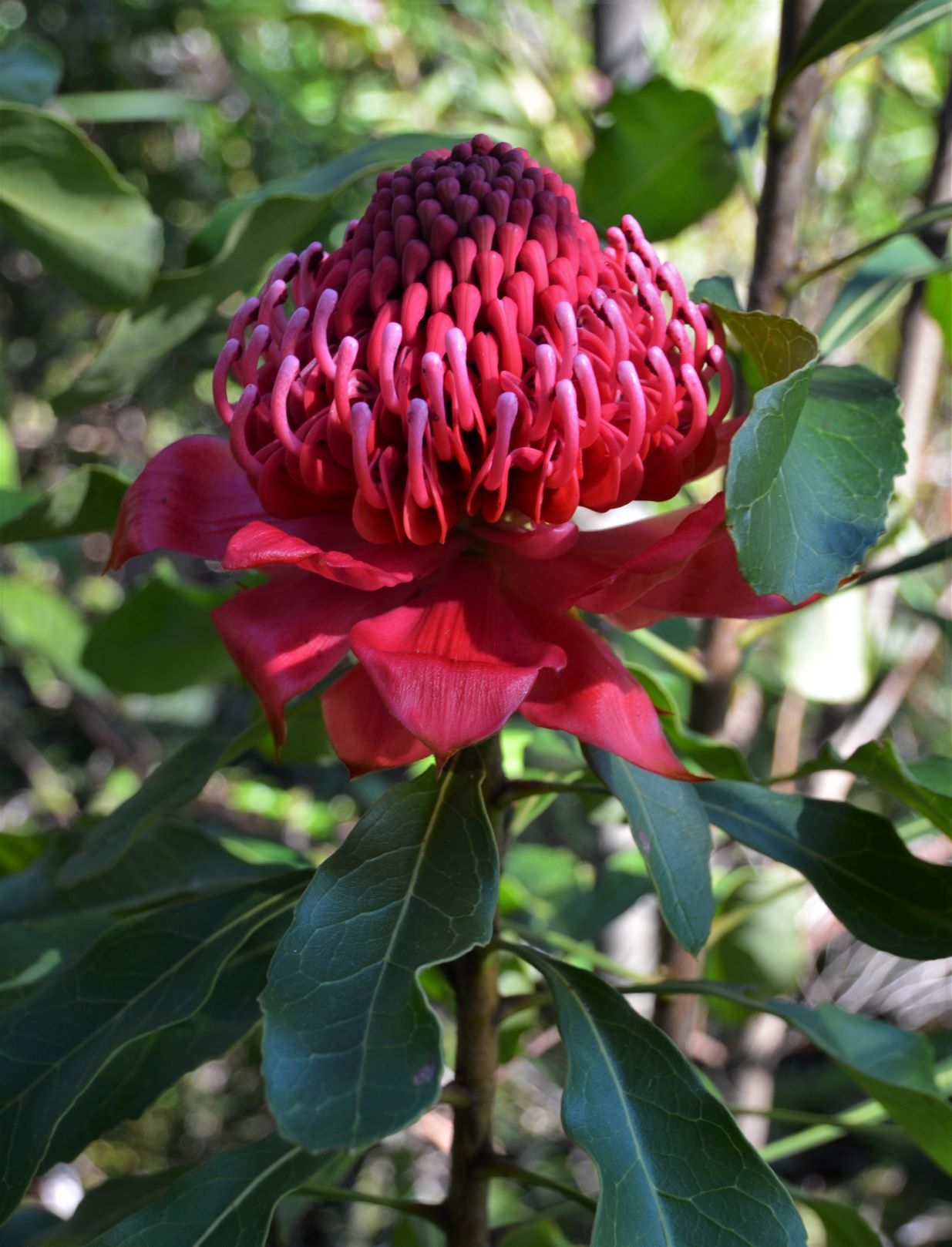
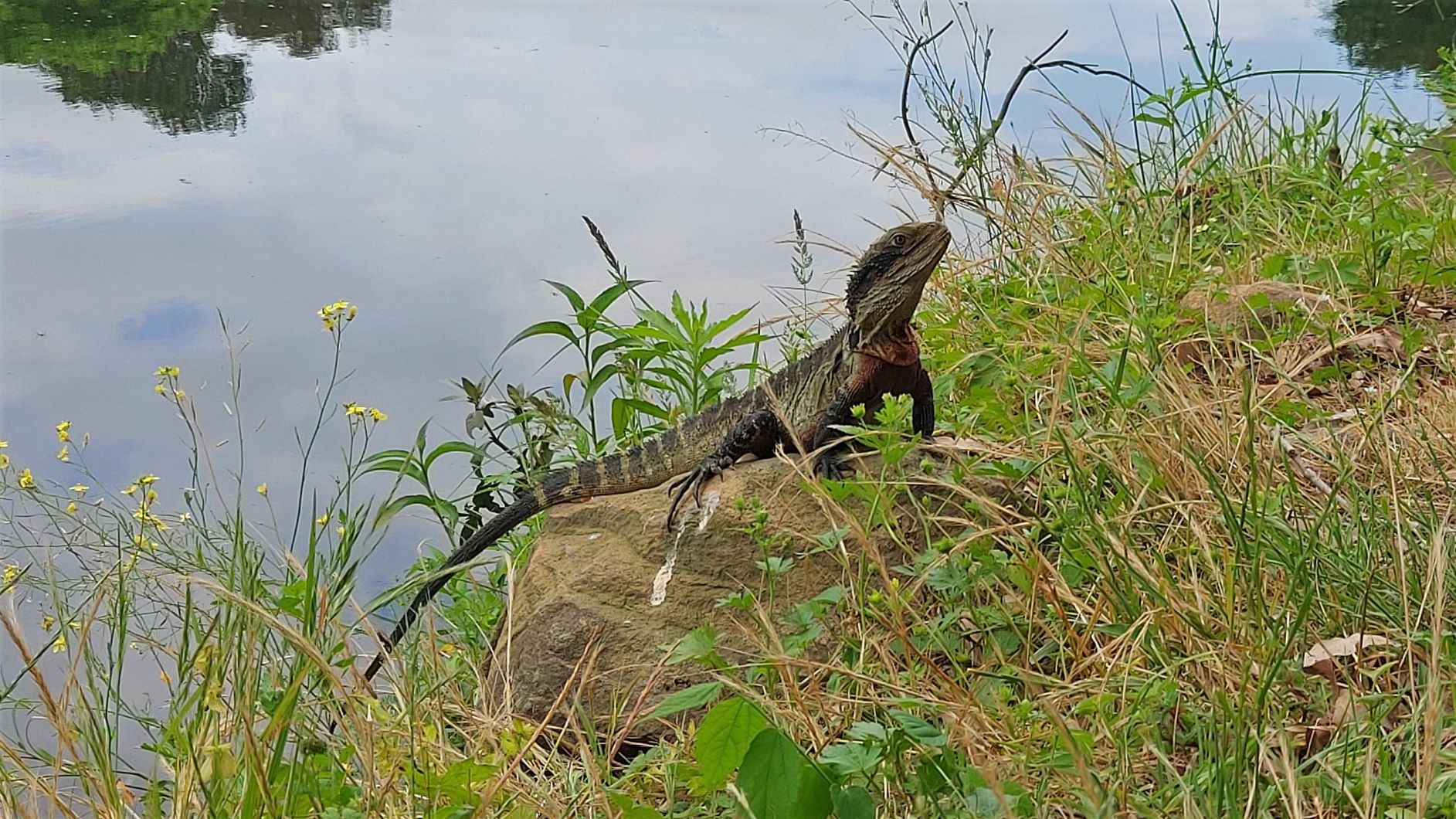


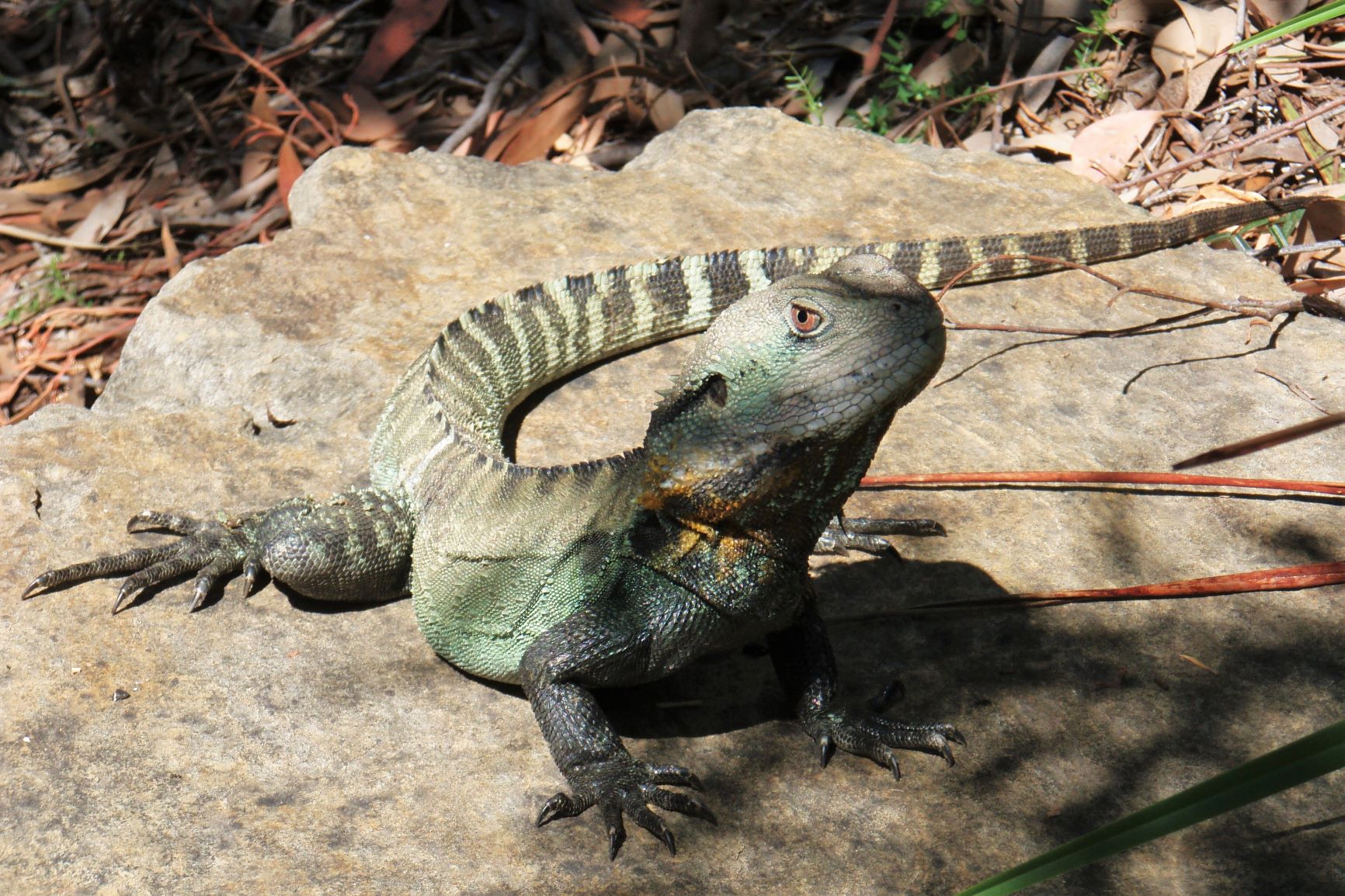

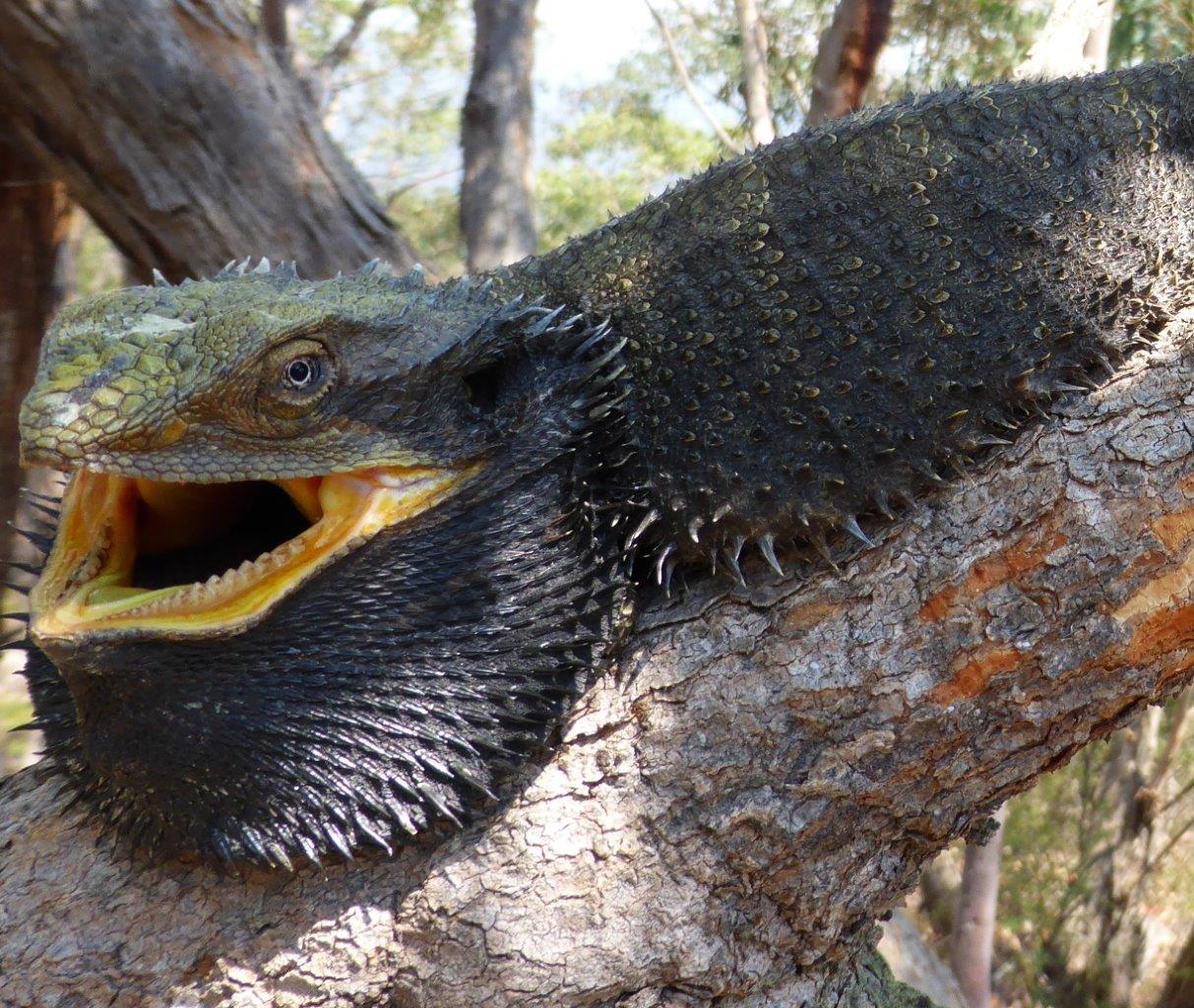

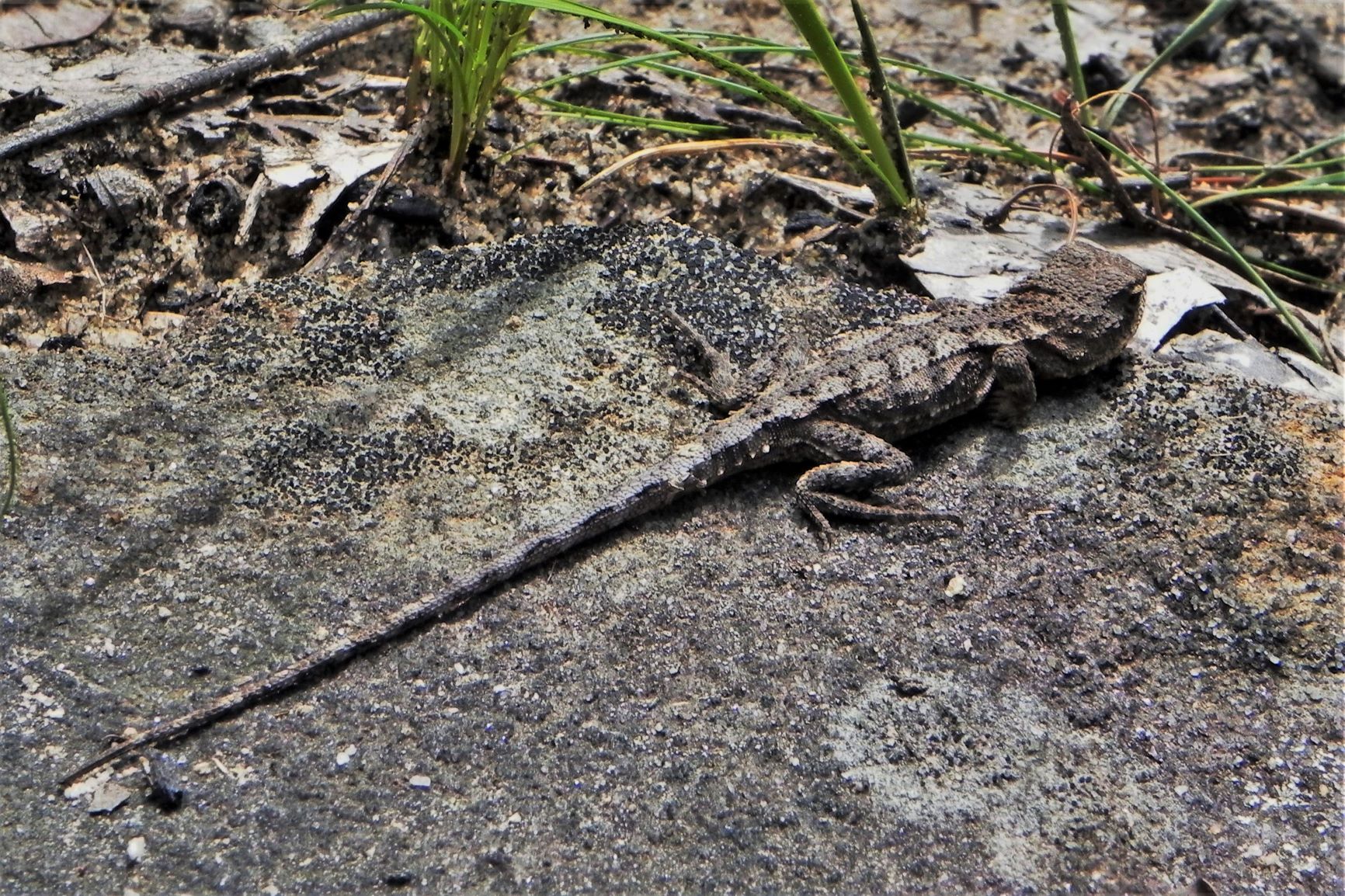
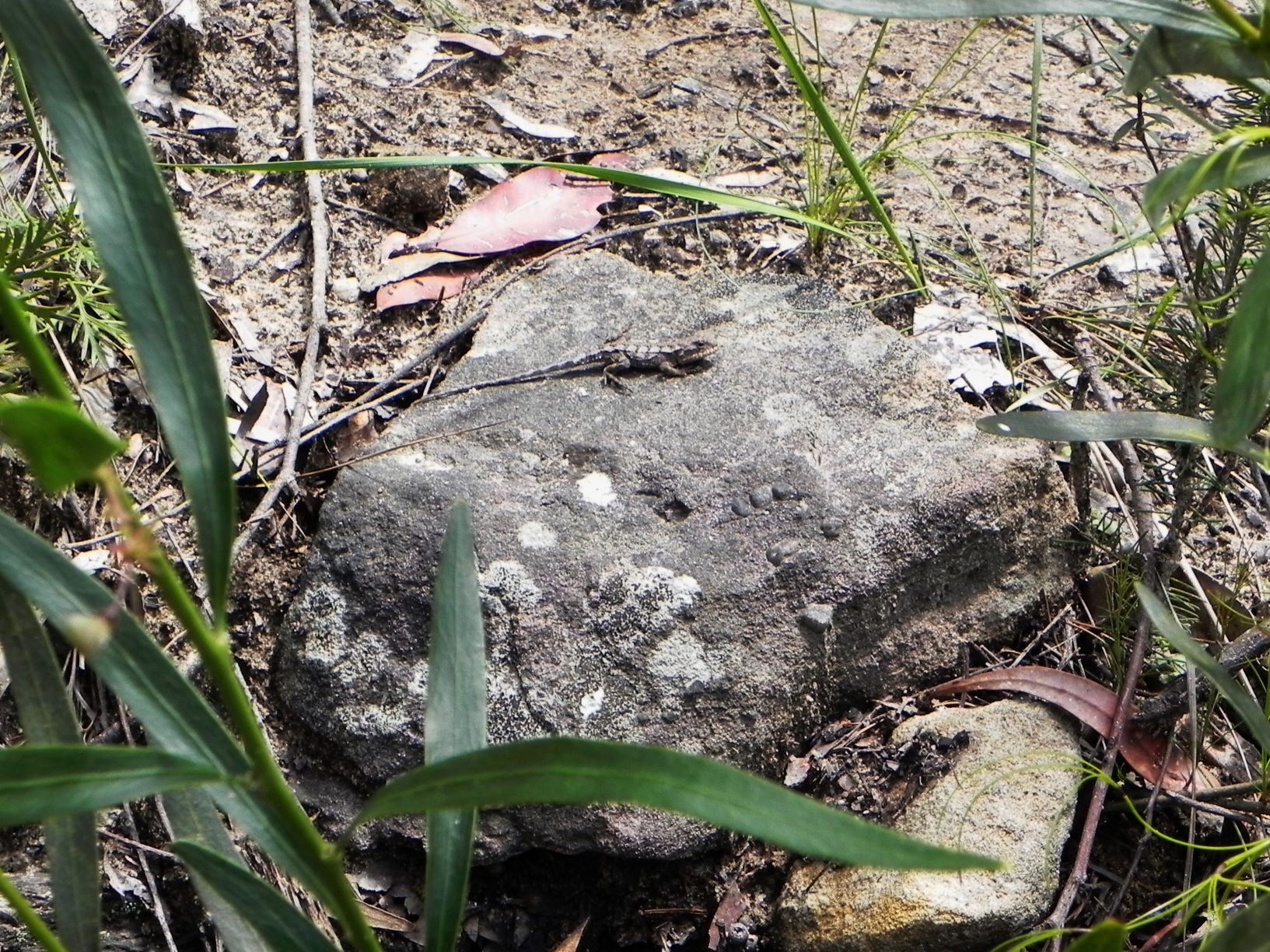


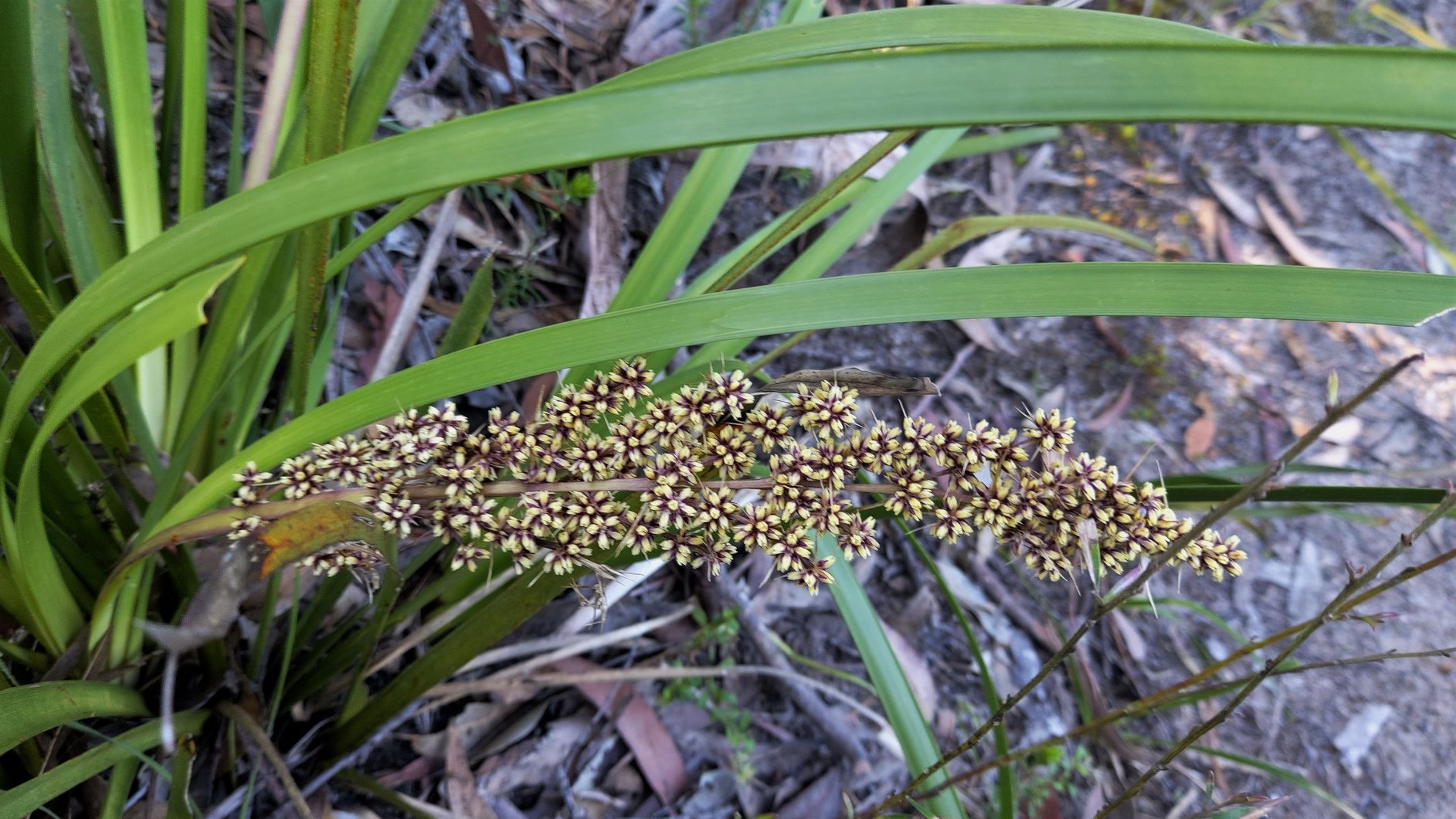

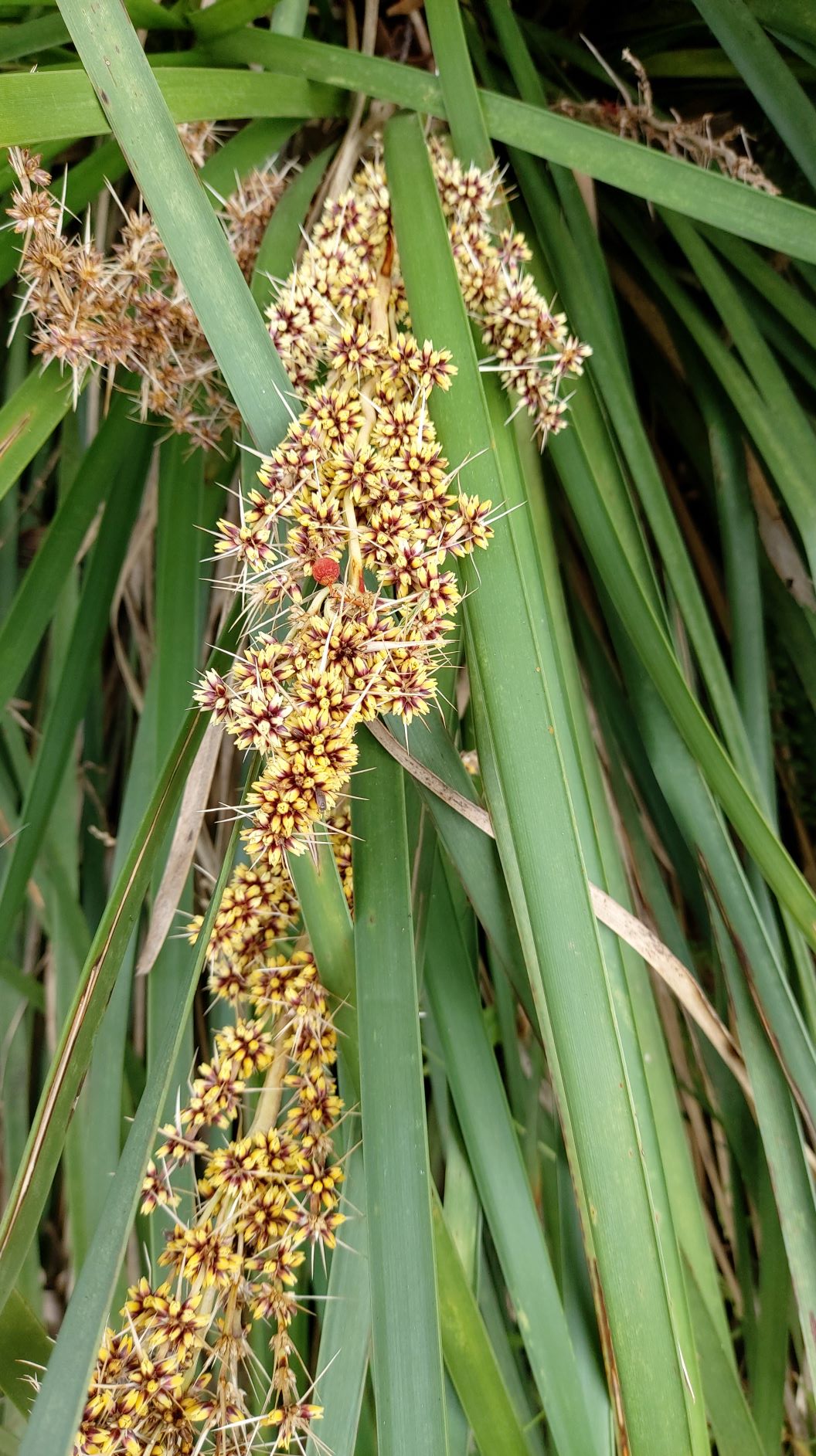
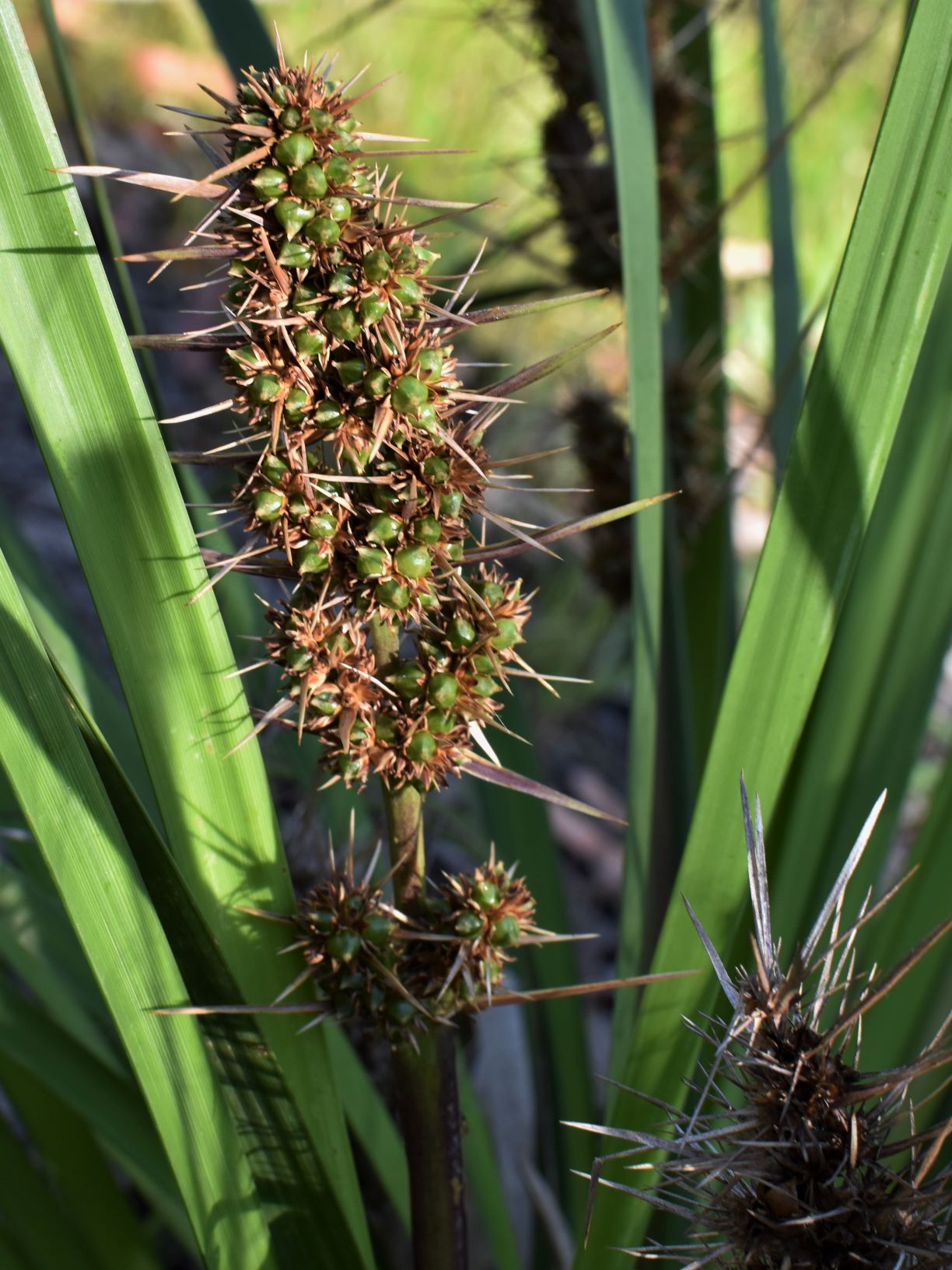

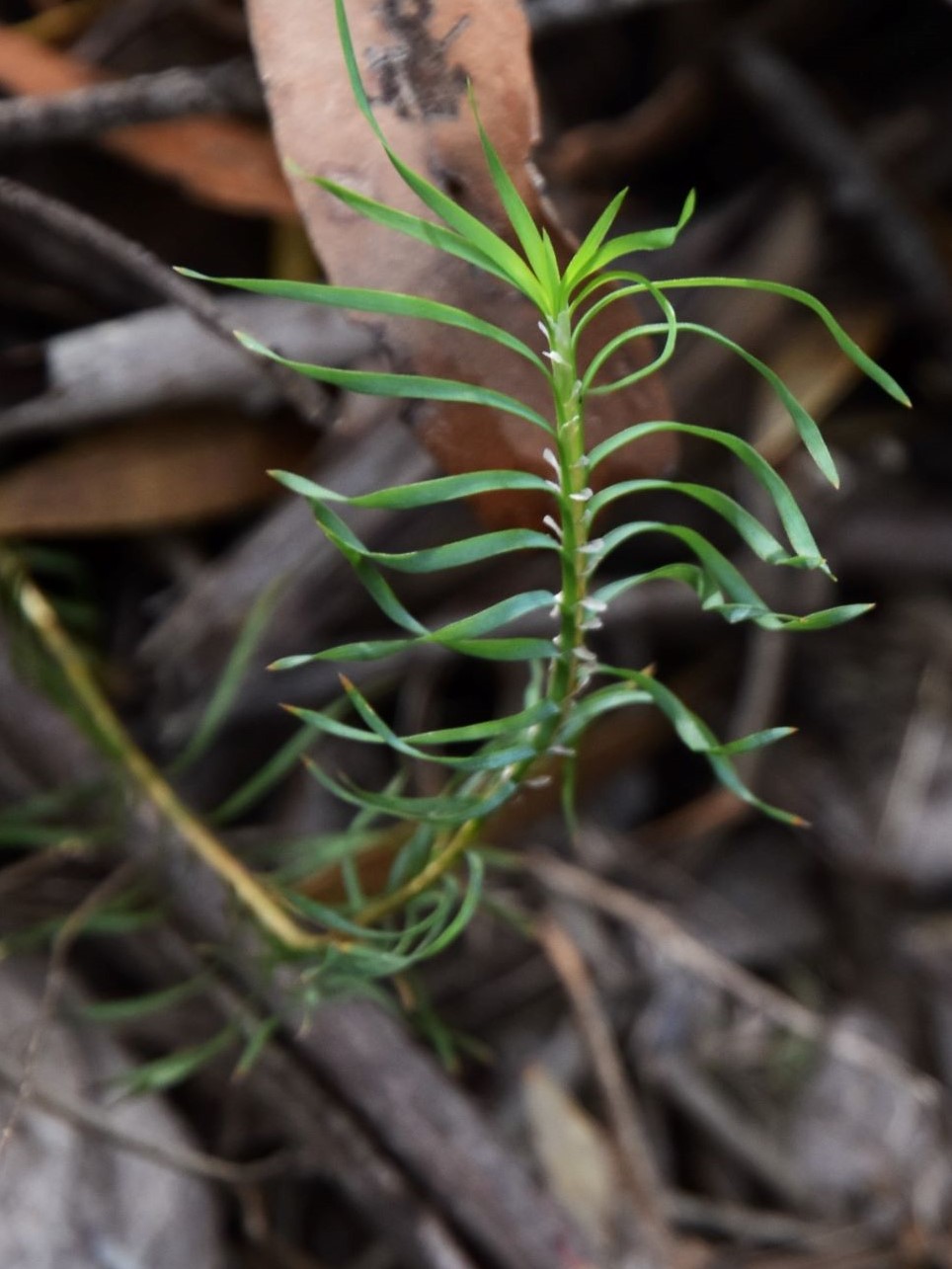

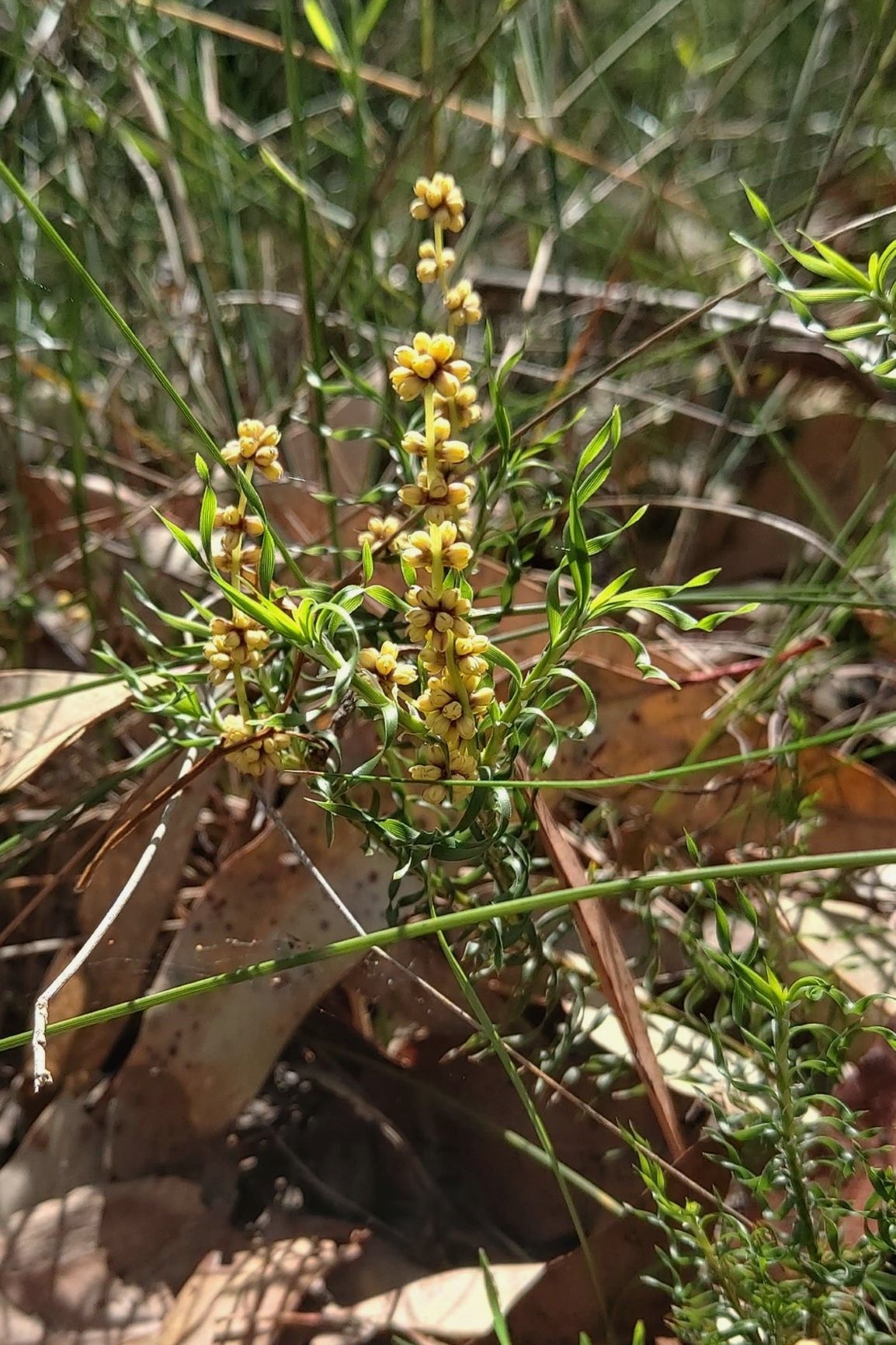
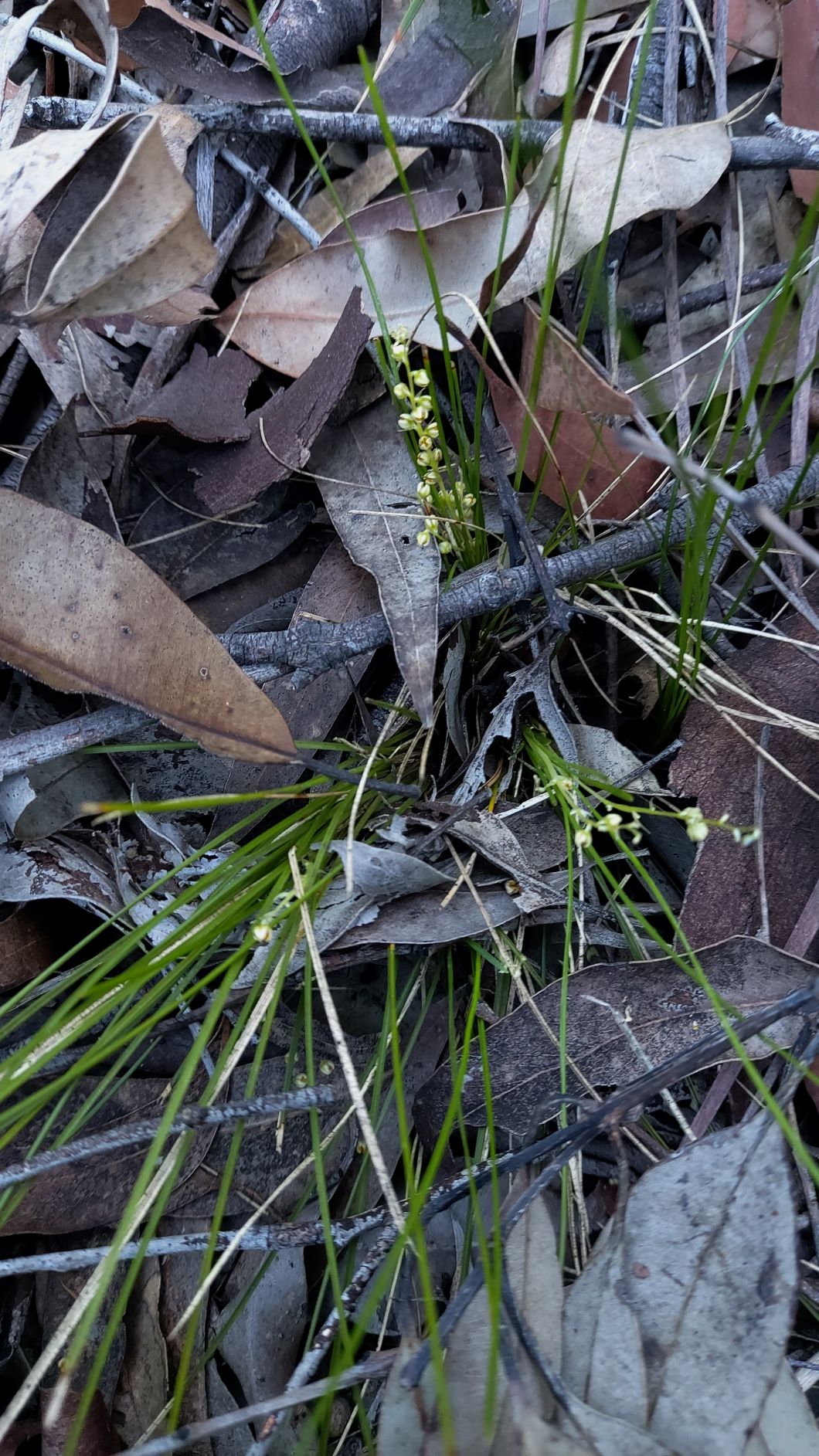 Lomandra brevis
Lomandra brevis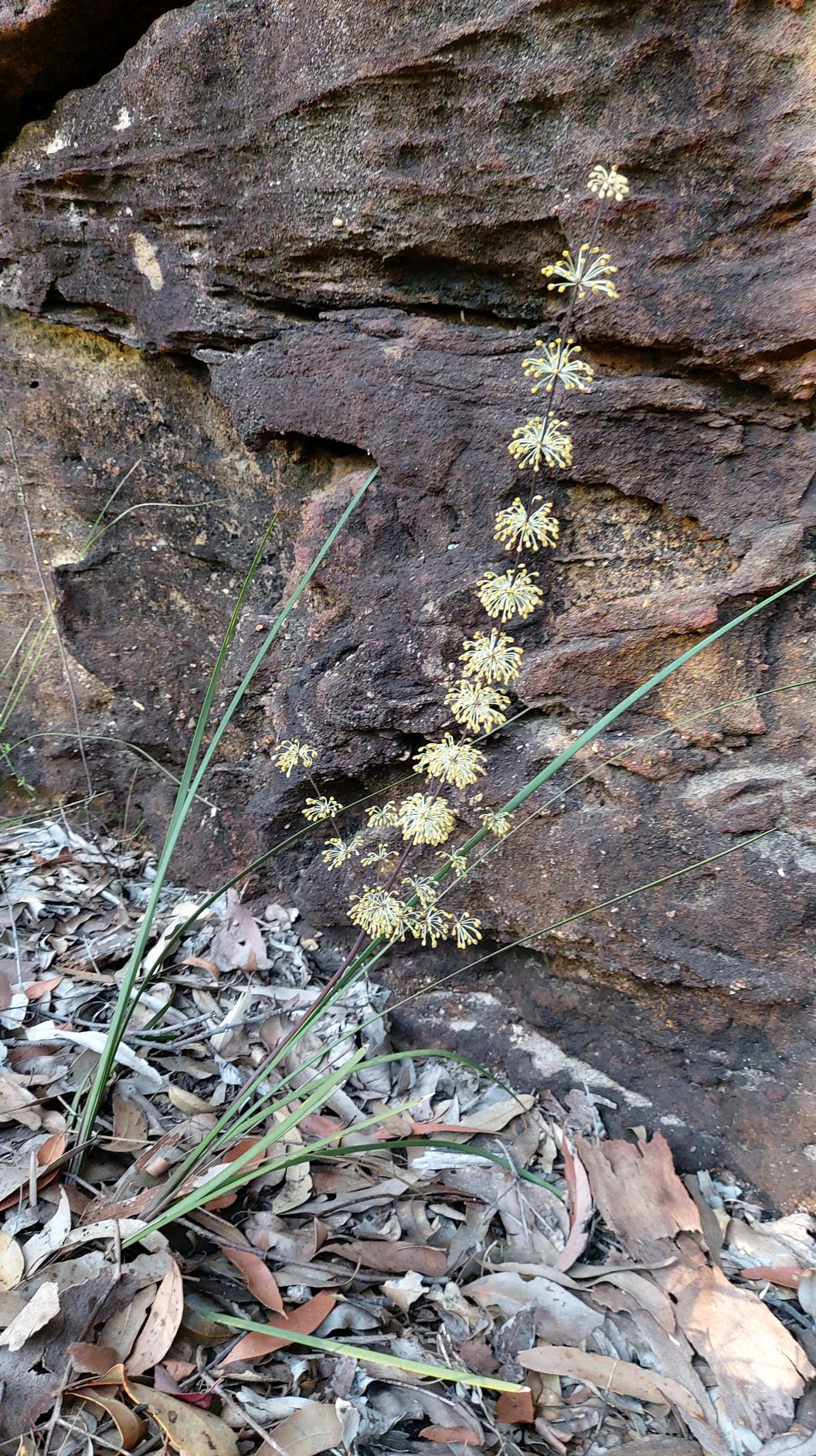
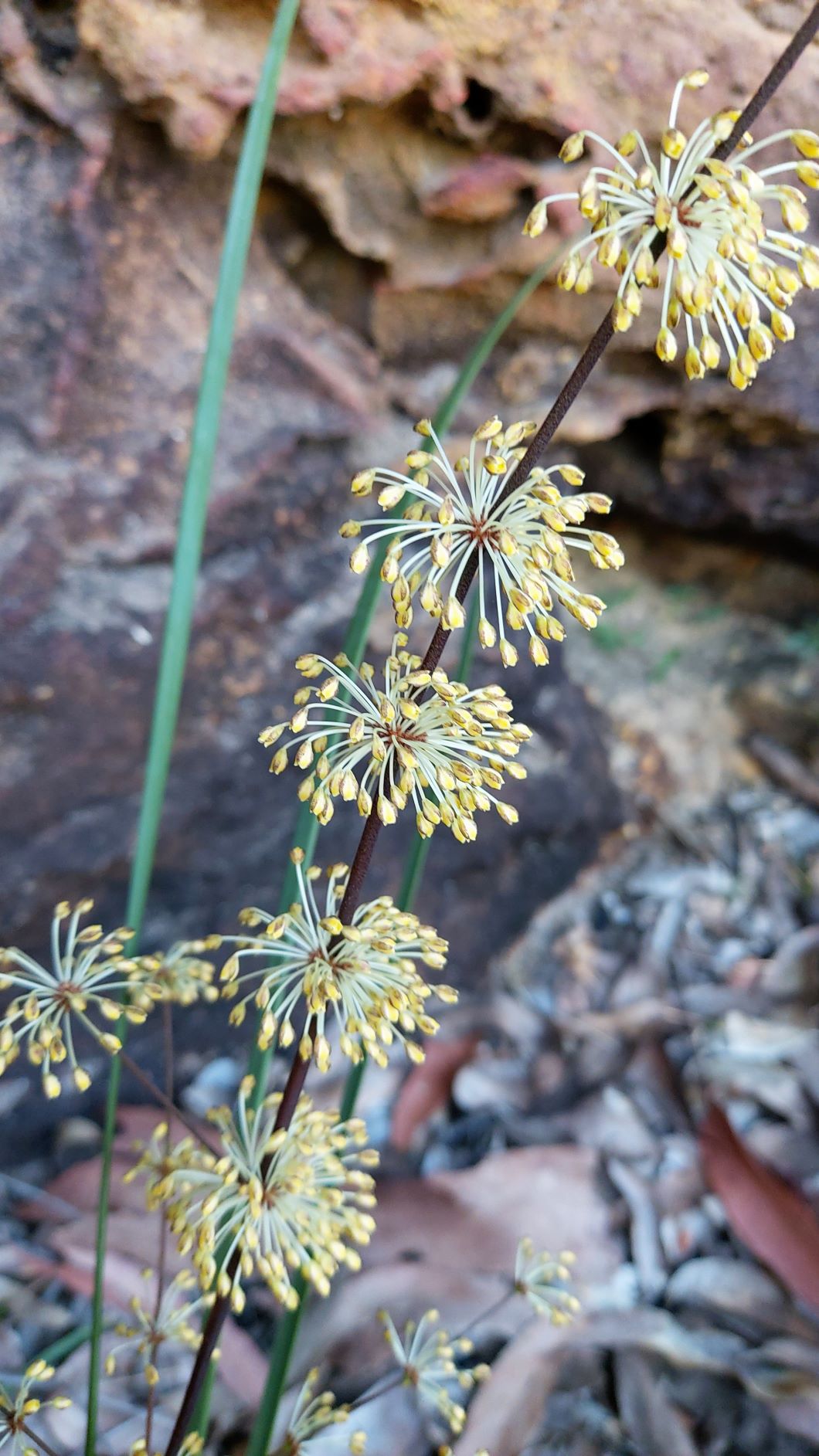

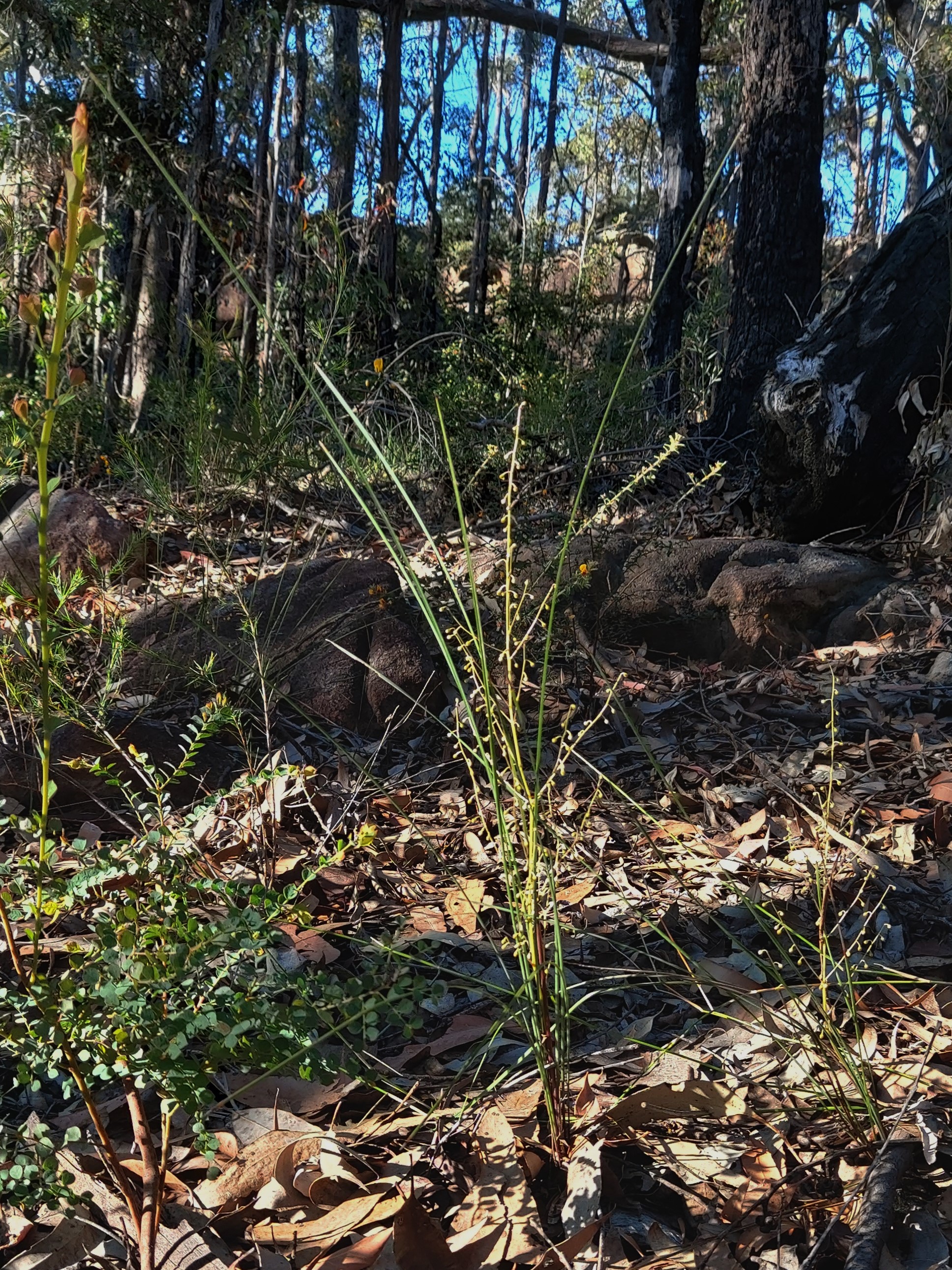
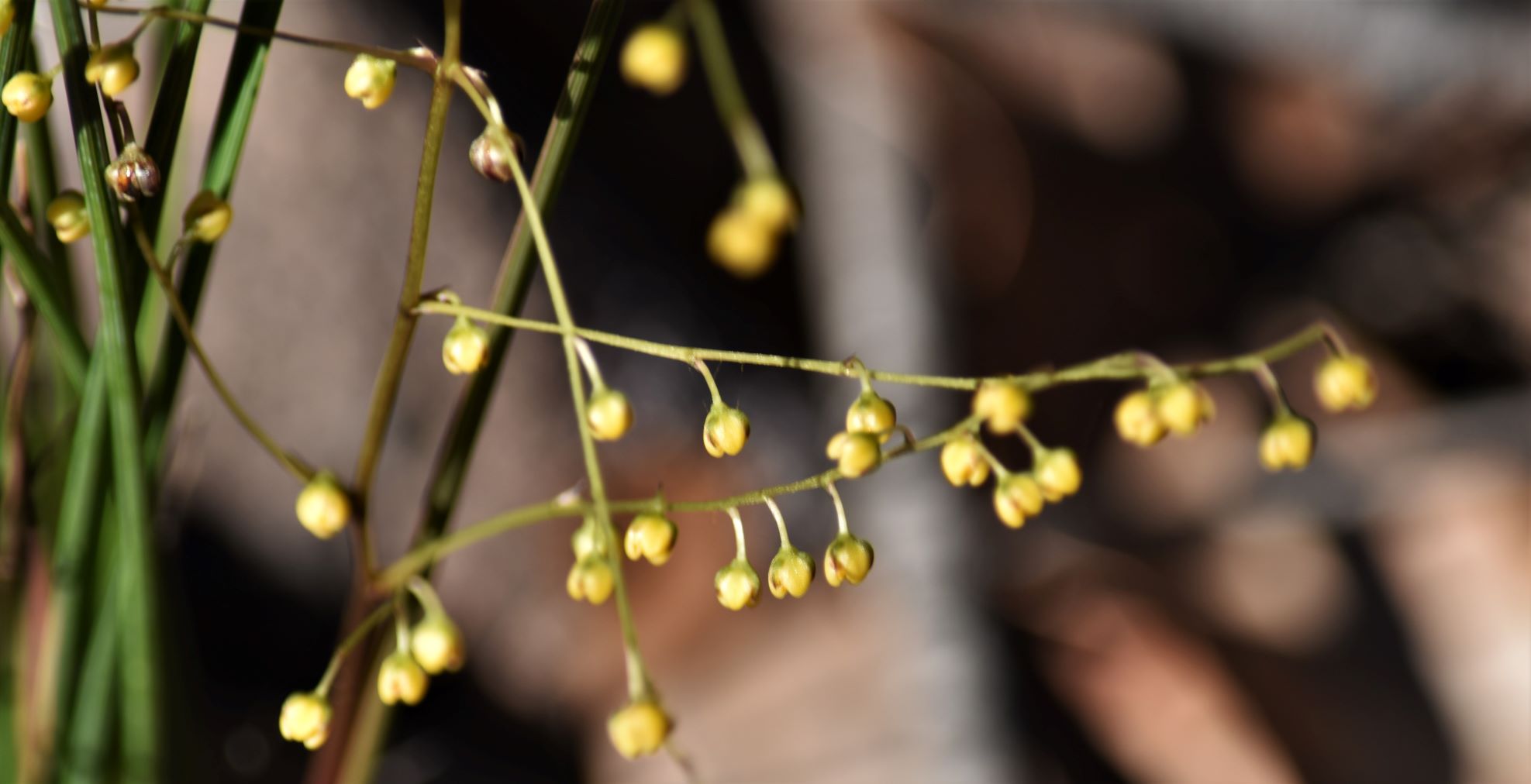
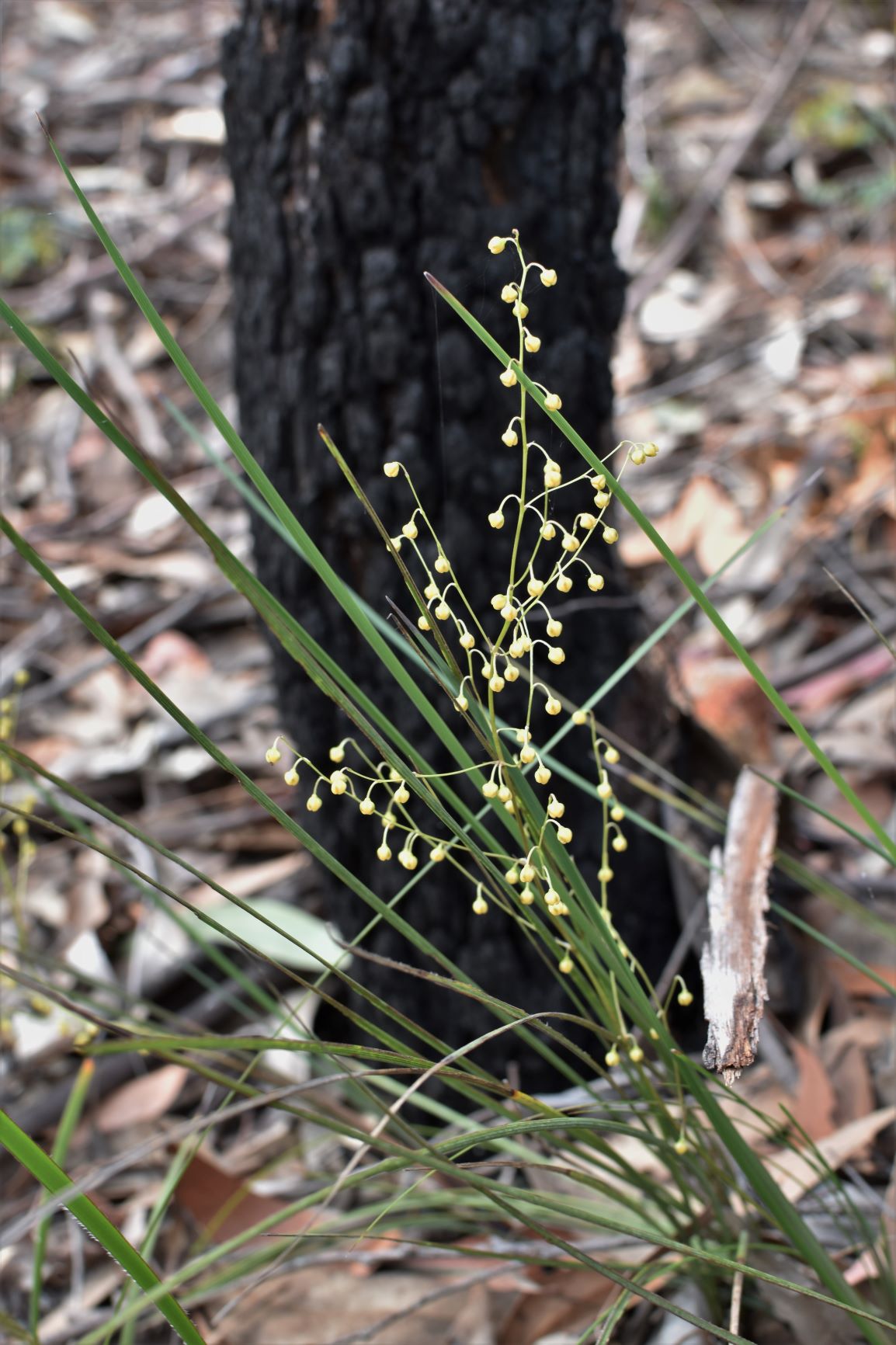
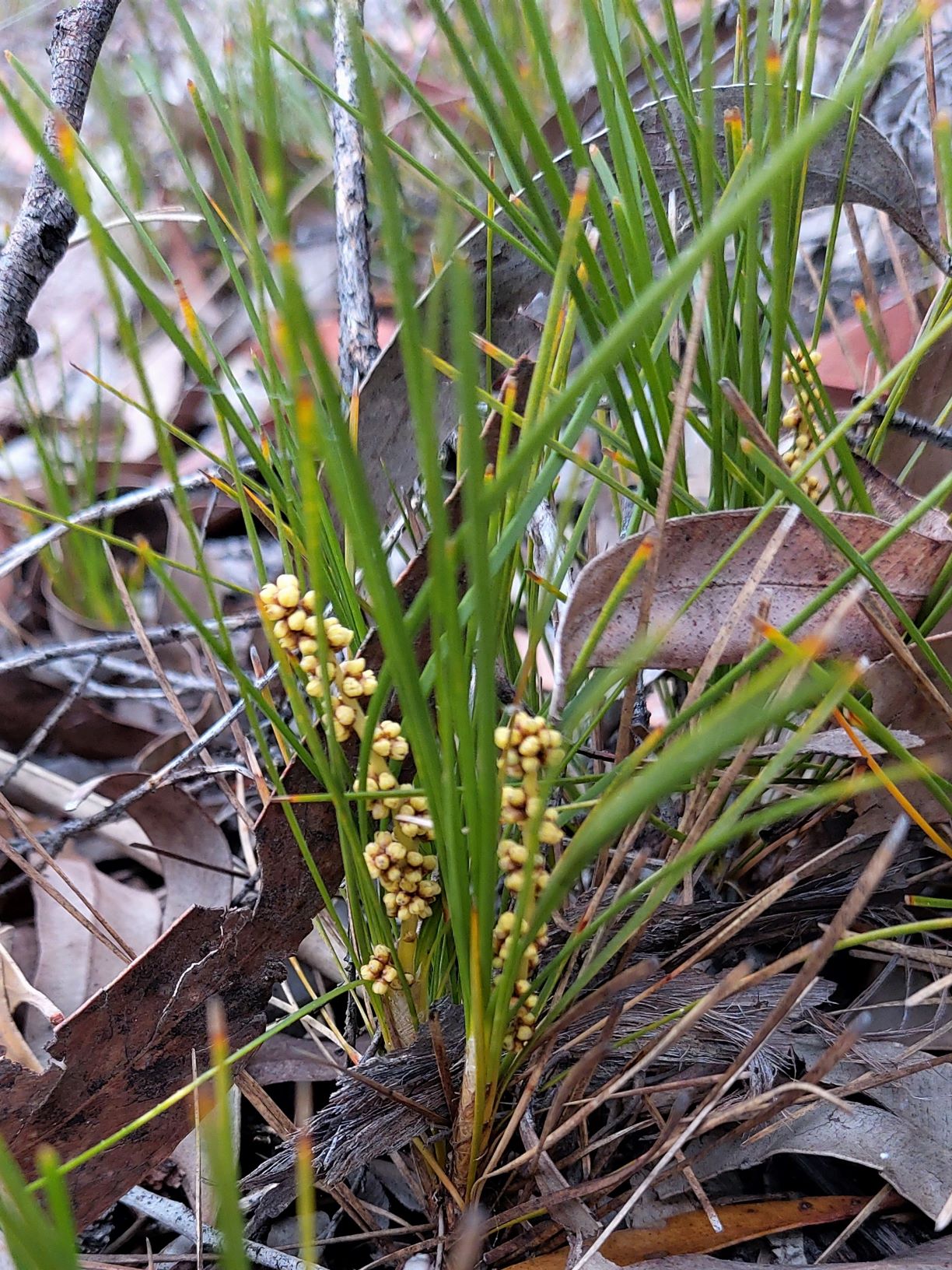
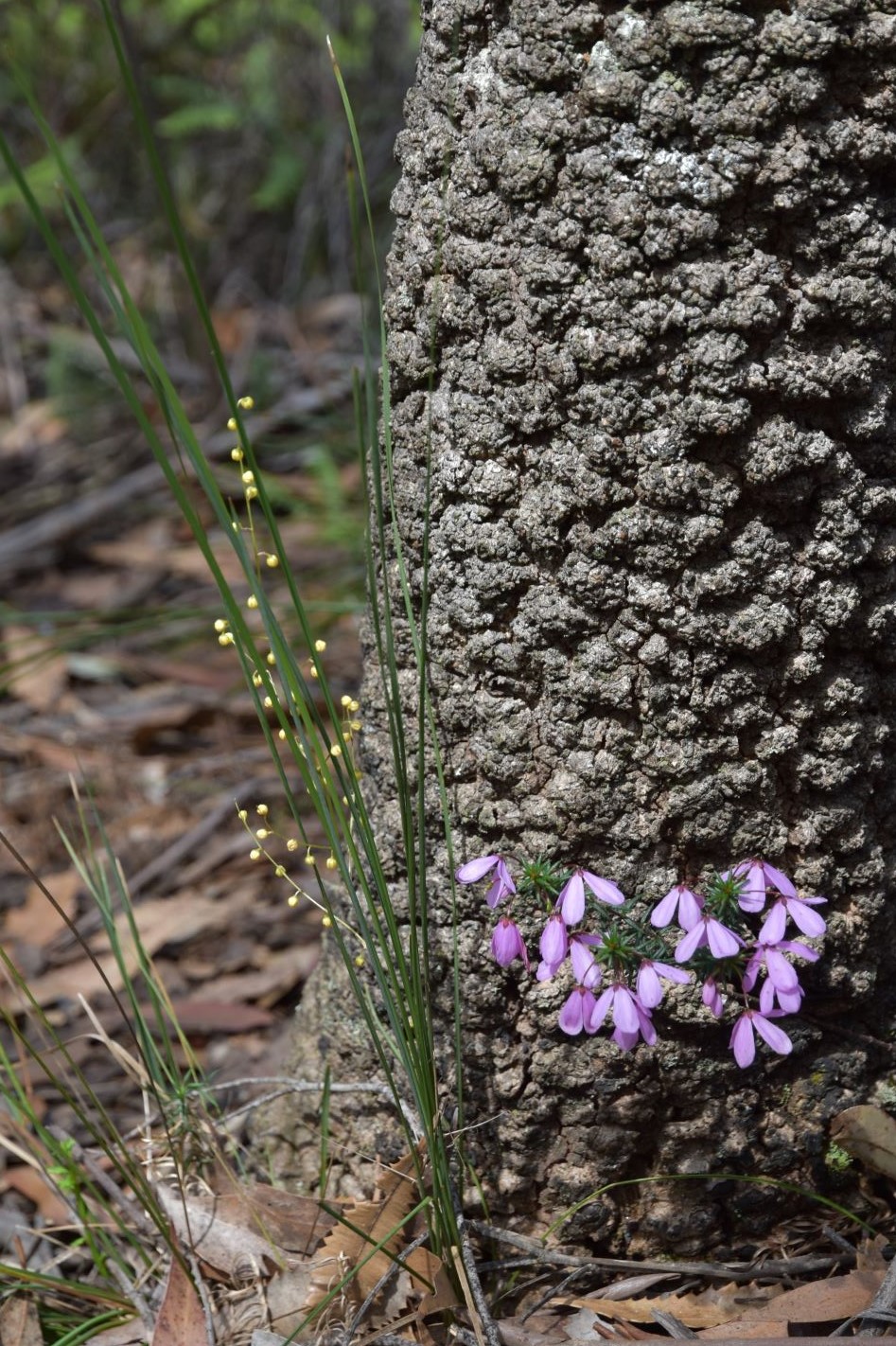
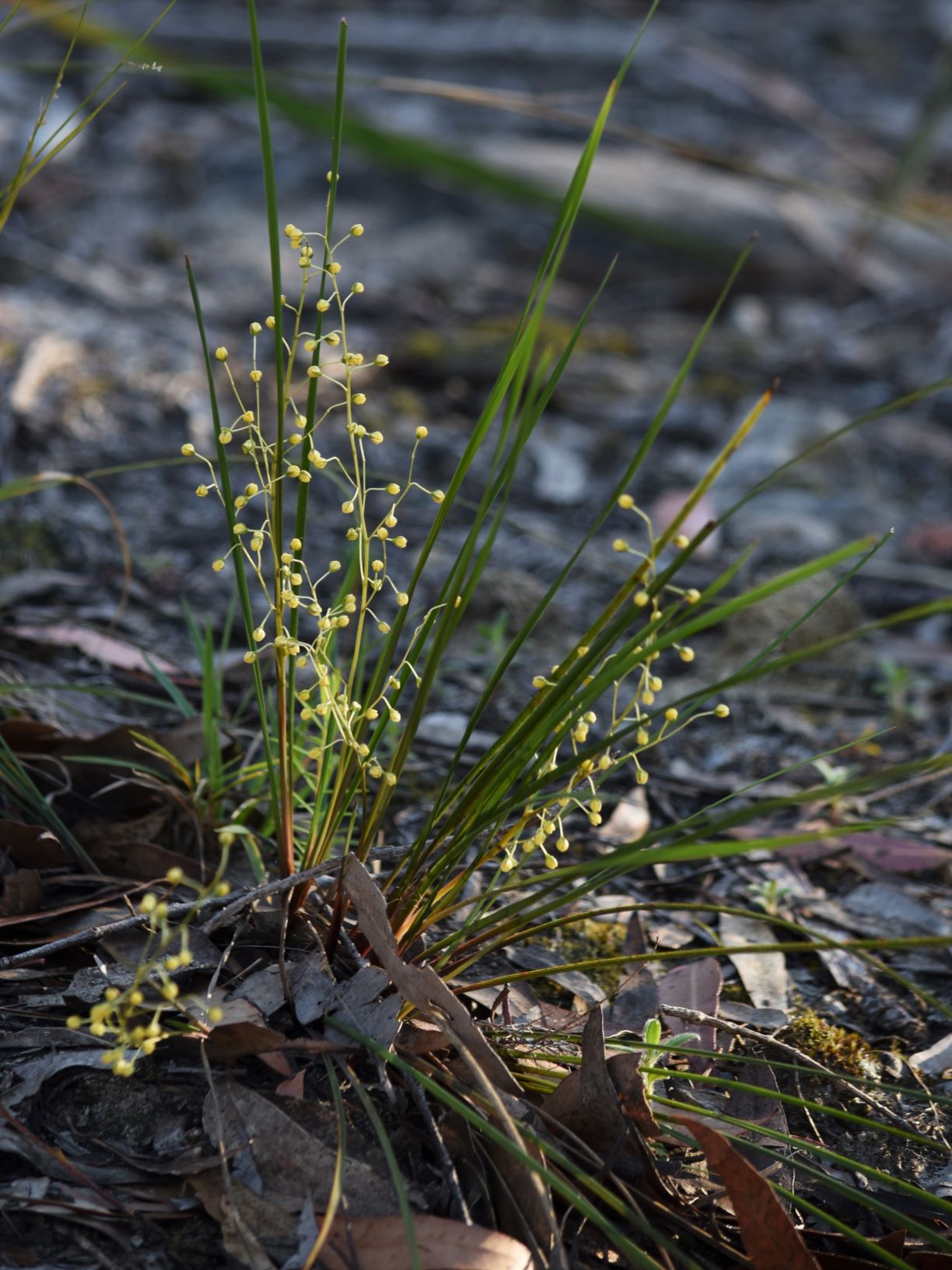

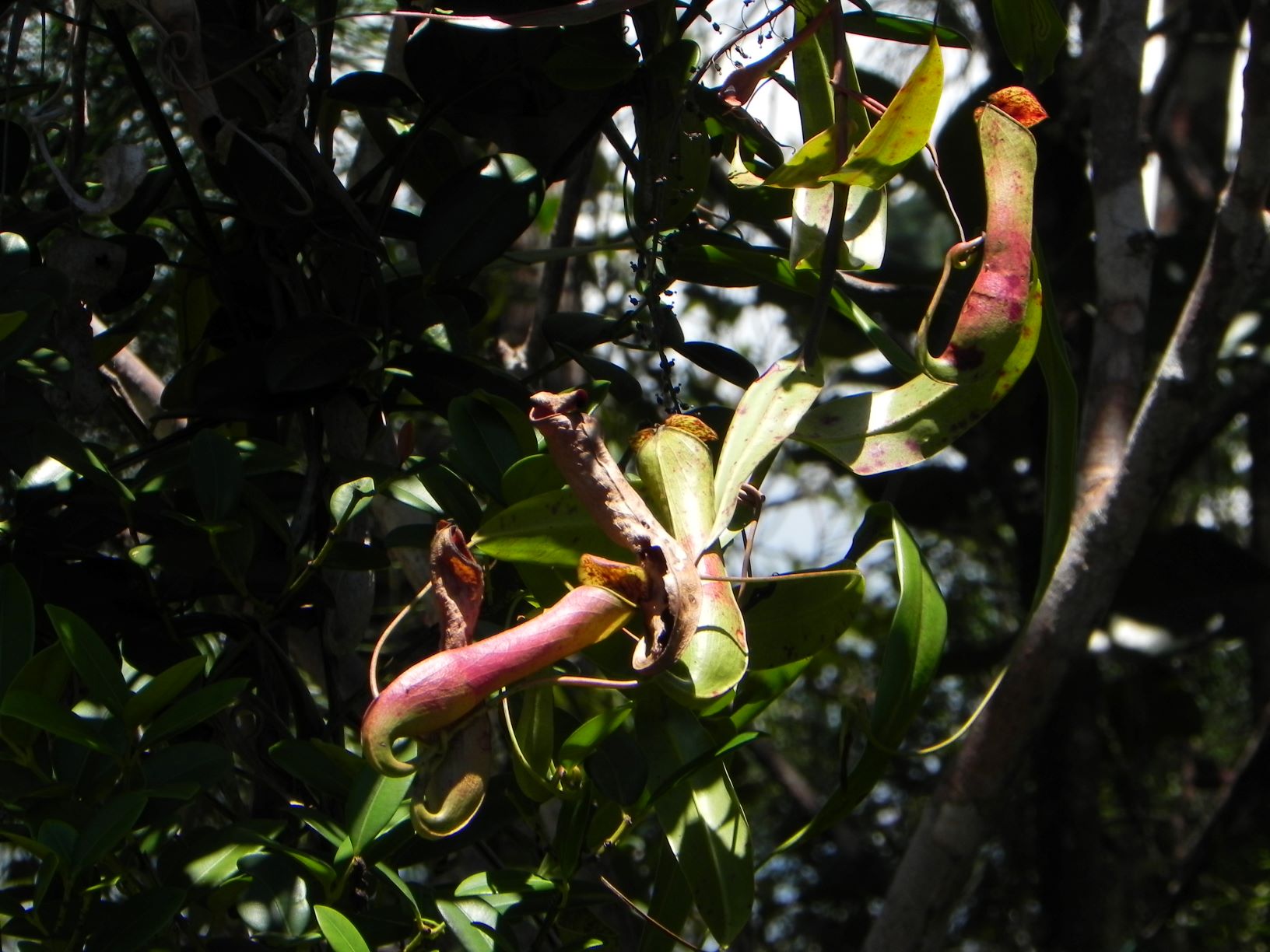
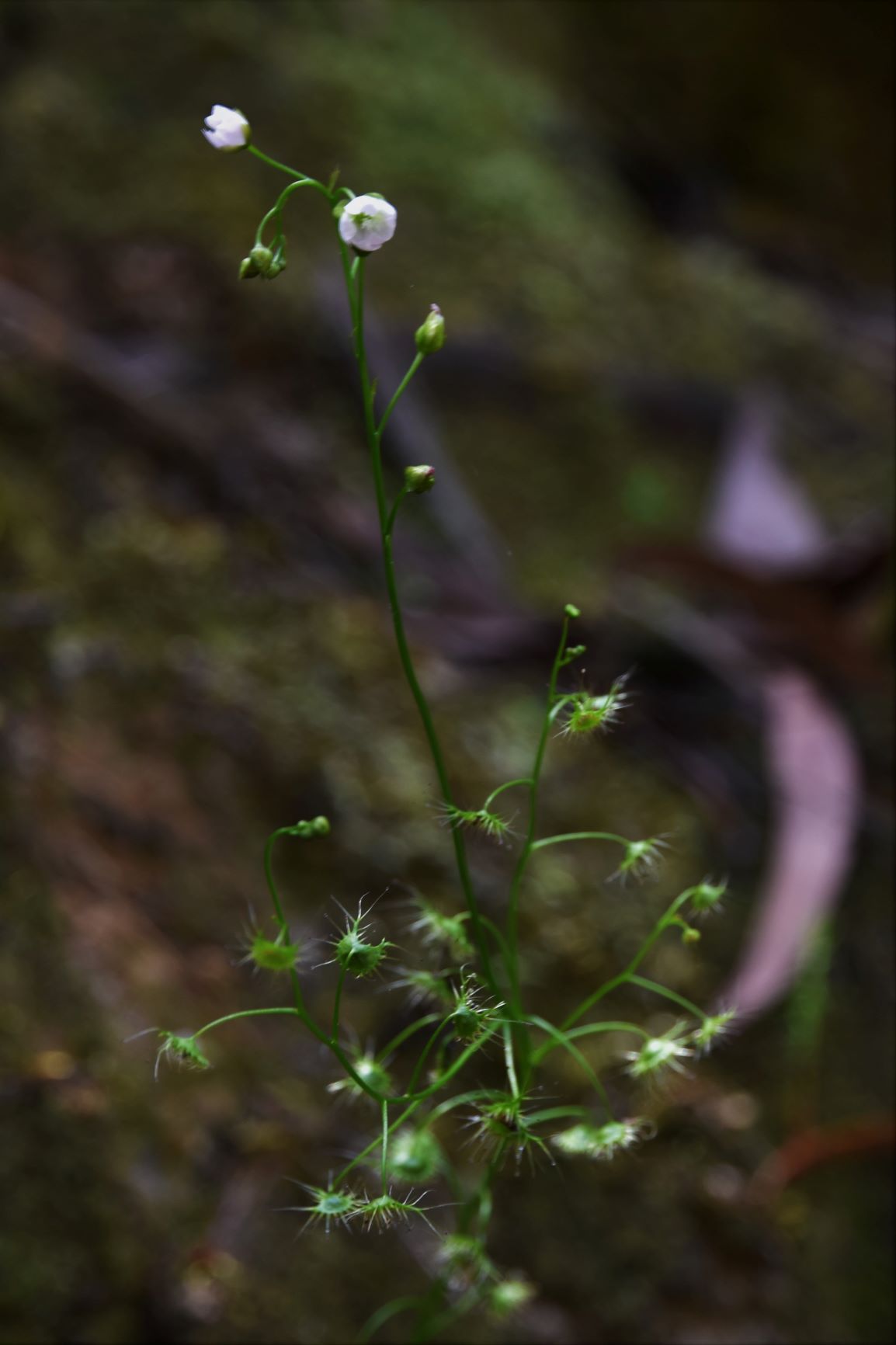

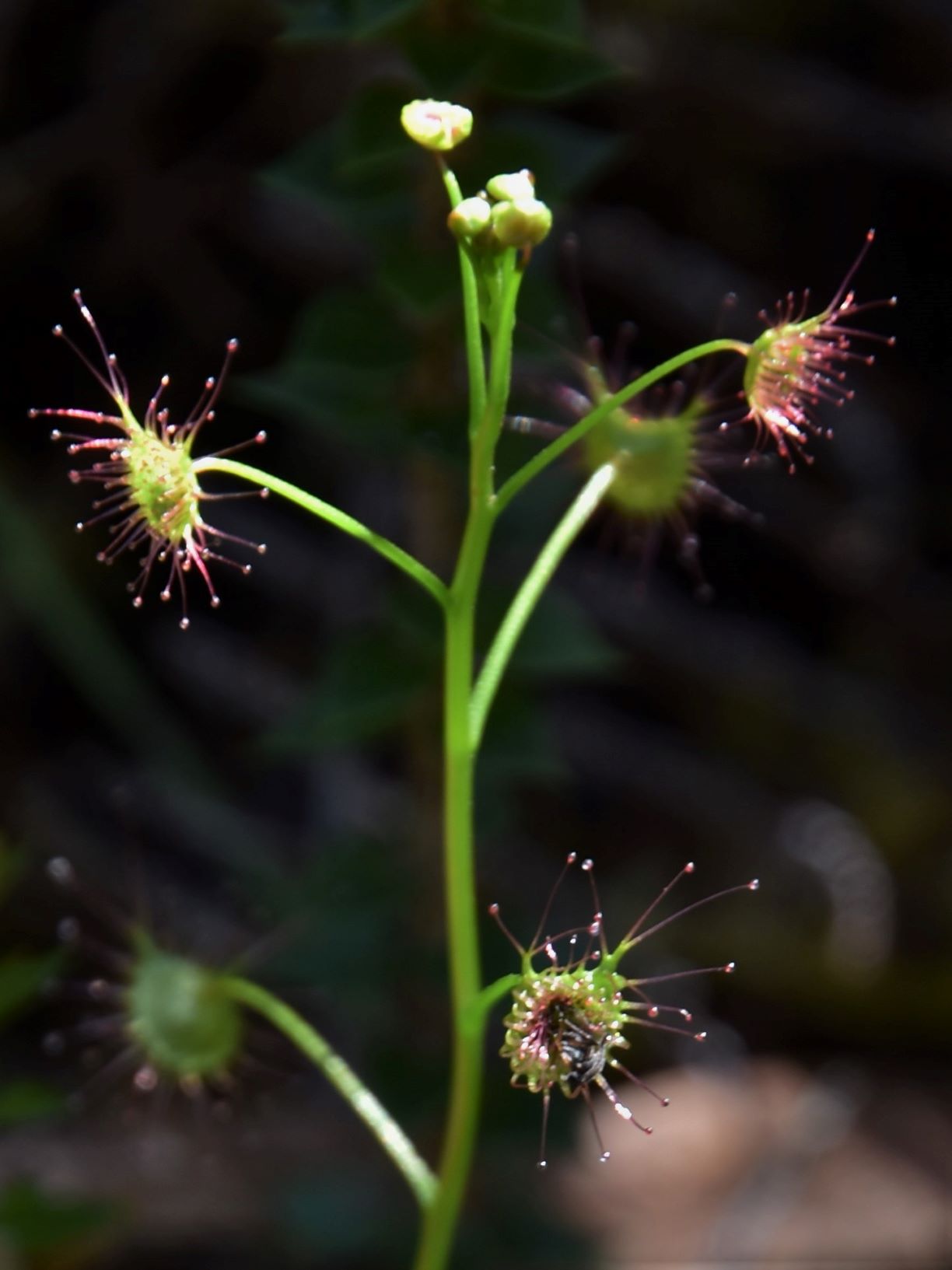
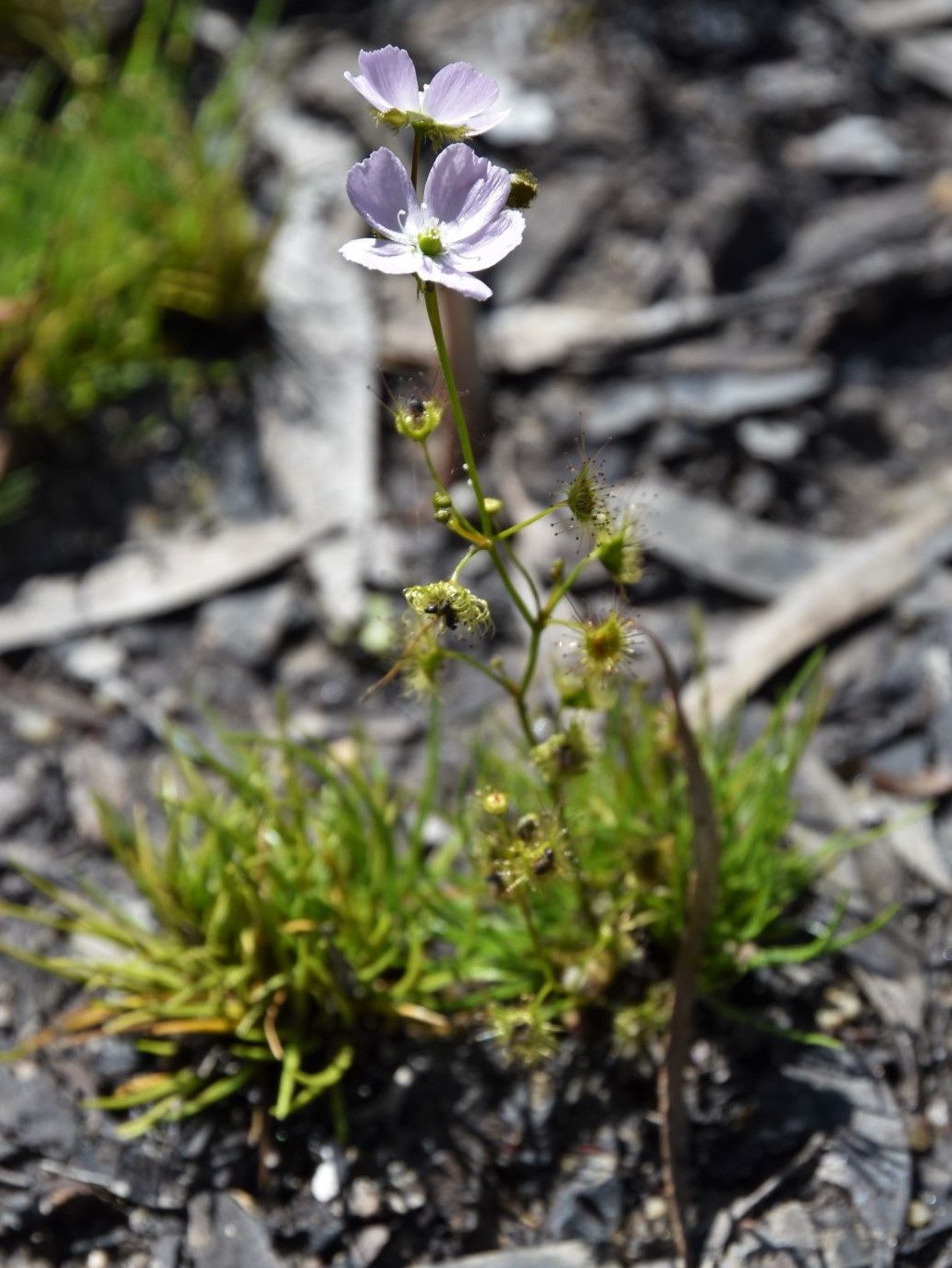
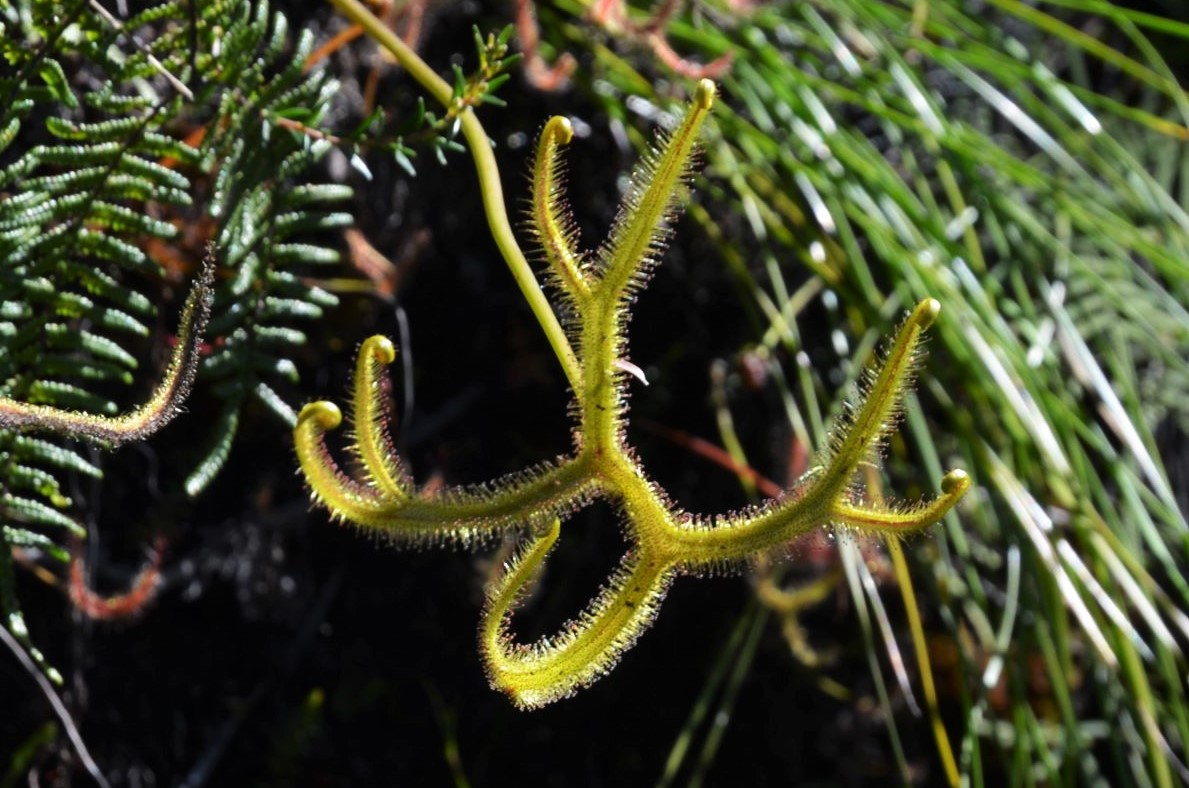
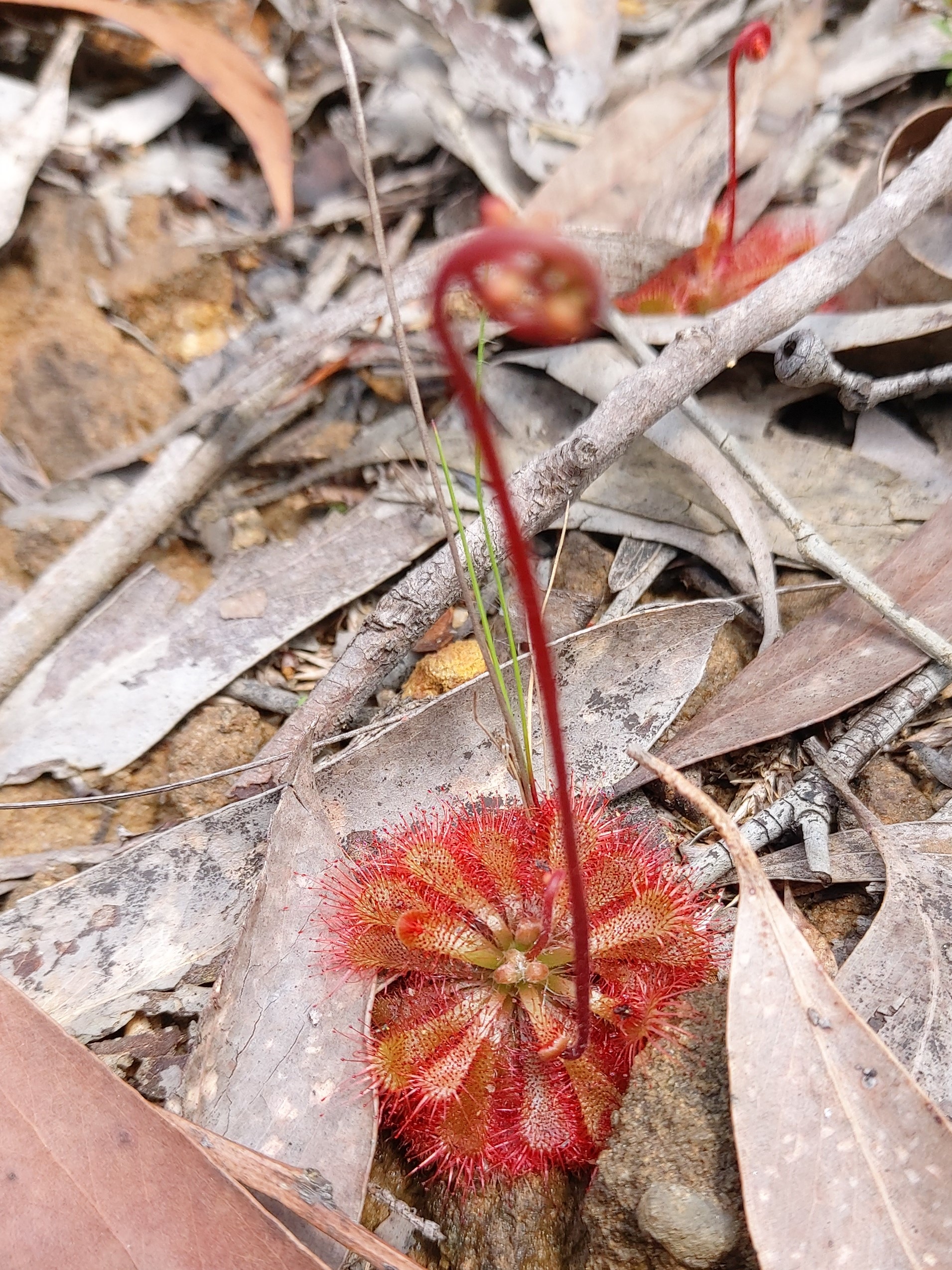
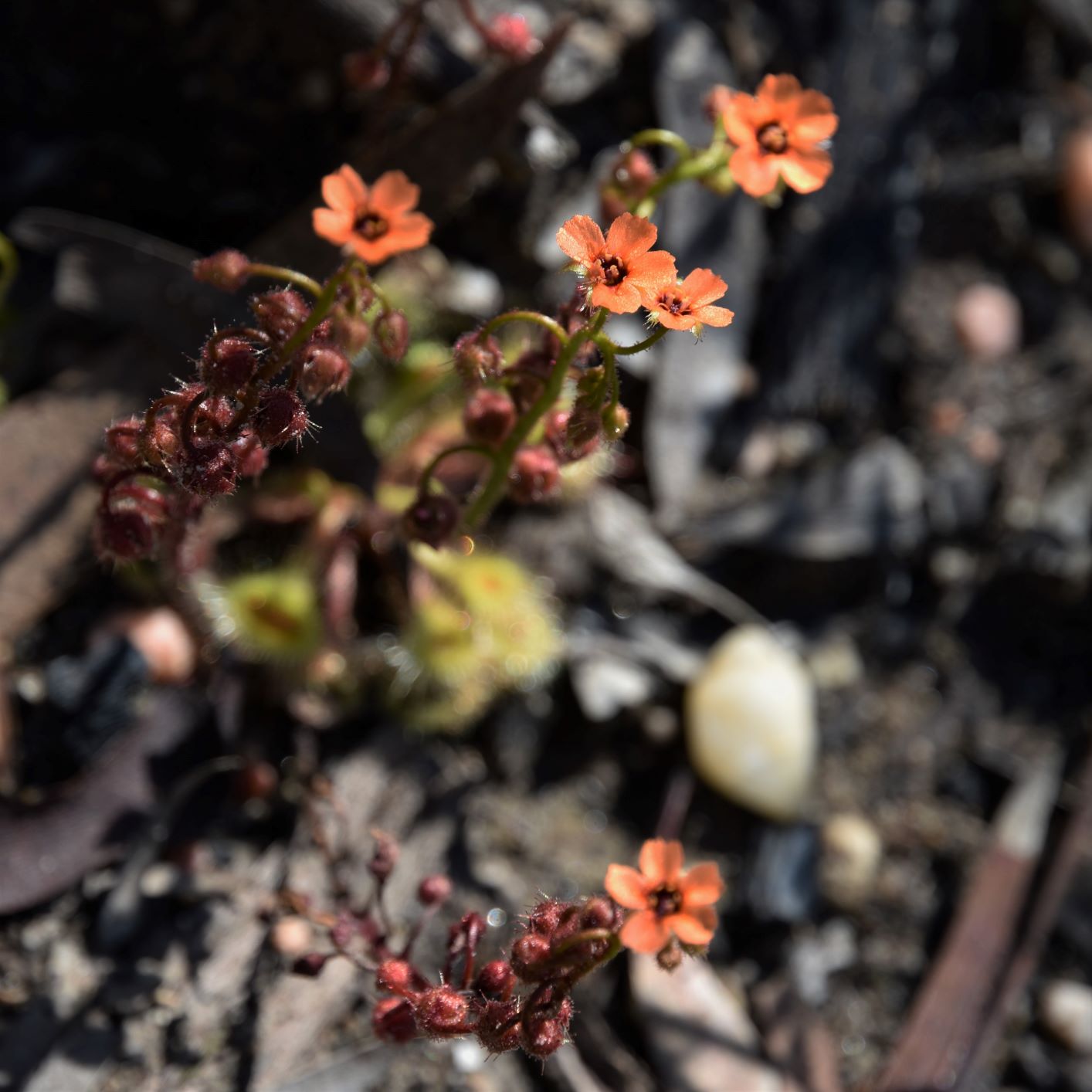
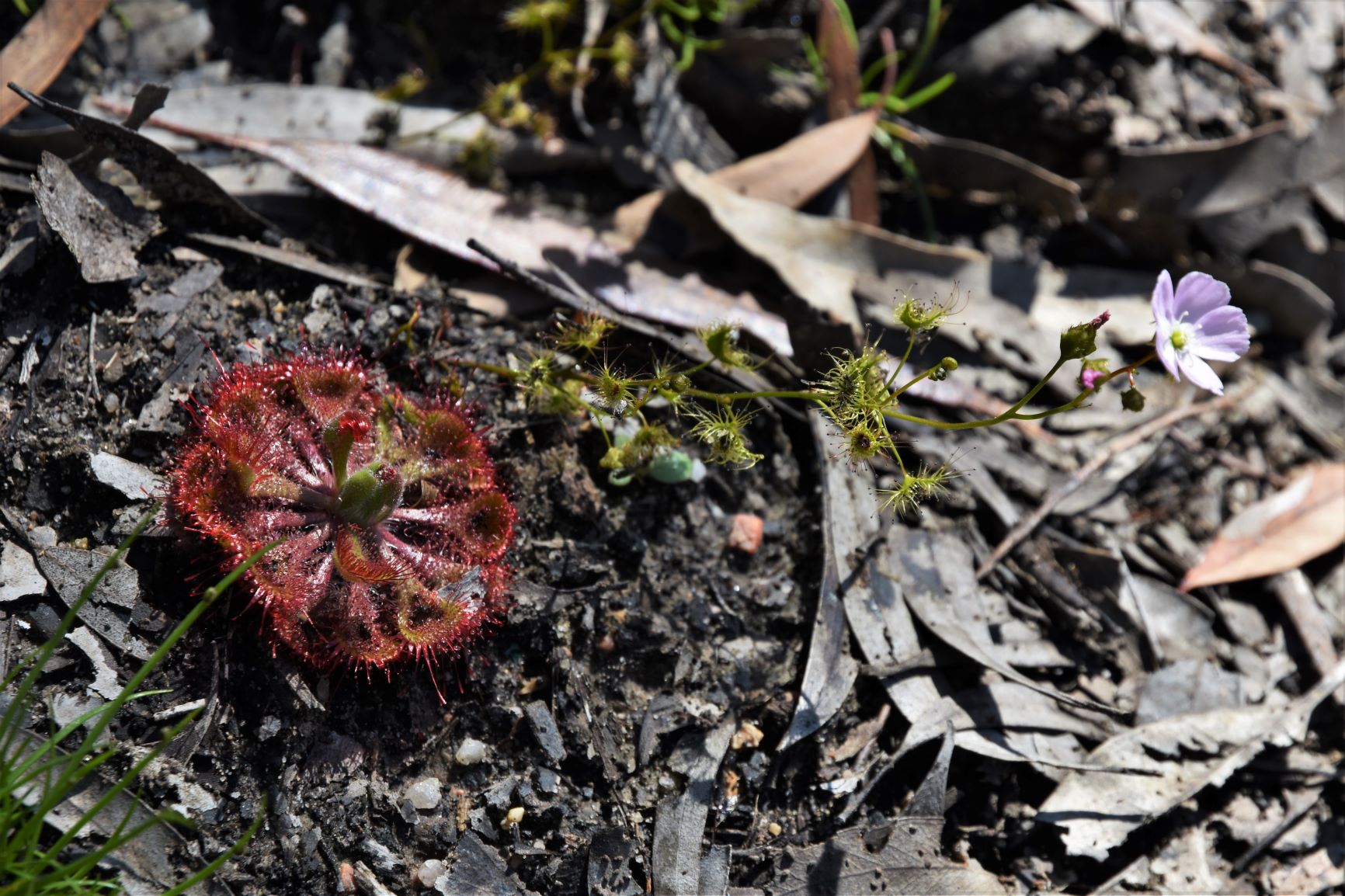
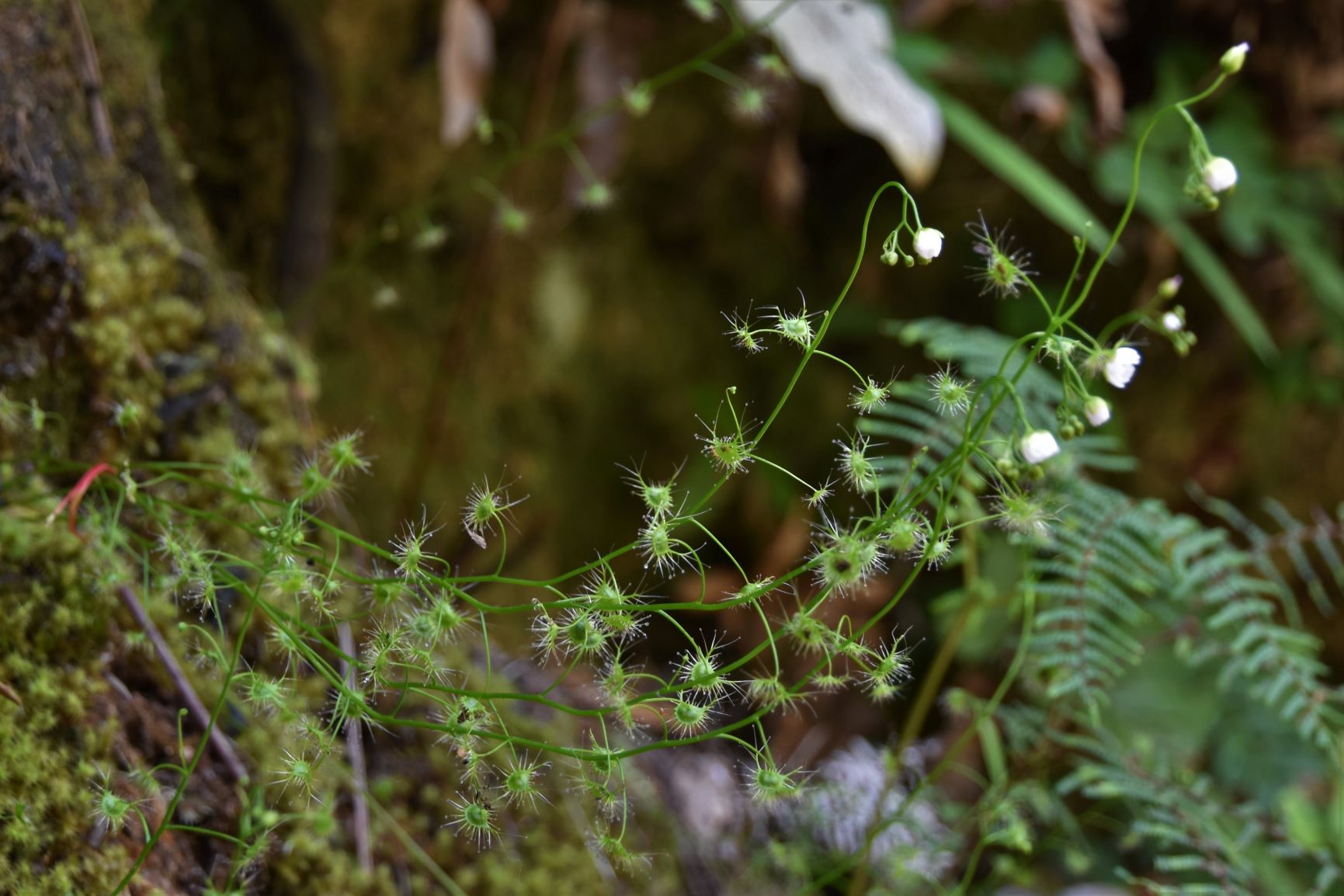

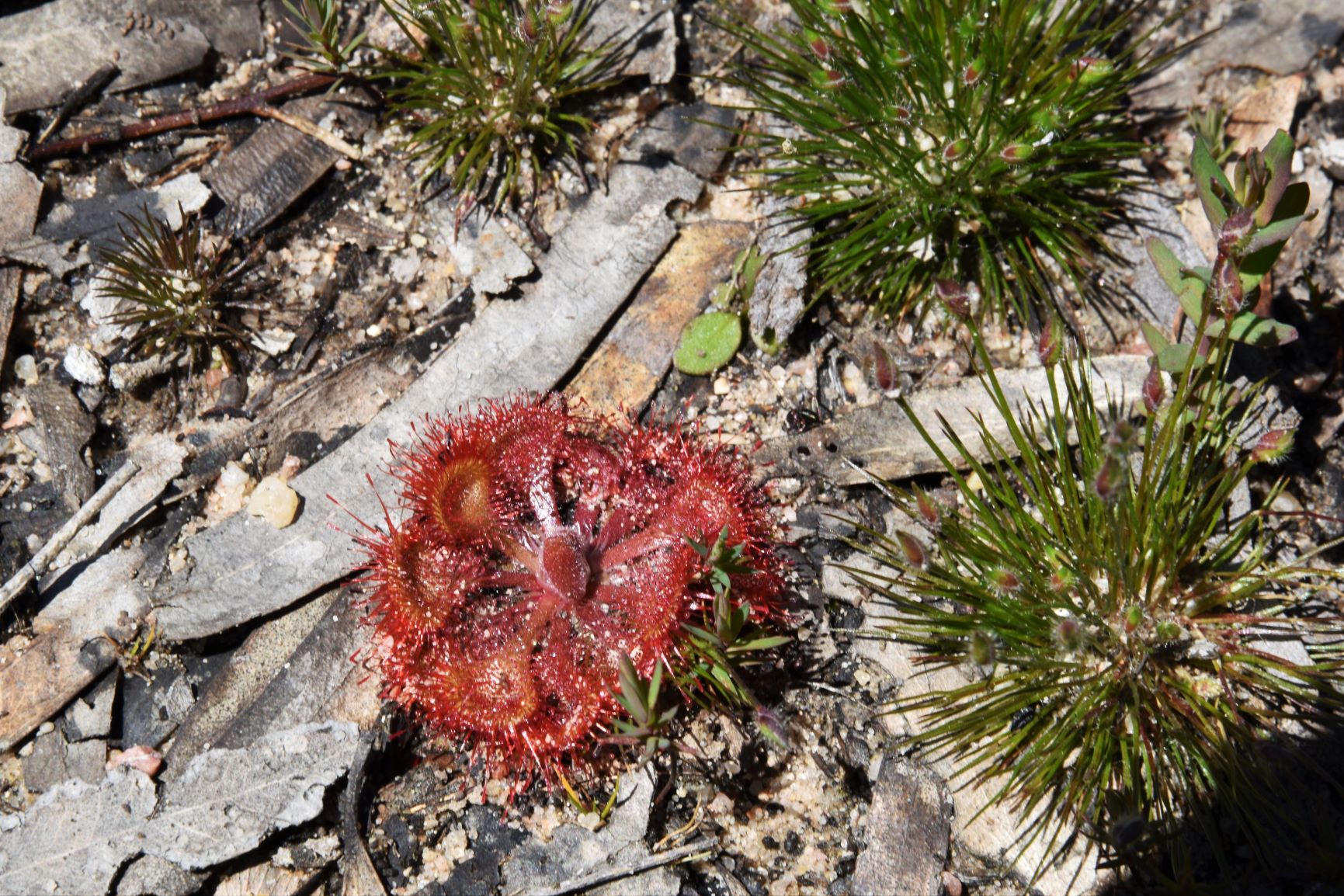
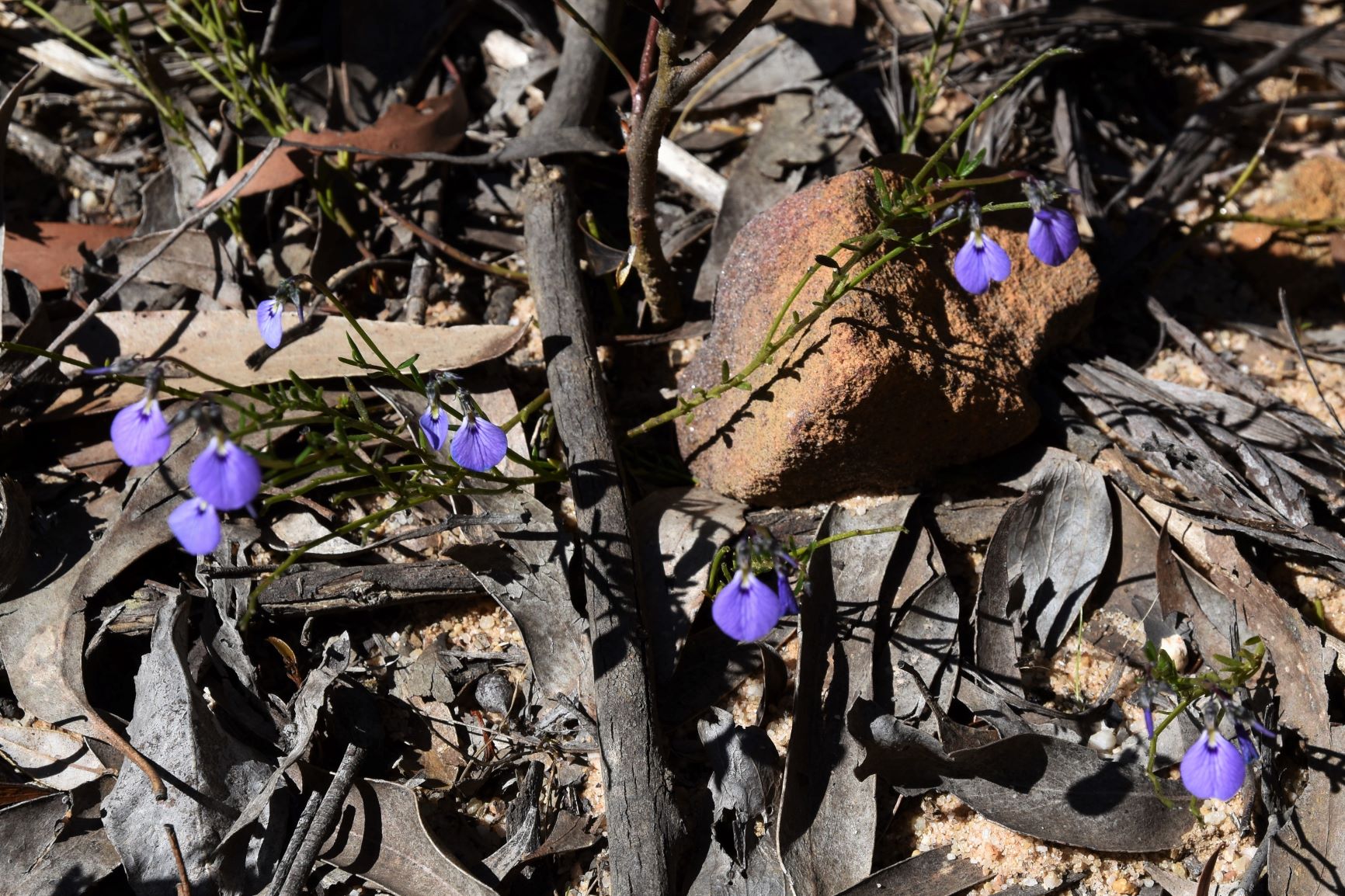
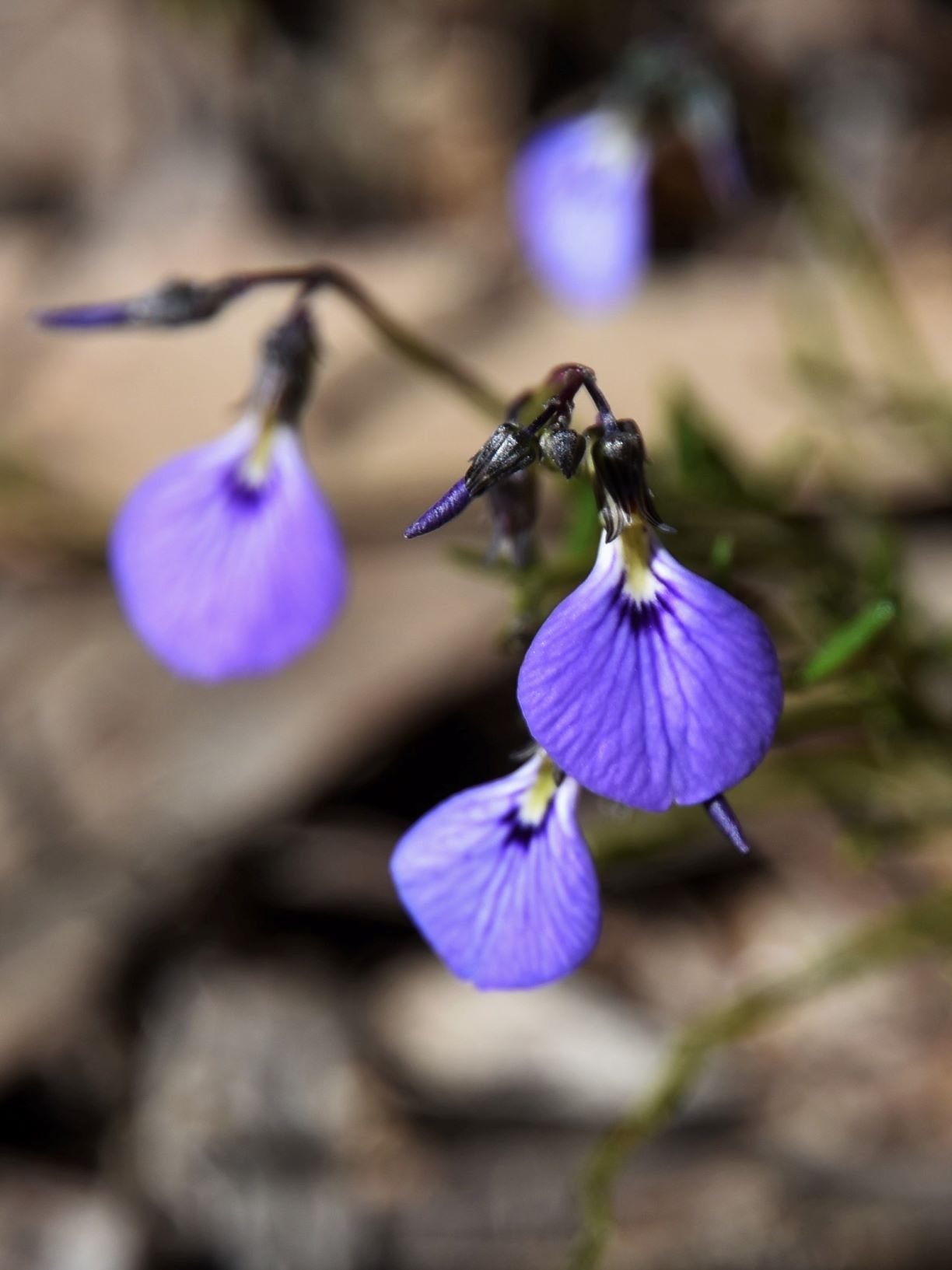
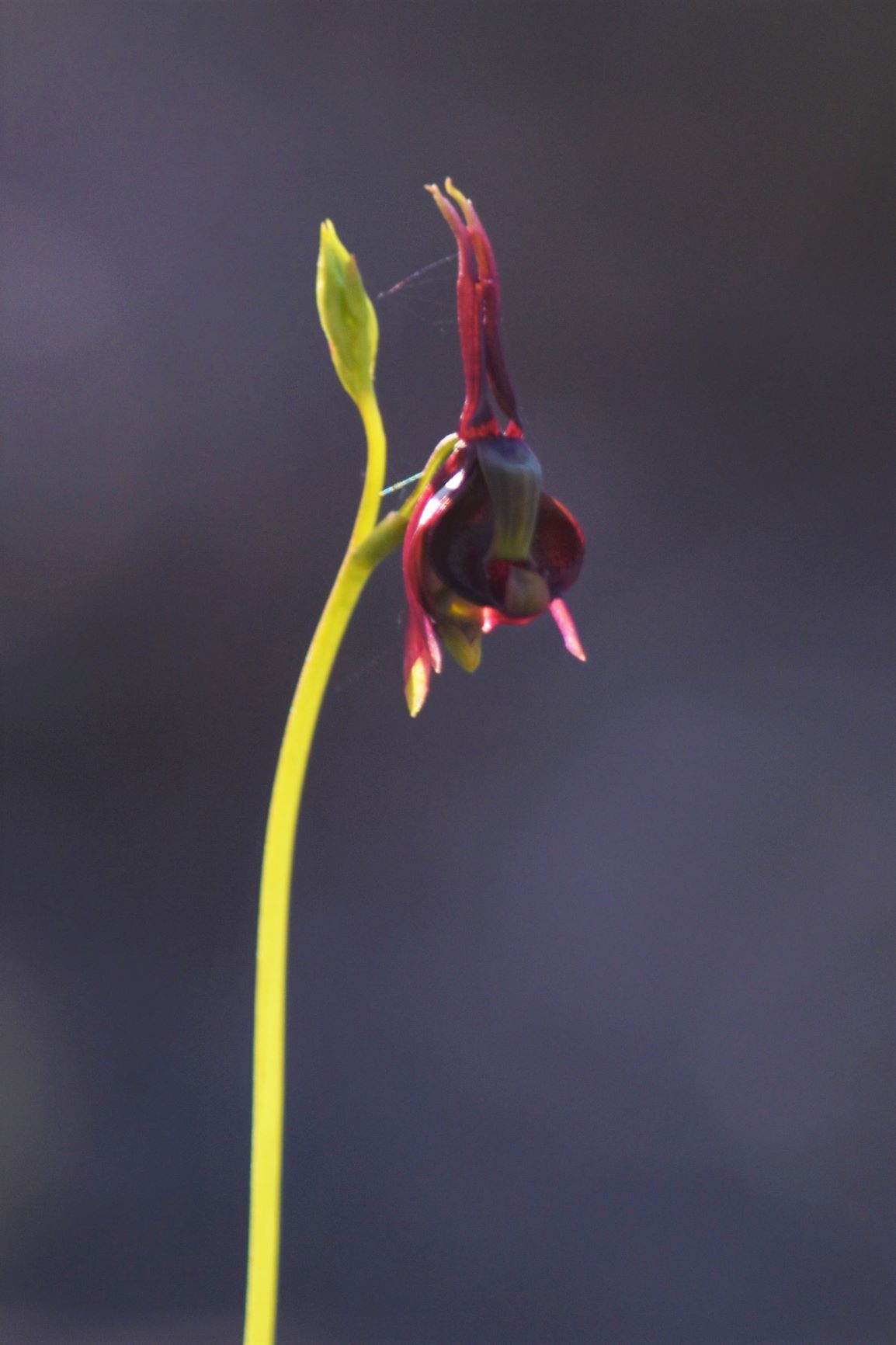
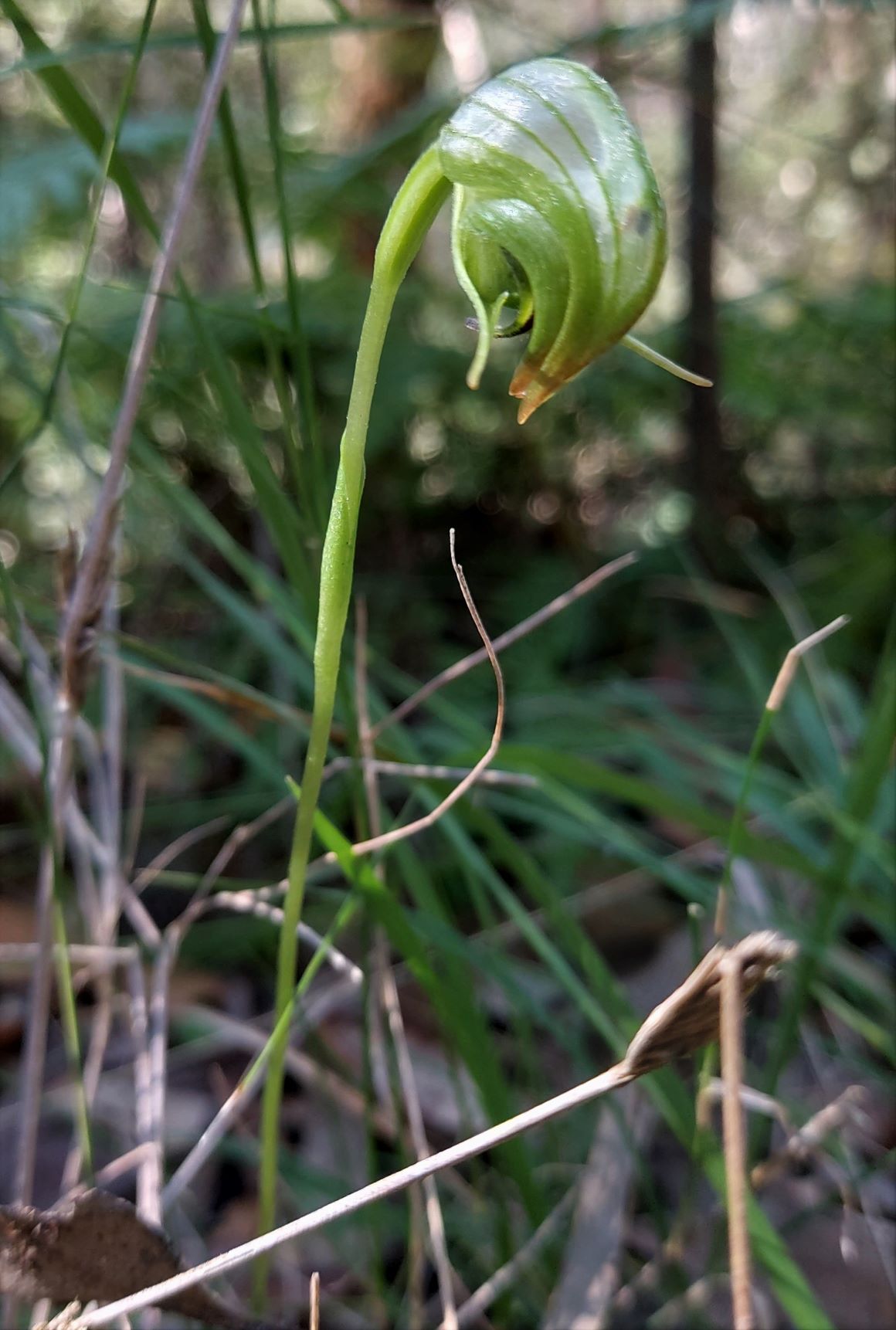
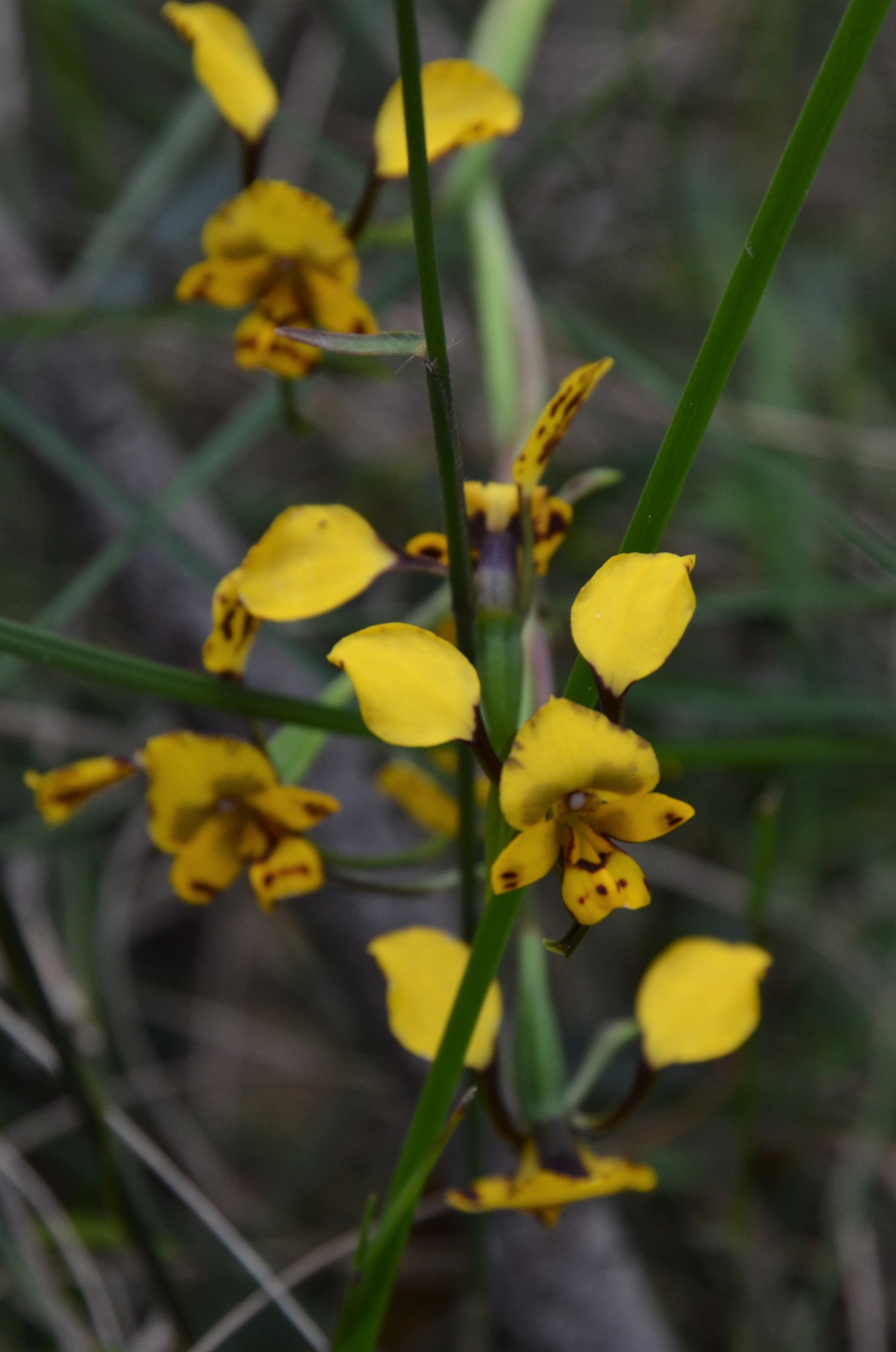



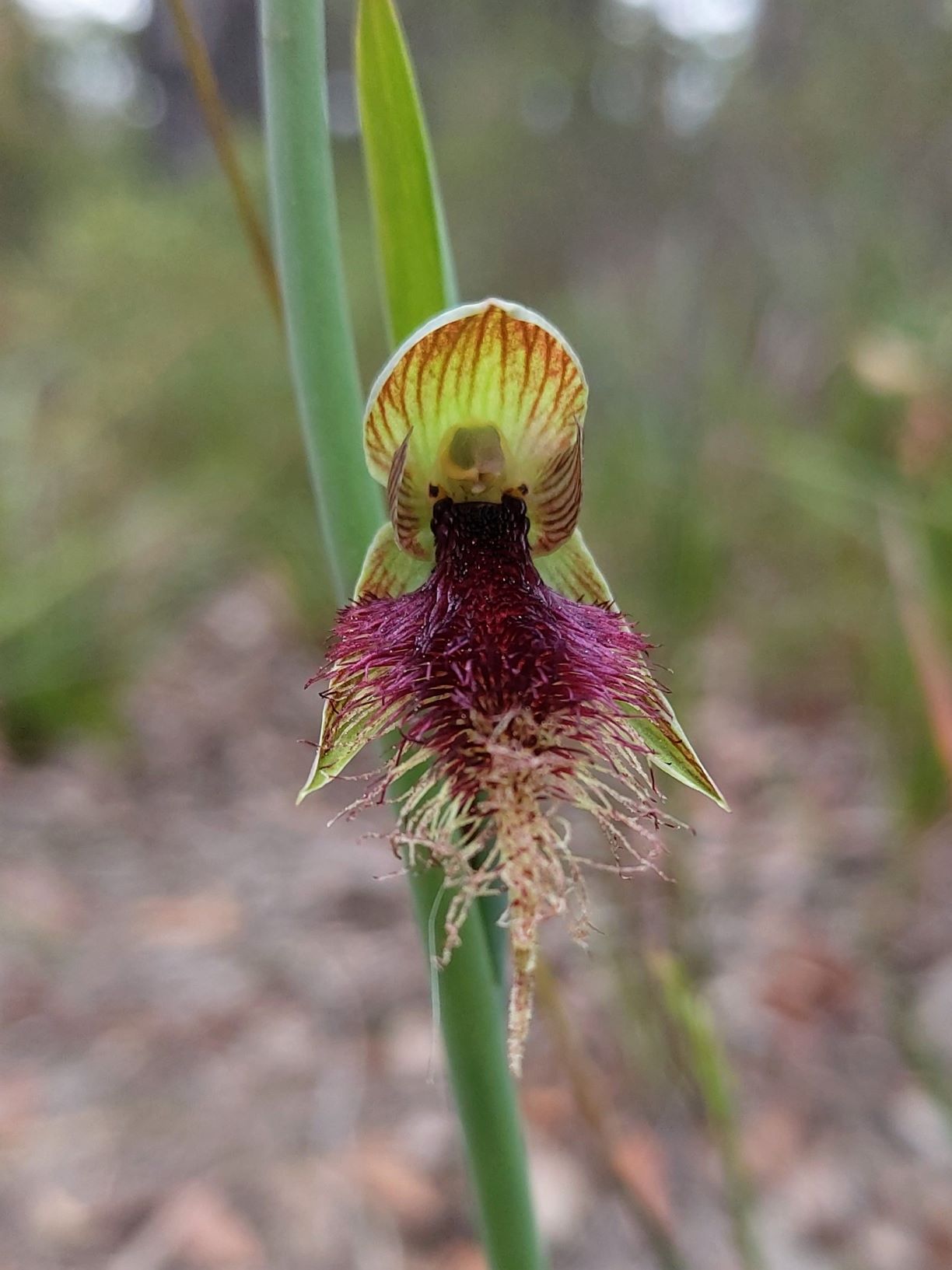 Calochilus robertsonii
Calochilus robertsonii